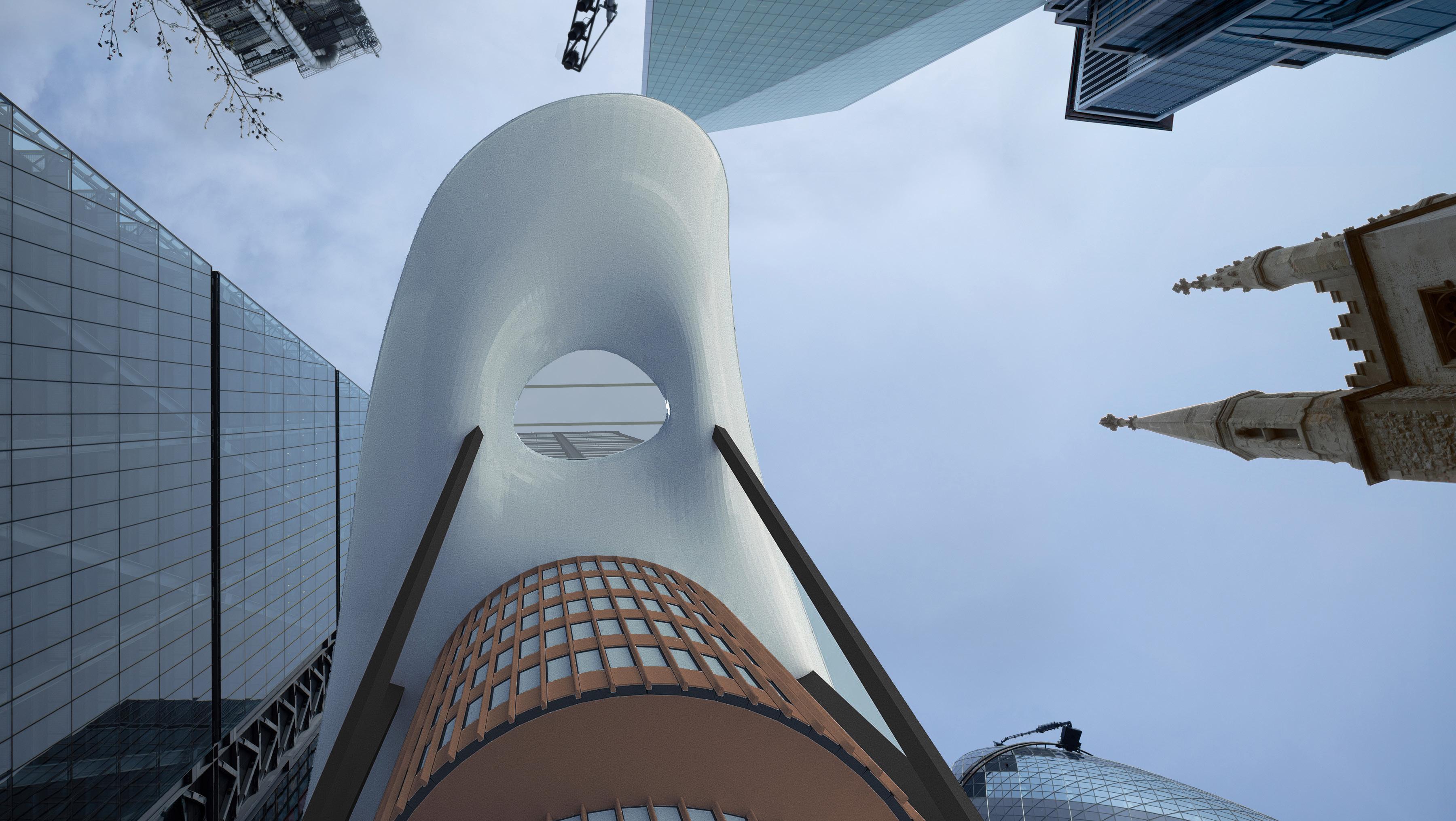Planning Application Ref. No: 23/01423/FULEIA
Neighbour Consultation
Representations on behalf of C C Land – 23 April 2024






Planning Application Ref. No: 23/01423/FULEIA
Neighbour Consultation
Representations on behalf of C C Land – 23 April 2024





These Representations have been produced with the assistance of the following:

Planning Consultant
JDA Planning Consultancy
Over a 35-year career John Adams has advised developers & funds, landowners, and local authorities on the delivery of complex development projects. In London this has included leading a research project for British Land on the future growth of the City, advising estates, such as the Church Commissioners, Hyde Park Estate, and the Mercers Covent Garden, securing planning permissions for: British Land and Barratt for Aldgate Place, a major mixed use development on the edge of the City; Eden Walk a high density mixed use development in Kingston town centre; leading the team responsible for UCL’s growth in Bloomsbury and East London; securing planning permission for Barratt London on the site of the former Institute for Medical Research in Mill Hill; advising HS2 on alternative forms of redevelopment of Euston Station as an expert witness.
John led teams delivering major redevelopment across Manchester City Centre, Liverpool One, Trinity Leeds, Southgate Bath, Green Park Reading & new communities including the local plan allocation for Welborne, Hampshire and planning permission for Fawley Waterside, New Forest. His management experience including setting up the Drivers Jonas Manchester office, a leading planning & development practice; and, for ten years, managing partner of the Deloitte planning team in London.

Heritage Consultant
Stephen Levrant Heritage Architecture
SLHA is a nationally recognised practice of Conservation Architects and Historic Building Consultants. At SLHA, we conform to the belief that detailed knowledge and understanding of both the historic environment and existing townscape character are fundamental to informing design proposals to ensure they are responsive to local character.
Stephen Levrant is a chartered architect and Principal Architect of SLHA. After graduating from the Architectural Association School of Architecture in 1975, Stephen subsequently attained a further Diploma in Conservation from the Architectural Association in 1979 and has been a member of the Institute of Historic Building Conservation since its inception. Stephen Levrant has been elected a Fellow of the Royal Society of Arts, and of the Association for Studies in the Conservation of Historic Buildings and served on the latter committee for many years.
As a practice, SLHA has carried out innumerable appraisals within various legislative environments throughout the life of the company and have made a particular speciality of addressing the requirements of the National Planning Policy Framework (NPPF) and the National Planning Practice Guidance (PPG) as well its predecessors. We work across the UK in planning/urban design and practical project construction, exclusively within the historic environment.

Landscape Consultant
Kim Wilkie
Each place has its own special character and identity –a continuous conversation between the physical form and the lives lived and shaped within it. As a landscape architect I try to understand the memories and associations embedded in a place and the natural flows of people, land, water and climate.
After 25 years of running his own practice, Kim now works as a strategic and conceptual landscape consultant. He collaborates with architects and landscape architects around the world and combines designing with the muddy practicalities of running a small farm in Hampshire, where he is now based.
Kim studied history at Oxford and landscape architecture at the University of California, Berkeley, before setting up his landscape studio in London in 1989. He continues to teach and lecture in America; writes optimistically about land and place from Hampshire; and meddles in various national committees on landscape and environmental policy in the UK.
Currently Kim is working on a combination of new town extensions, Oxford campuses, private estates, the redesign of Wakehurst Place for the Royal Botanic Garden and a sculptural earthform for the Dulwich Picture Gallery.
Architectural Consultant
de Metz Forbes Knight Architects
dMFK Architects are appointed by C C Land on various projects in and around The Leadenhall Building. We have taken on the role of informal architectural guardians of the building, gently addressing matters that pertain to it’s architectural integrity, designing ongoing upgrades to keep it in step with the market, and assisting C C Land in matters affecting it’s maintenance.
We are an award-winning AJ100 architectural practice having been established for over 20 years, with one of our founding partners, Paul Forbes, having cut his teeth at Richard Rogers Partnership. We regularly work with important 20th Century buildings including The Salters Hall (Sir Basil Spence), Tower 42 (Richard Siefert), 201 Bishopsgate (SOM), Voysey House (CFA Voysey), and many others, and our client list includes The Office Group, British Land, Barratt London, Land Securities, Derwent London, Great Portland Estates, Lazari, WRE, The Royal Opera House, and Tate Britain.
In the case of The Leadenhall Building, we have been asked to assist in preparing architectural information to support their Representations regarding the 2023 planning application for 1 Undershaft, in particular the effect on the public realm which serves both buildings, and the wider city.

Planning Legal
Taylor Wessing
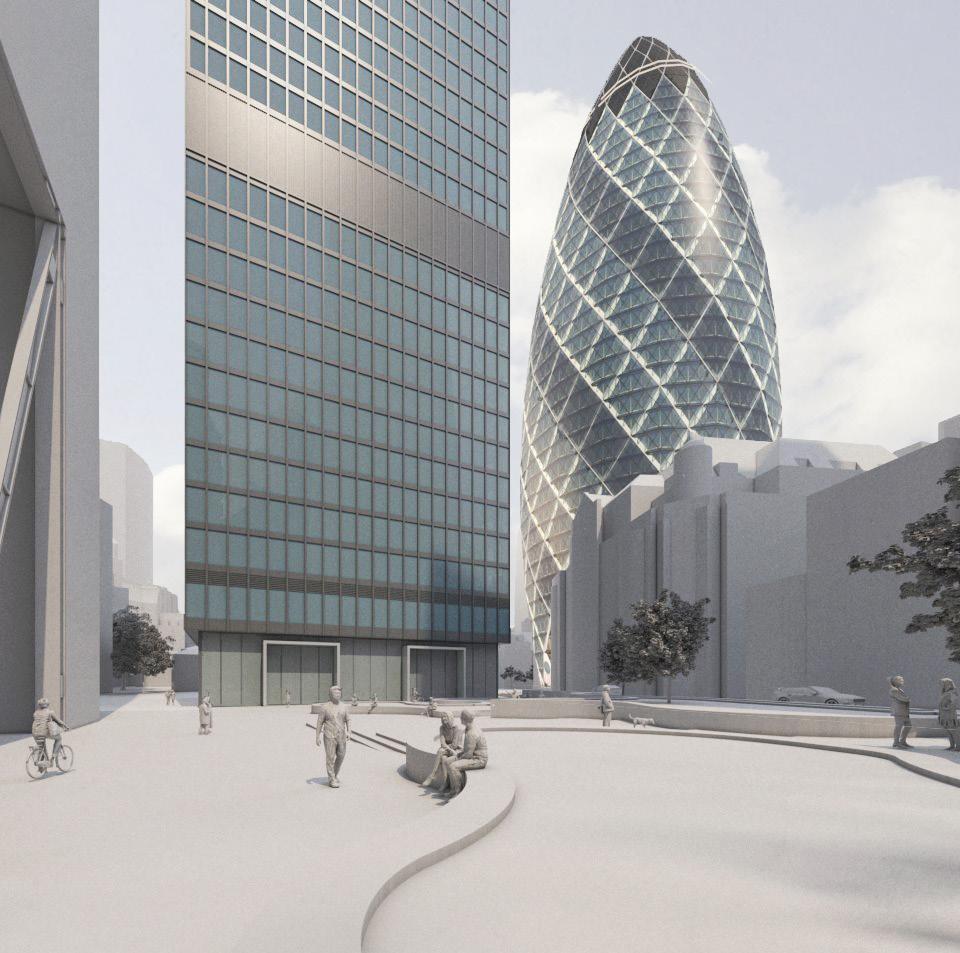
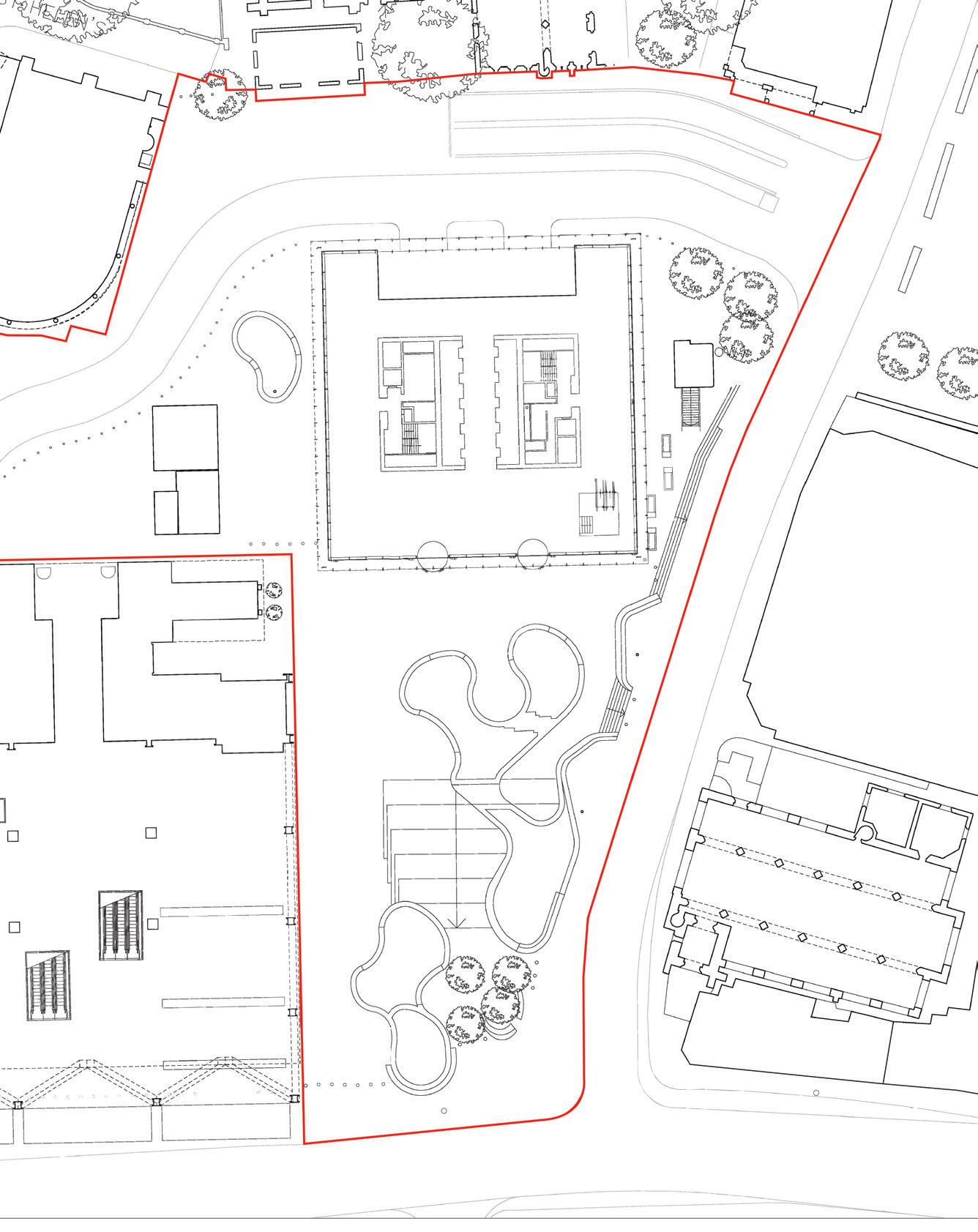
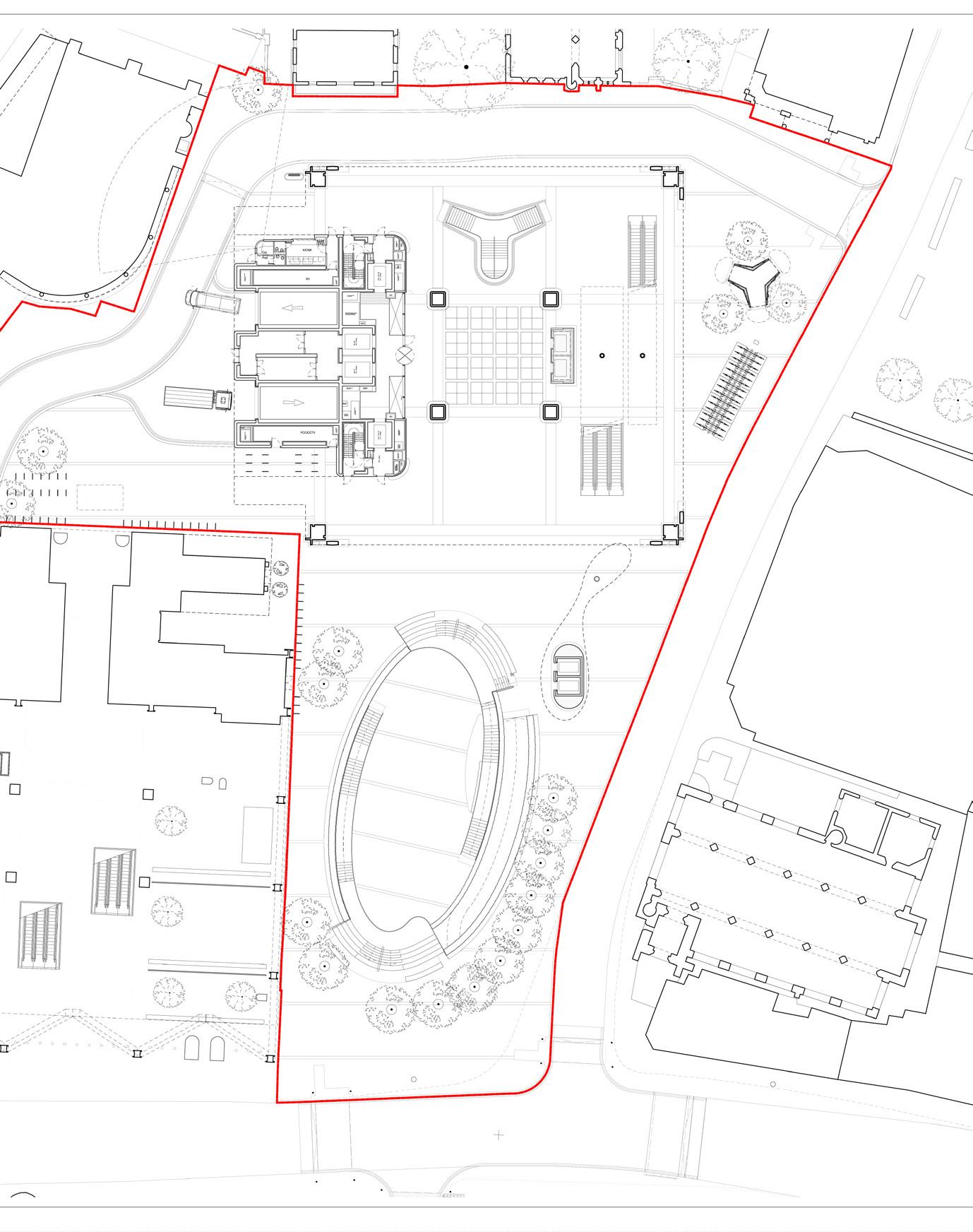
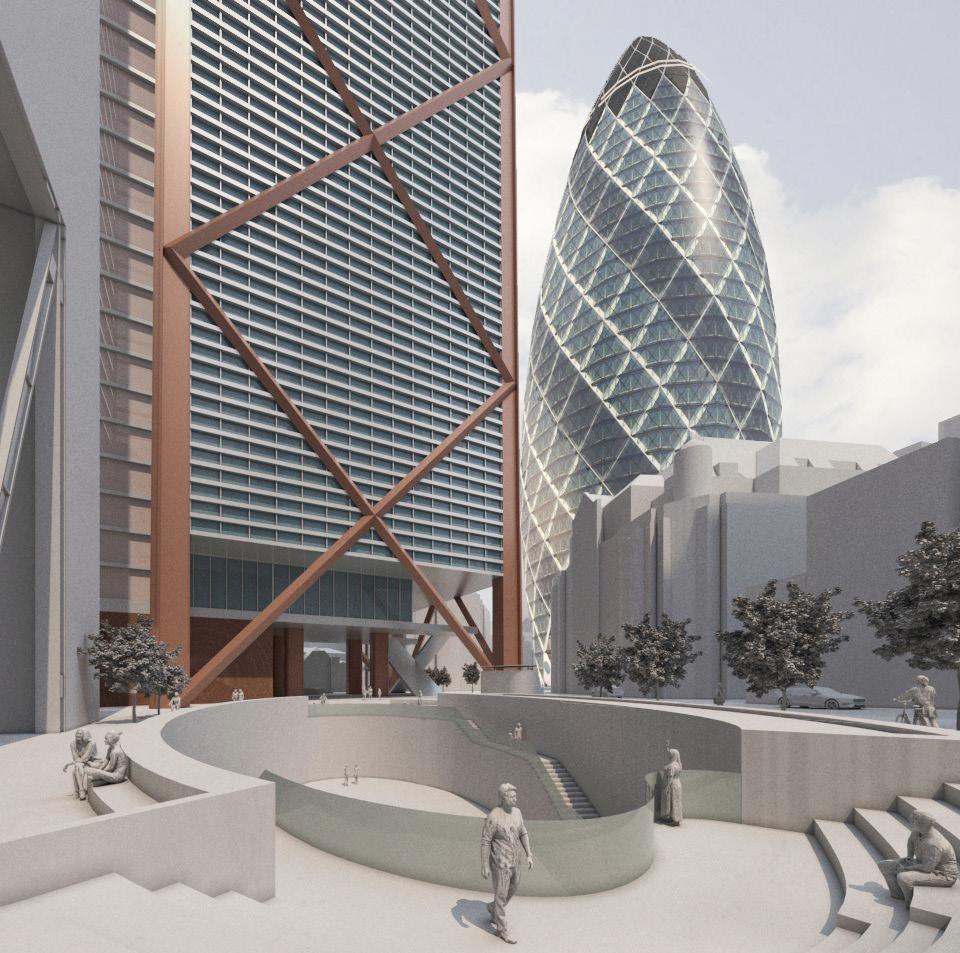
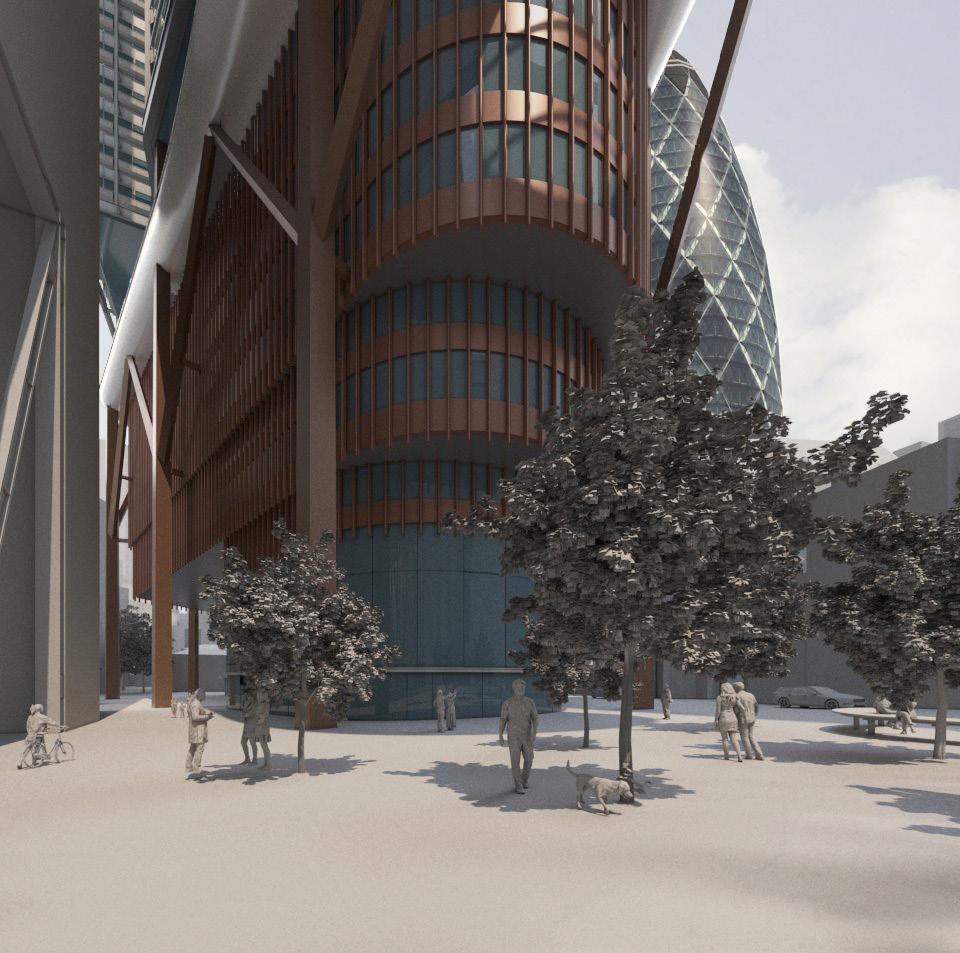
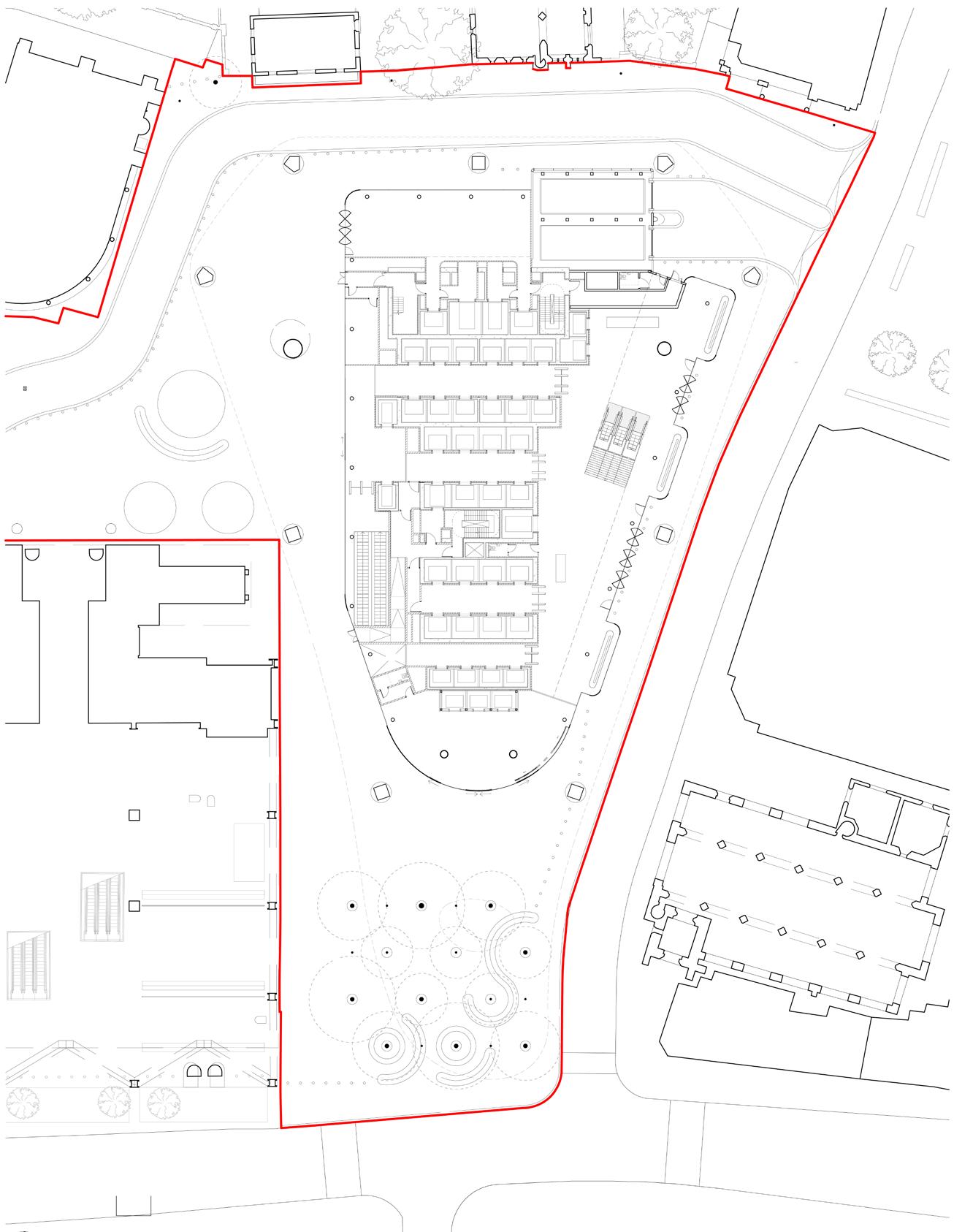
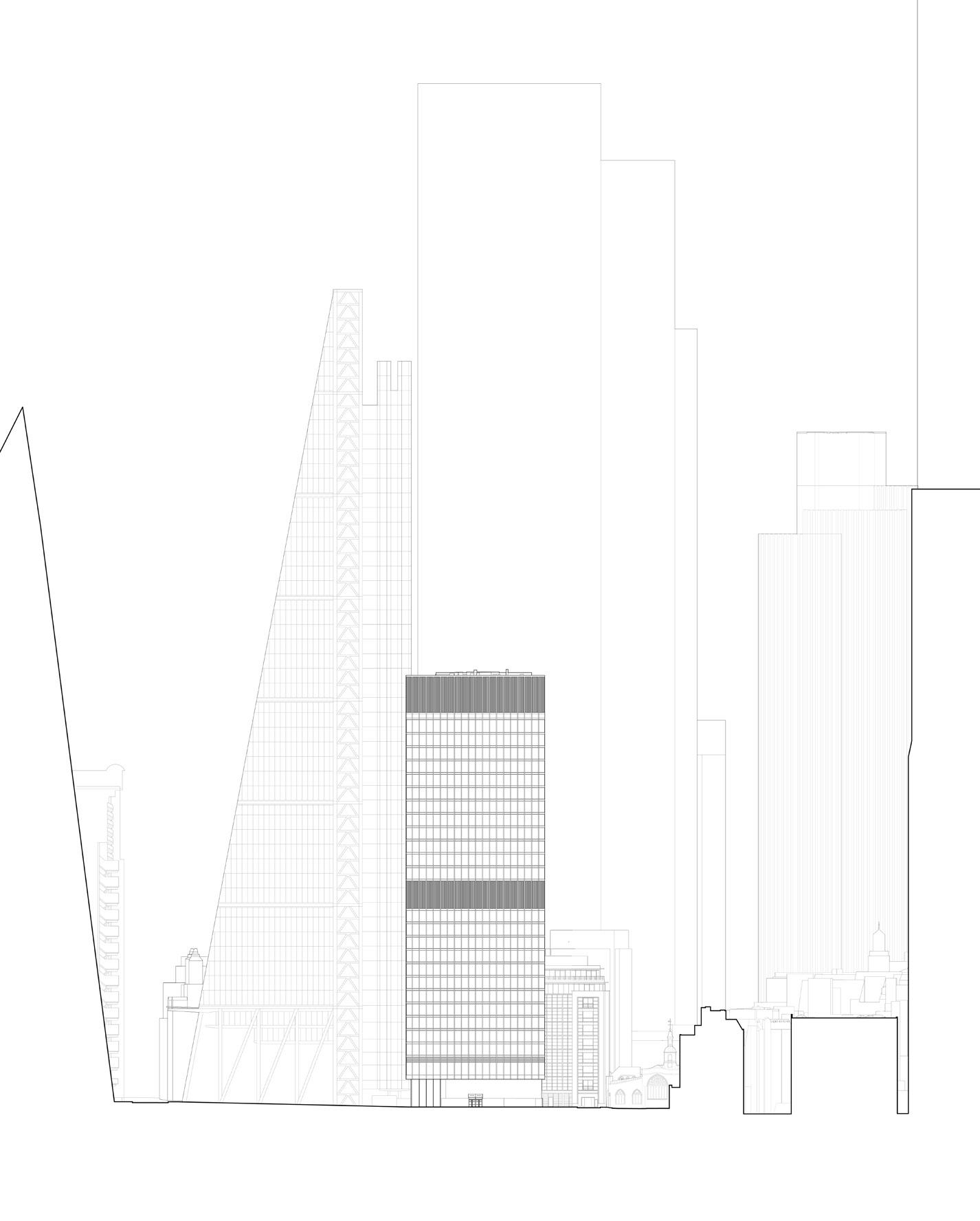
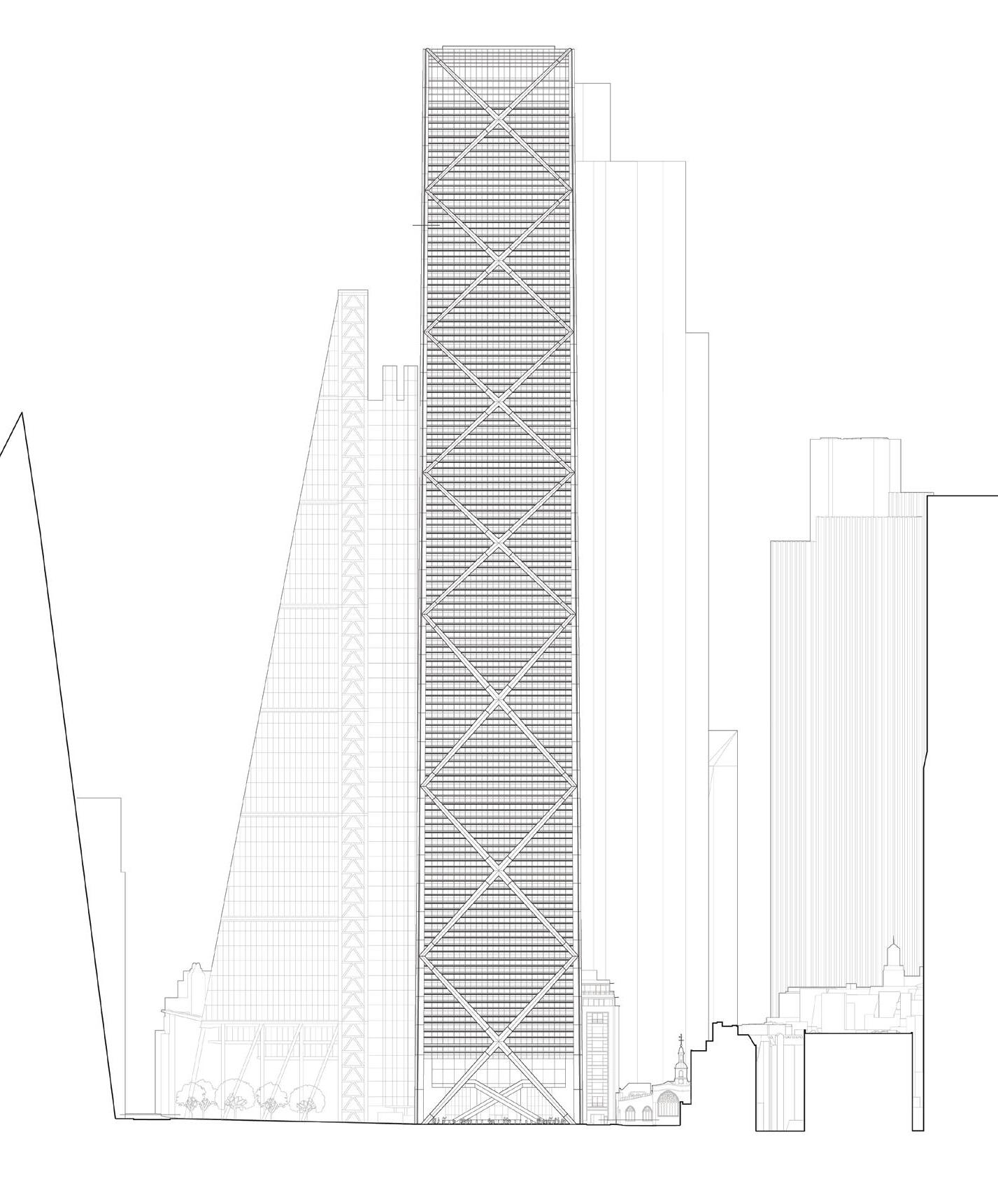
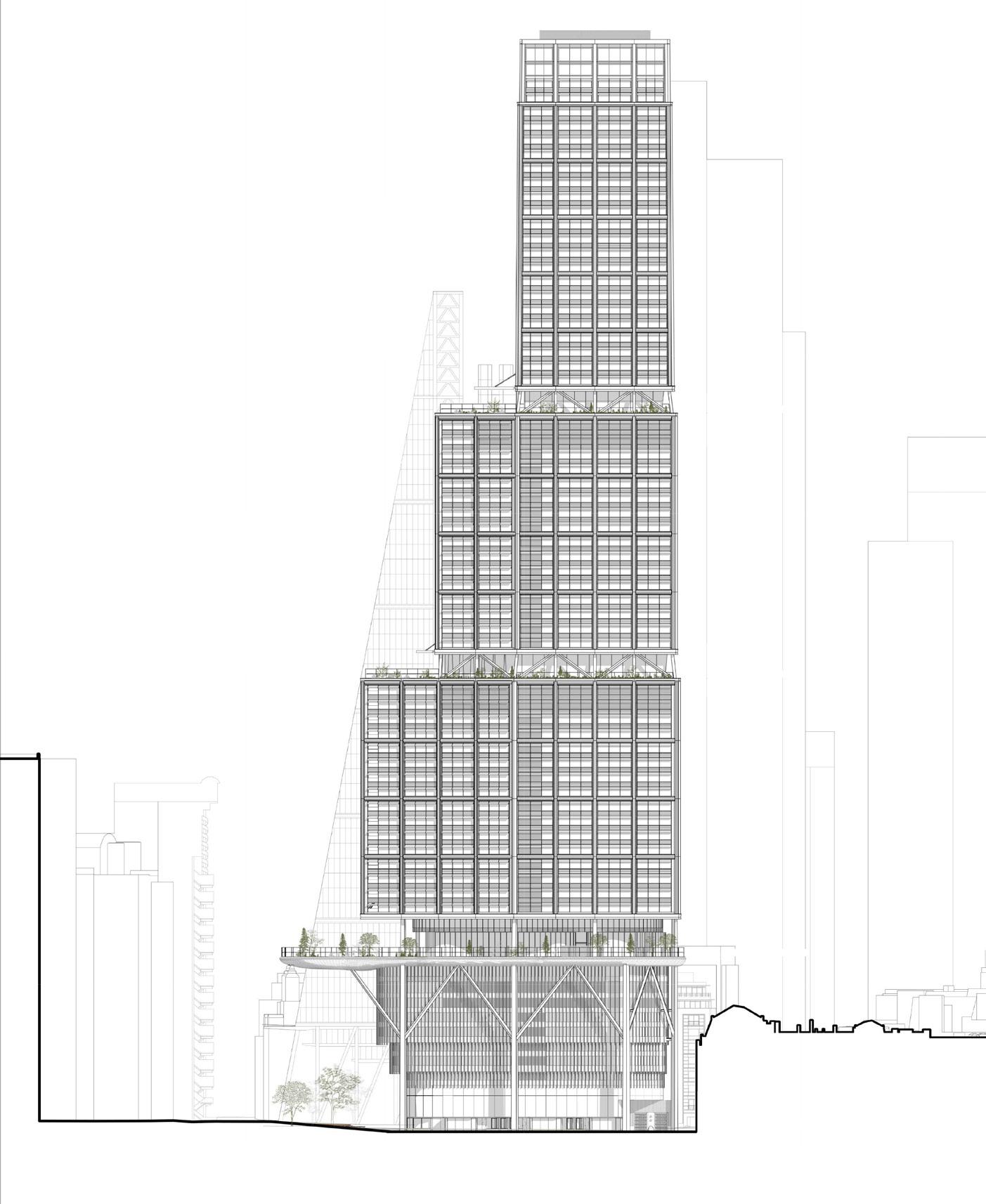











Total public realm: 4,505 m2
St Helen’s Square public realm: 2,433 m2 of which:
View of sky: 2,388 m2
Sky blocked by canopy / undercroft: 45 m2

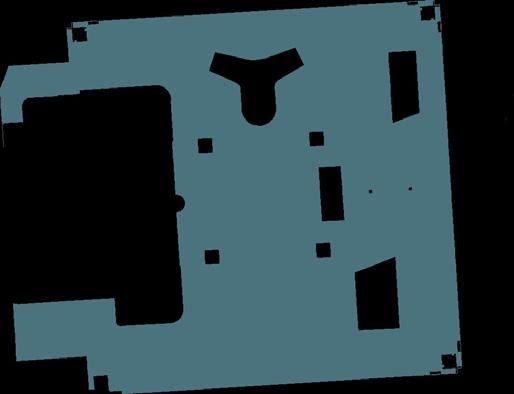














Total public realm: 5,361 m2 (+856) (+19.0%)
St Helen’s Square public realm: 2,438 m2 (+5) (+0.2%) of which:
View of sky: 2,438 m2 (+50) (+2.1%)



Total public realm: 3,770 m2 (–735) (–16.3%)
Proposed internal footprint: 721 m2 (exc. from public realm) Proposed internal footprint: 25 m2 (exc. from public realm) 2019
St Helen’s Square public realm: 1,723 m2 (–710) (–29.2%) of which:
View of sky: 723 m2 (–1,665) (–69.7%)
View of sky through glass canopy: 40 m2
Sky blocked by canopy / undercroft: 960 m2
As owner of the neighbouring Leadenhall Building and active stakeholder in the City of London, C C Land have provided commentary on the 2023 redevelopment plans for 1 Undershaft as part of the statutory post submission consultation process.
We recognise the significance of the 1 Undershaft site in the City Cluster and the role this site needs to play in the future of the City of London.
We understand the acute importance of getting plans for the redevelopment of the 1 Undershaft site absolutely right.
C C Land fully support the existing 2019 planning consent for 1 Undershaft.
However we believe the 2023 redevelopment plans for 1 Undershaft are materially compromised on several matters and should not progress as currently submitted:
a. Substantive Loss of Existing Street Level Public Open Space
– The need to preserve and enhance the limited supply of public realm in the City of London is widely agreed and un-opposed.
– The existing area of St Helen’s Square is 2,433 m2. It is all open to the sky and elements. A substantial 29.6% (721 m2) of that area will be lost because of the increased ground level footprint.
– This loss is the equivalent of approximately 7% of publicly accessible open space in the eastern cluster. The eastern cluster already has, by far, the lowest proportion of open space in The City, and there is a recognised need for more open space.
– The development proposal with its over-hanging structure and protruding tongue will leave just 29.7% (723 m2) as open space open to the sky. Most of the space will be covered.
– Viewing platforms and access controlled areas are an acceptable addition, but not an equivalent replacement for street level public open space.
– The proposals will adversely impact workers, residents and visitors ability to access and enjoy “impromptu” amenity in the City Cluster
b. Detrimental Impact on Existing Public Amenity
– The emphasis on creating a park and public offer in the sky will draw pedestrian activity and visitors away from street level, reducing its vitality and viability at a time when bringing as much activity as possible into the streets and spaces of the City is crucial.
– The proposals lower the quality of the environment at street level and demote St Helen’s Square from the largest public open space in the City Cluster to a secondary, covered and unwelcoming transient area.
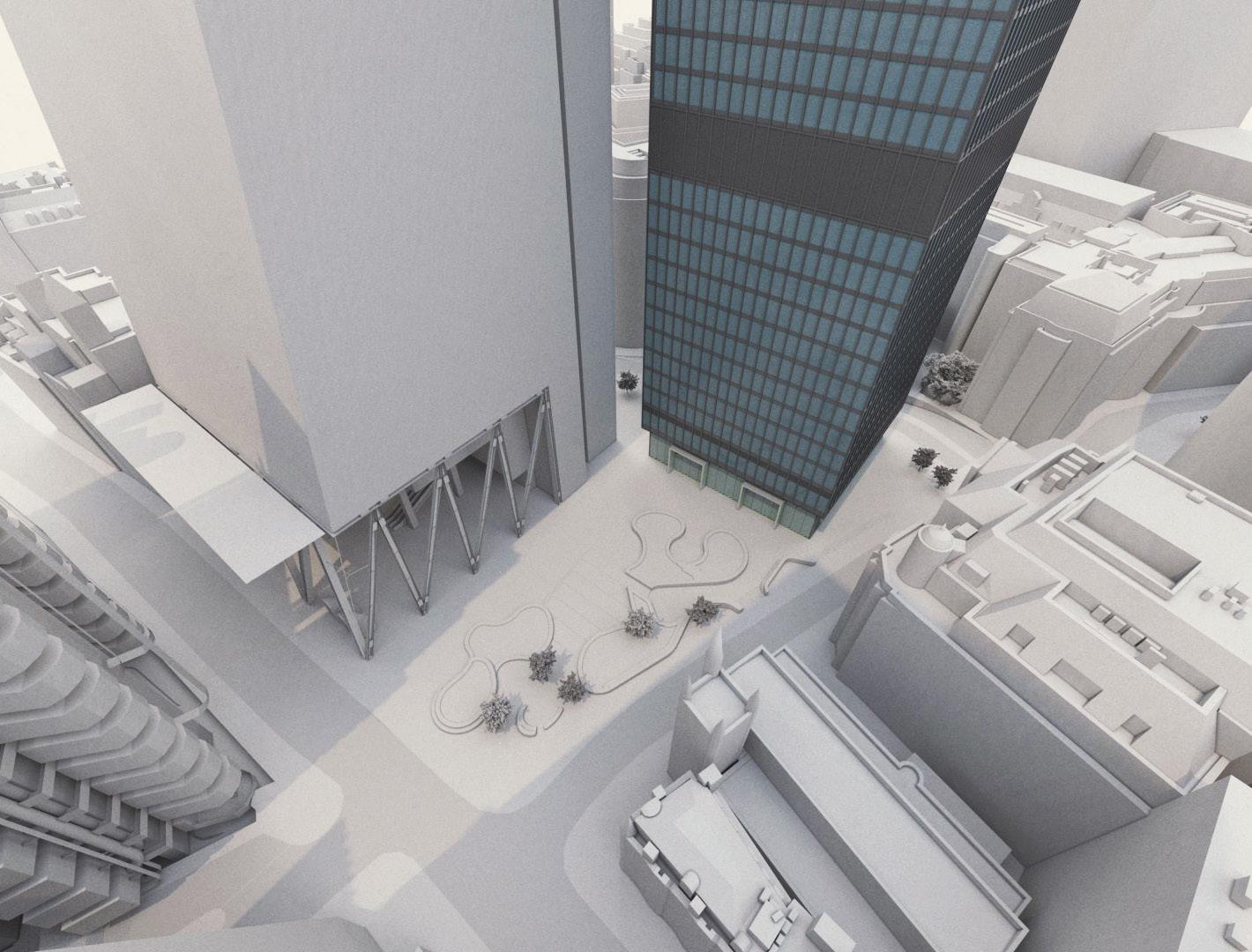
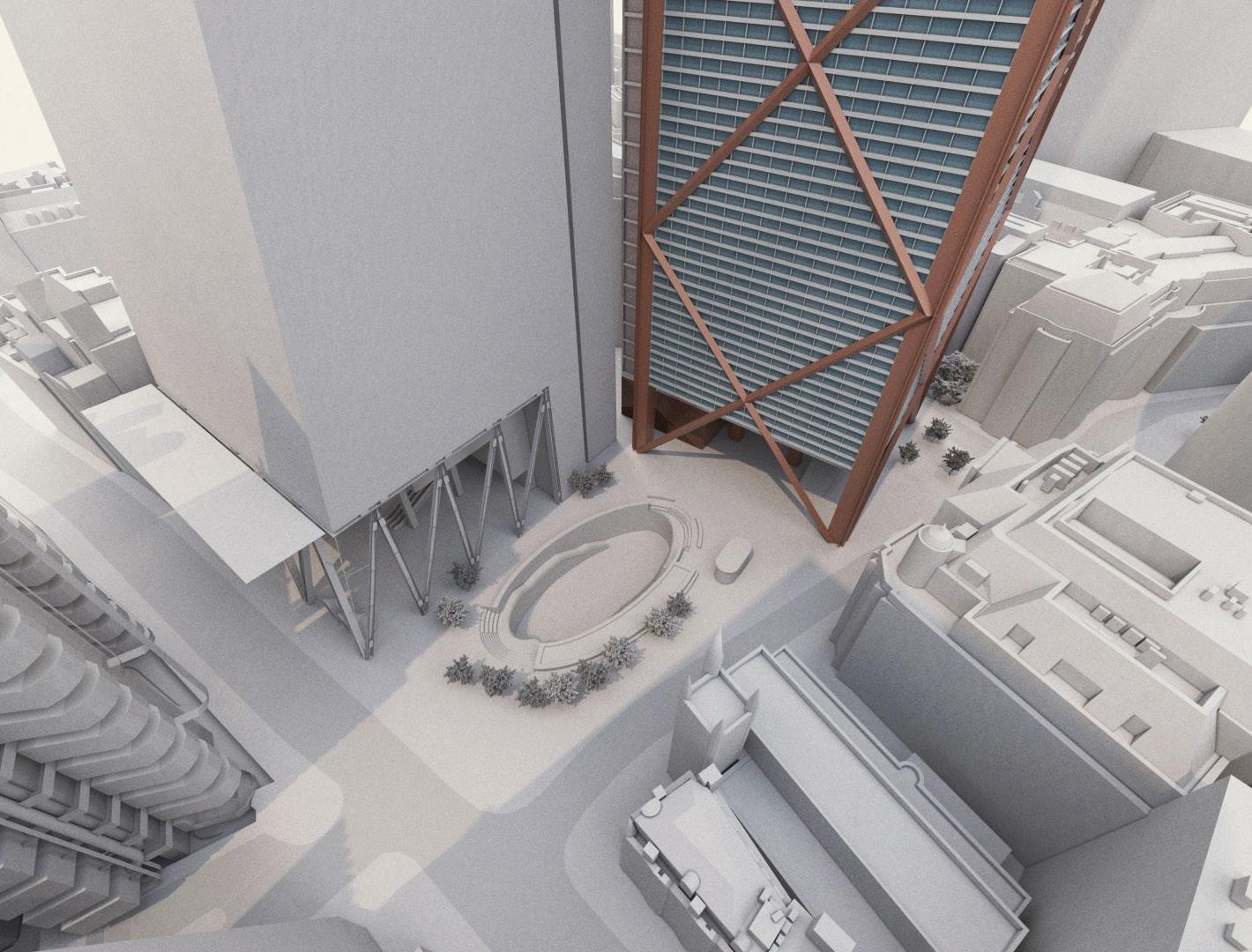
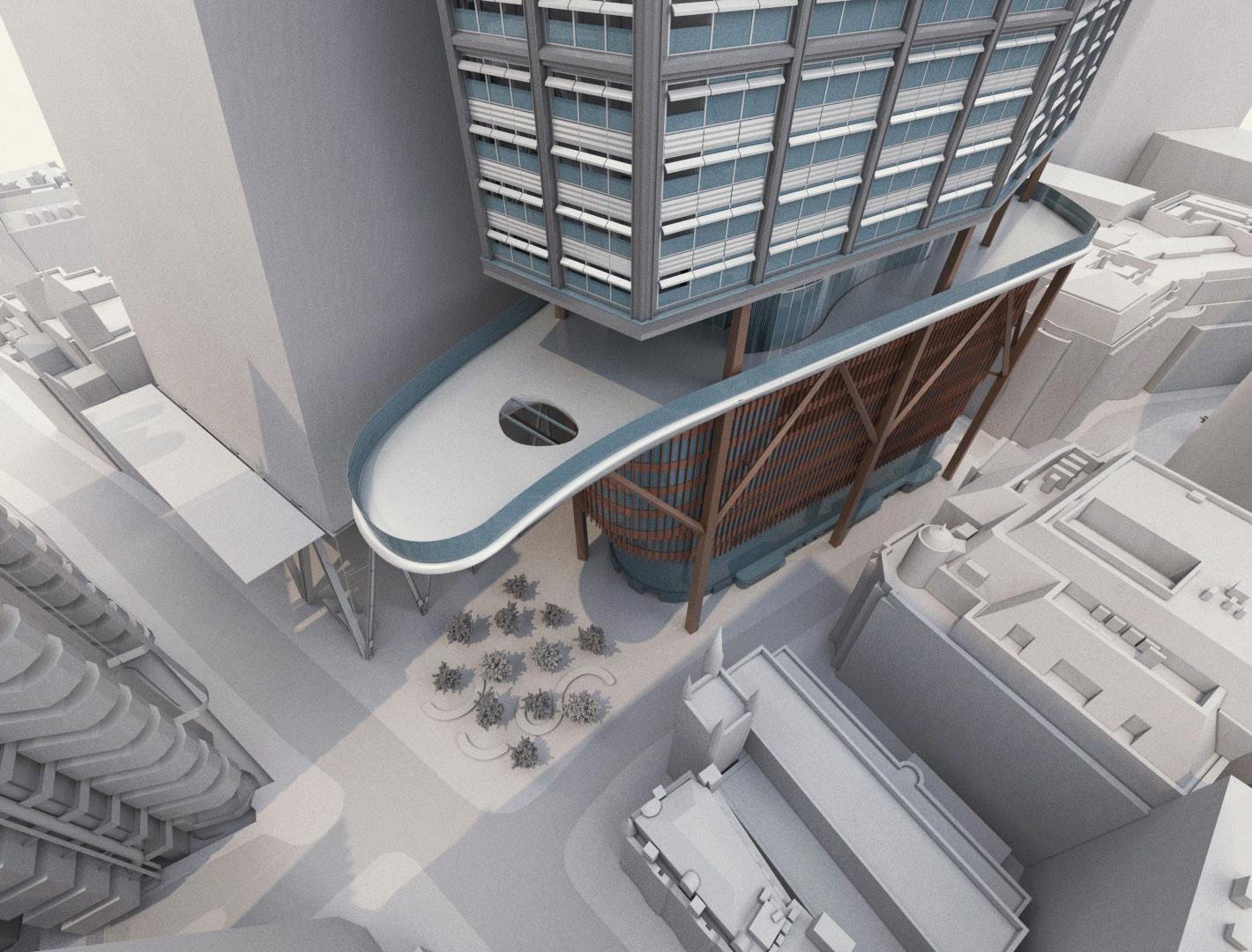
– The combination of medieval Churches and outstanding modern architecture viewed against the skyline from an outdoor open piazza makes the environment surrounding 1 Undershaft one of the most powerful and unforgettable experiences of the City.
– The proposals stacked massing and alien Level 11 tongue, which overhangs most of the public realm, brutally undermines the beauty, character and attraction of the existing environment.
– The loss of connectivity between the two Grade I medieval churches (a substantial heritage benefit of the consented scheme omitted from the 2023 proposals).
– The City Cluster is renowned for its architectural excellence, hosting some of the most recognisable and iconic tall buildings in the world. The overbearing and oppressive 2023 redevelopment plans fall objectively short of beauty.
The 2023 redevelopment plans conflict with the 10 key policies relating to design, tall buildings, heritage and public realm in the Development Plan which comprises the London Plan 2021 and the City of London Local Plan 2015. It also conflicts with the emerging City Plan 2040 submission draft.
There is serious harm to the public realm, townscape and setting of heritage assets. Considerable weight should be given to the harm arising from the conflict with the Development Plan.
The 2023 redevelopment plans have a detrimental impact on occupiers of the eastern half of The Leadenhall Building in terms of overlooking, loss of daylight and loss of views.
Whilst we believe these are relevant concerns, it is accepted that they are not planning matters and our objections are not progressed on this basis.
We have considered the 1 Undershaft proposals primarily as a long term stakeholder in the future of the City of London.
We request that revisions are implemented to the 2023 redevelopment plans for 1 Undershaft which deliver:
– No loss of street level public open space from the existing situation
– Preserve and enhance St Helen’s Square as a vitally important civic space and focus for placemaking in the City Cluster for workers, residents and visitors
– No harmful townscape or heritage impact
– Architectural excellence within the City Cluster
The 2023 redevelopment plans for 1 Undershaft do not comprise the optimum solution for this critical site.
If unchanged, we believe Officers would be unable to support the 2023 redevelopment plans and the Planning Applications Sub Committee should refuse the application until the material issues outlined in this document are satisfactorily resolved.
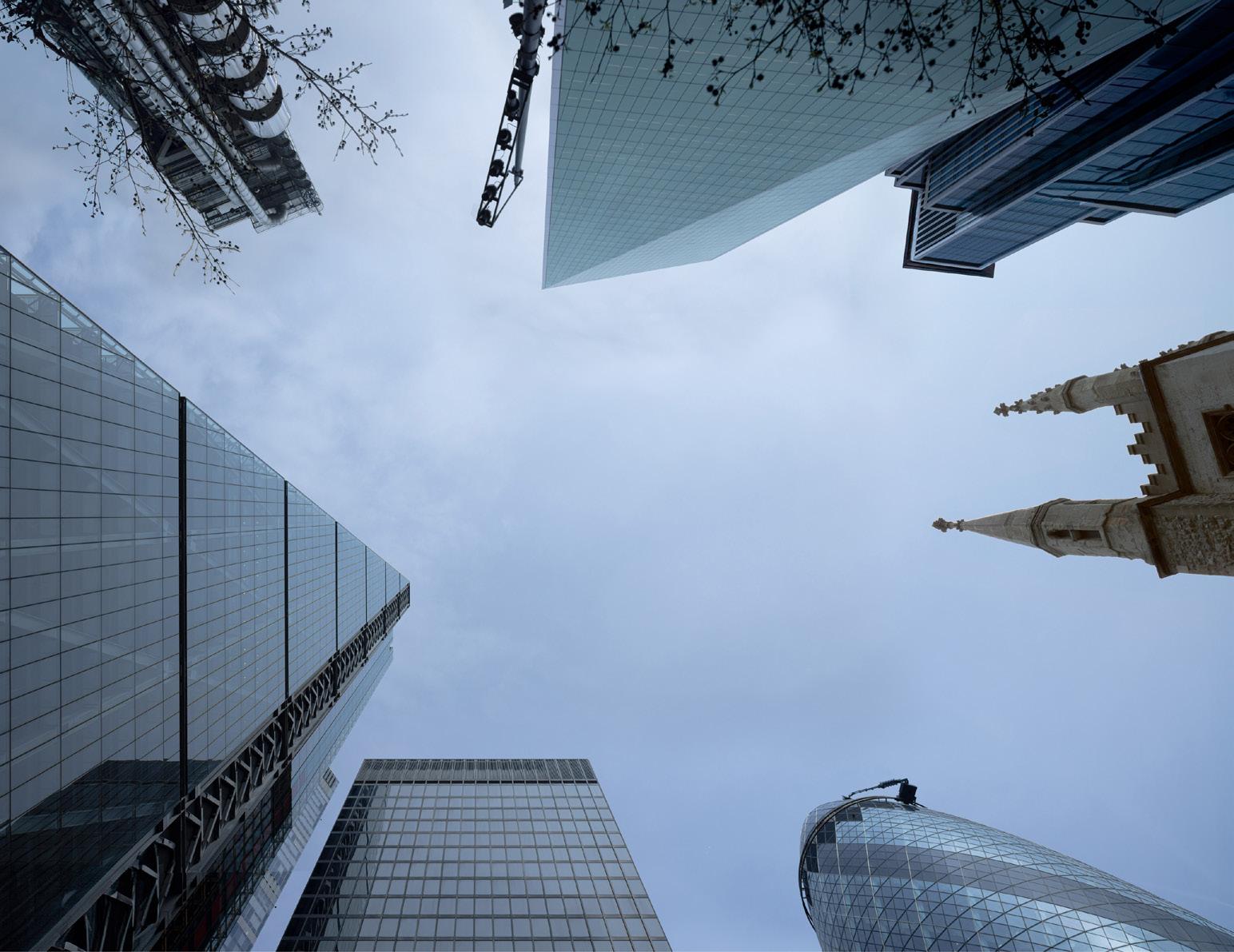

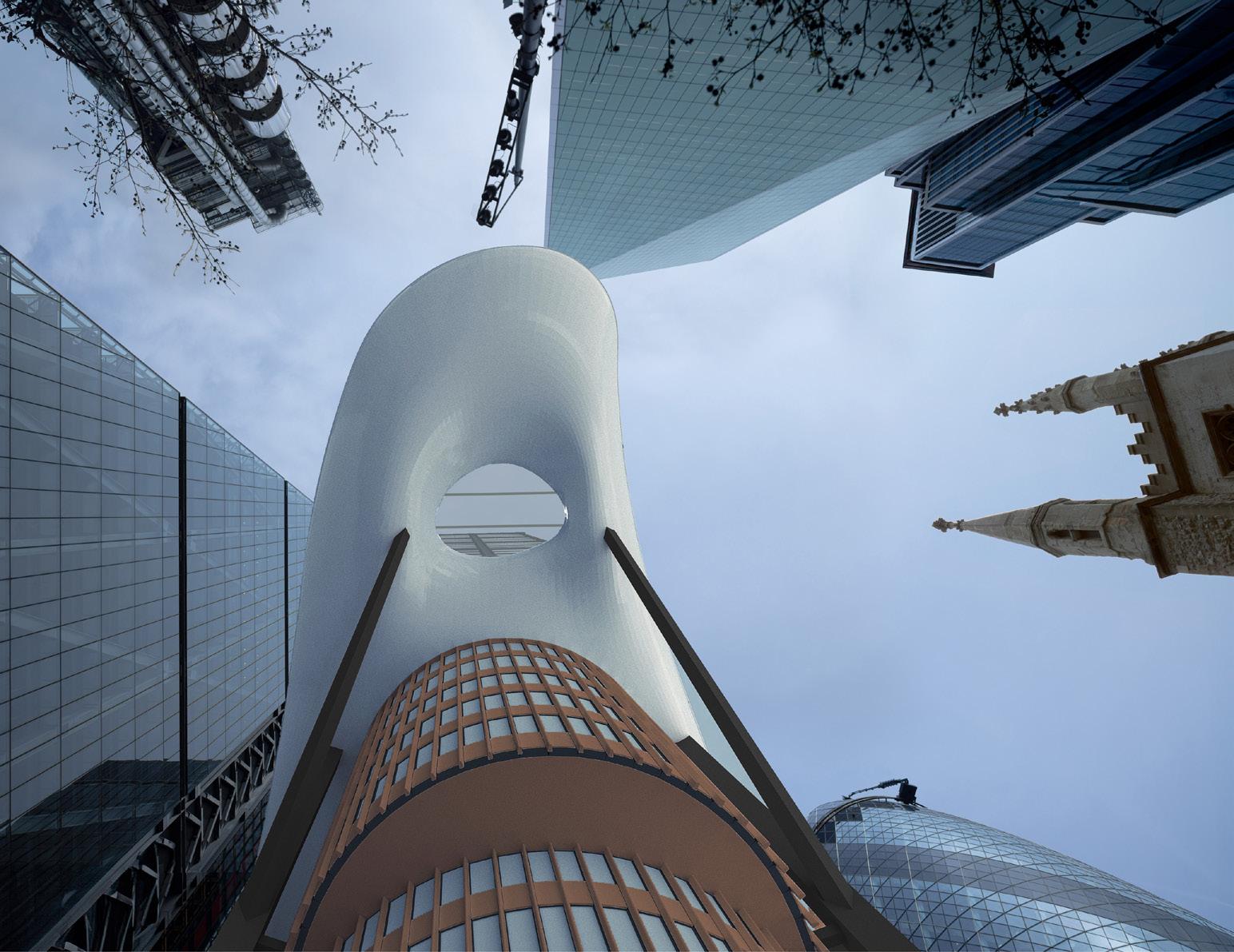

This document comprises Representations on the 2023 redevelopment plans for 1 Undershaft London EC3A 8EE as detailed within Planning Application Ref. No: 23/01423/FULEIA
It has been produced on behalf of C C Land, owner of The Leadenhall Building by the following professional team:
Architect dMFK
Landscape Architect
Kim Wilkie
Heritage Consultant Stephen Levrant Heritage Architecture Planning Consultant JDA Planning Consultancy Limited Planning Legal Taylor Wessing
Headquartered in Hong Kong, C C Land are generational investors in prime real estate in London. The Leadenhall Building was acquired in 2017 and comprises the Group’s principal asset.
C C Land are a proactive stakeholder in the City of London:
– Sit on the Board of the City Property Association (CPA);
– One of the founding Members of the EC Bid;
– Sponsor the Sculpture in the City Programme; and
– Support the One City digital platform promoting the Square Mile.
C C Land believe in the City of London and share the City Corporation’s aspirations for the future of the Square Mile and the City Cluster in particular.
It is clear that these 2023 redevelopment plans proposals differ markedly from the existing 2019 consent for 1 Undershaft.
The proposals now have a material impact upon The Leadenhall Building and St Helen’s Square and significant implications upon our setting, our occupiers, and those who work/reside within and visit the City of London.
The 2023 redevelopment plans have a detrimental impact on occupiers of the eastern half of the Leadenhall Building in terms of overlooking, loss of daylight, and loss of views. Whilst we believe these are relevant concerns, we understand that they are not planning matters. C C Land have considered the 1 Undershaft proposals primarily as a long term stakeholder in the future of the City of London.
C C Land consider it is incumbent upon stakeholders to engage in the planning and development process. We advised the City of London on 21 February 2024 of our intention to submit formal representations as part of the Neighbour Consultation process.
The professional team have been provided information from the Applicant (see chapter 1.1) and have reviewed all documentation submitted on the City of London’s planning portal.
C C Land’s assessment has focused on the public realm and street scene at the base of the tower.
1. Photo of consultation drawings and model, October 2023.
2. Extract of information provided at initial stakeholder presentation, 31 October 2023.
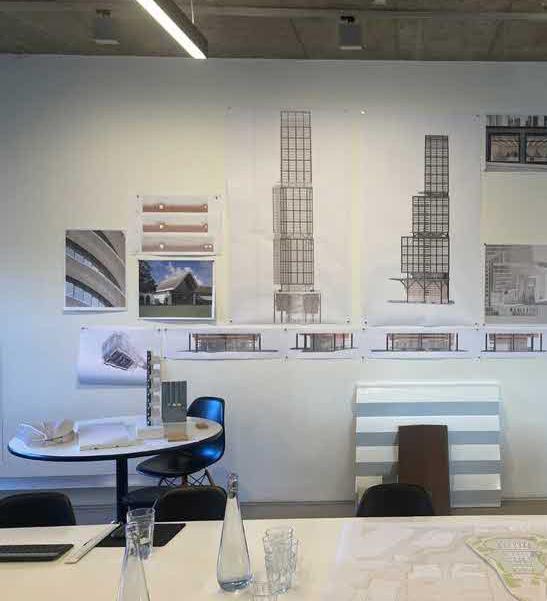
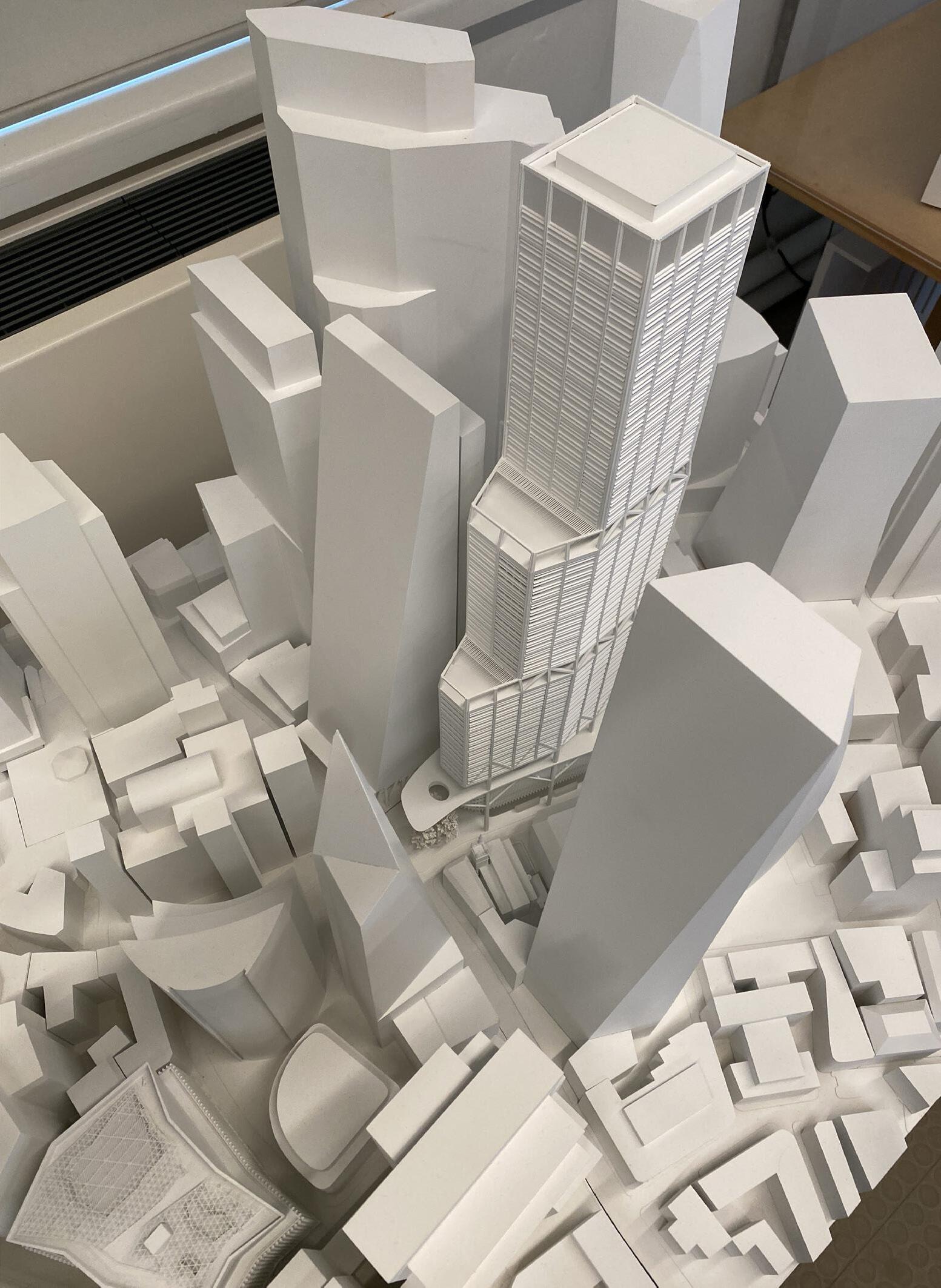
STAKEHOLDER PRESENTATION
Pre-Application Consultation
The Statement of Community Involvement submitted with the planning application Ref. No: 23/01423/FULEIA states that engagement with the City of London Corporation planning department and other stakeholders commenced in early 2022.
C C Land initiated contact with the Applicant’s team on 8 September 2023 to request a briefing on the new redevelopment plans for 1 Undershaft.
An initial stakeholder presentation was given to C C Land by Eric Parry Architects on 31 October 2023.
Upon request a more detailed follow up explaining the impact of the new proposals on The Leadenhall Building and its environs was provided by the Applicants team to C C Land and dMFK on 23 November 2023.
Post-Submission Consultation
The following requested information has been provided by the Applicants team in recent weeks:
– 3D massing model, received 7 March 2024
– Additional section drawings, received 7 March 2024
– Public realm management plan, received 7 March 2024
– Hostile vehicle mitigation strategy, received 7 March 2024
– CGI video views from typical office floorplates of The Leadenhall Building, received 15 March 2024
– GIA overshadowing assessment (including 2019 consented scheme, not previously in planning applications) received 8 April 2024
– GIA revised overshadowing assessment (including full extent of site for analysis of 2019 consented scheme, and additional dates of analysis) received 22 April 2024

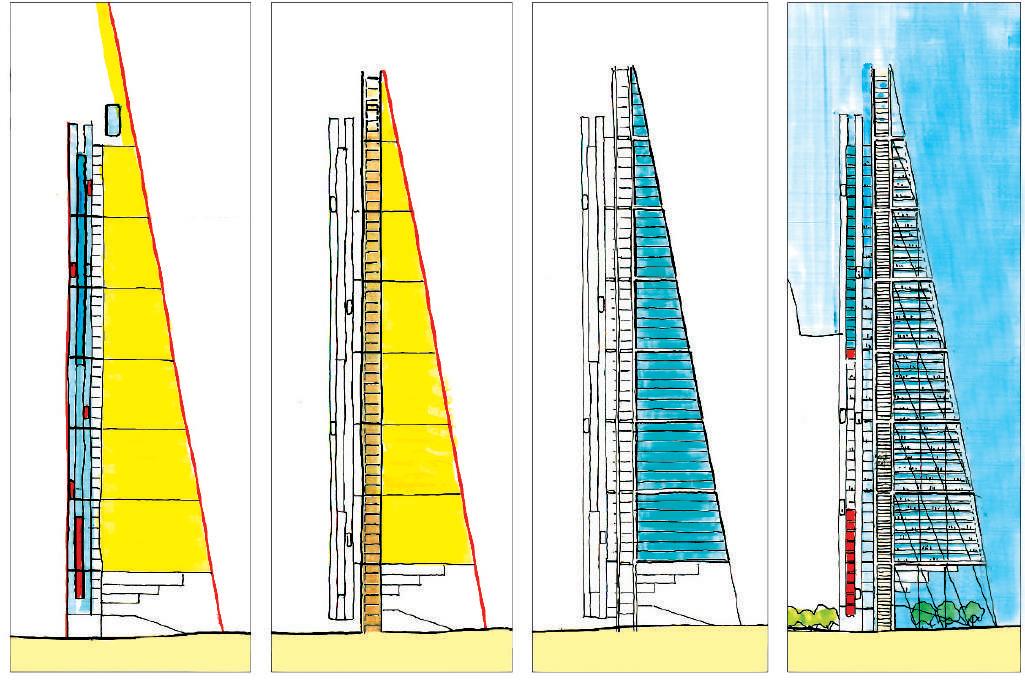
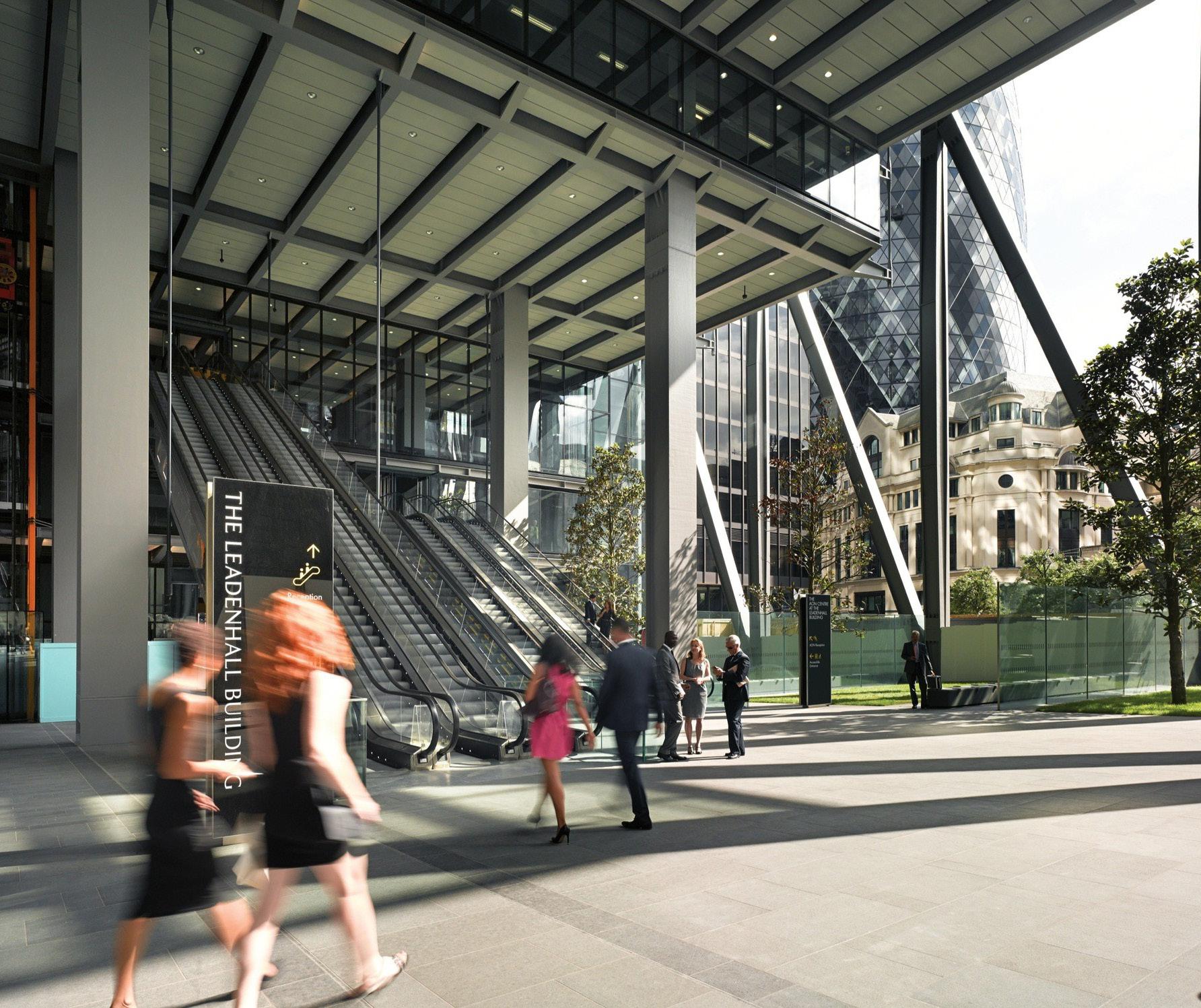

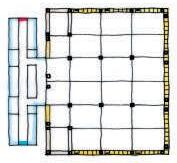
St Helen’s Square is a vitally important civic space and focal point for place making in the City Cluster. It frames the medieval Churches and outstanding modern architecture against the skyline. This is one of the most powerful and unforgettable outdoor experiences in the City.
St Helen’s Square is a significant open space fronting Leadenhall Street and St Mary Axe, attracting office workers, residents, and visitors of all age groups to meet, relax, play, and enjoy events within the iconic setting.
The Leadenhall Building adjoins St Helen’s Square and the Aviva Building, which are within the planning application site for 1 Undershaft. The Leadenhall Building’s public open space at street level flows into St Helen’s Square;
“Although the tower occupies the entire site, the scheme delivers an unprecedented allocation of public space – the lower levels are recessed on a raking diagonal to create a spectacular sun-lit, sevenstorey high space complete with shops, and soft landscaped public space. The public space offers a half-acre extension to the adjacent piazza of St Helen’s Square... This new public space provides a rare breathing space within the dense urban character of the City of London”. (RSHP Website Projects Page – Overview).
St Helen’s Square enjoys a high standard of sunlight and daylight, which lifts the quality of light and comfort levels in The Leadenhall Building’s adjacent covered open space.
The 2019 consent recognised the importance of protecting and enhancing the experience of St Helen’s Square and it’s connection to the Leadenhall Plaza. The following chapters assess the implications of the 2023 proposals for 1 Undershaft on St Helen’s Square.
From this analysis of the City Local Plan’s approach to public open space, and the character of St Helen’s Square, the following conclusions are reached:
1. There is a serious deficiency of public open space in the City, and in particular in the Eastern Cluster.
2. Planning policy and strategies for the Eastern Cluster look to protect, improve, and extend the area of public open space in the Eastern Cluster.
3. St Helen’s Square is the largest public open space in the Eastern Cluster, found at its heart, and in the words of the Cluster Vision, is a canvas for active and engaging public life.
4. St Helen’s Square has excellent daylight, sunlight, reflected light, and as a result is a very popular place for recreation and has the potential to host outstanding events.
5. It has an internationally significant setting, which frames the sky above St Helen’s Square, including the Gherkin, the Grade I Listed St Andrew Undershaft Church, the Grade I Listed Lloyd’s Register building, and The Leadenhall Building.
6. Public open space in the City is a scarce and valuable resource. St Helen’s Square is one of the most important opportunities for public open space in the City, and the Eastern Cluster.
1. Public realm proposals, from The City Cluster Vision (2019), incorporating 1 Undershaft 2019 consent & highlighting two primary civic spaces in the Eastern Cluster. St Helen’s Square The Gherkin
2. Leadenhall Street opportunity diagram, from The City Cluster Vision (2019).
3. St Helen’s Square CGI, from The City Cluster Vision (2019).

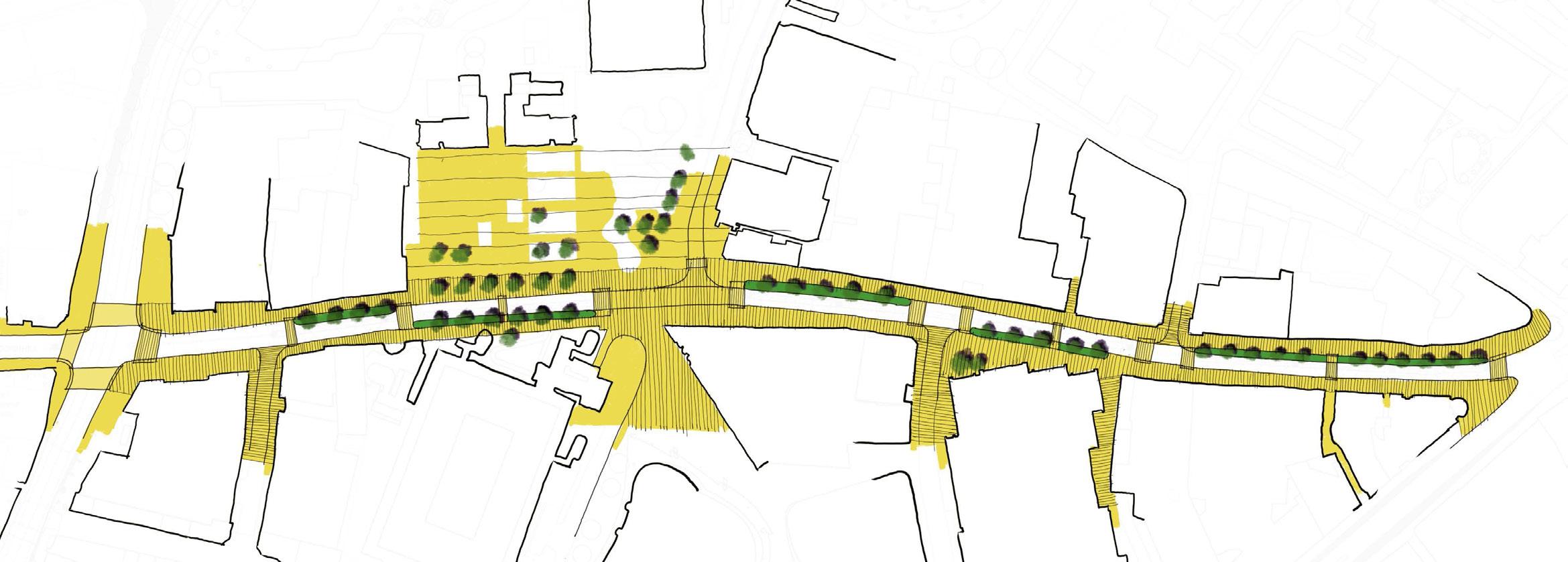
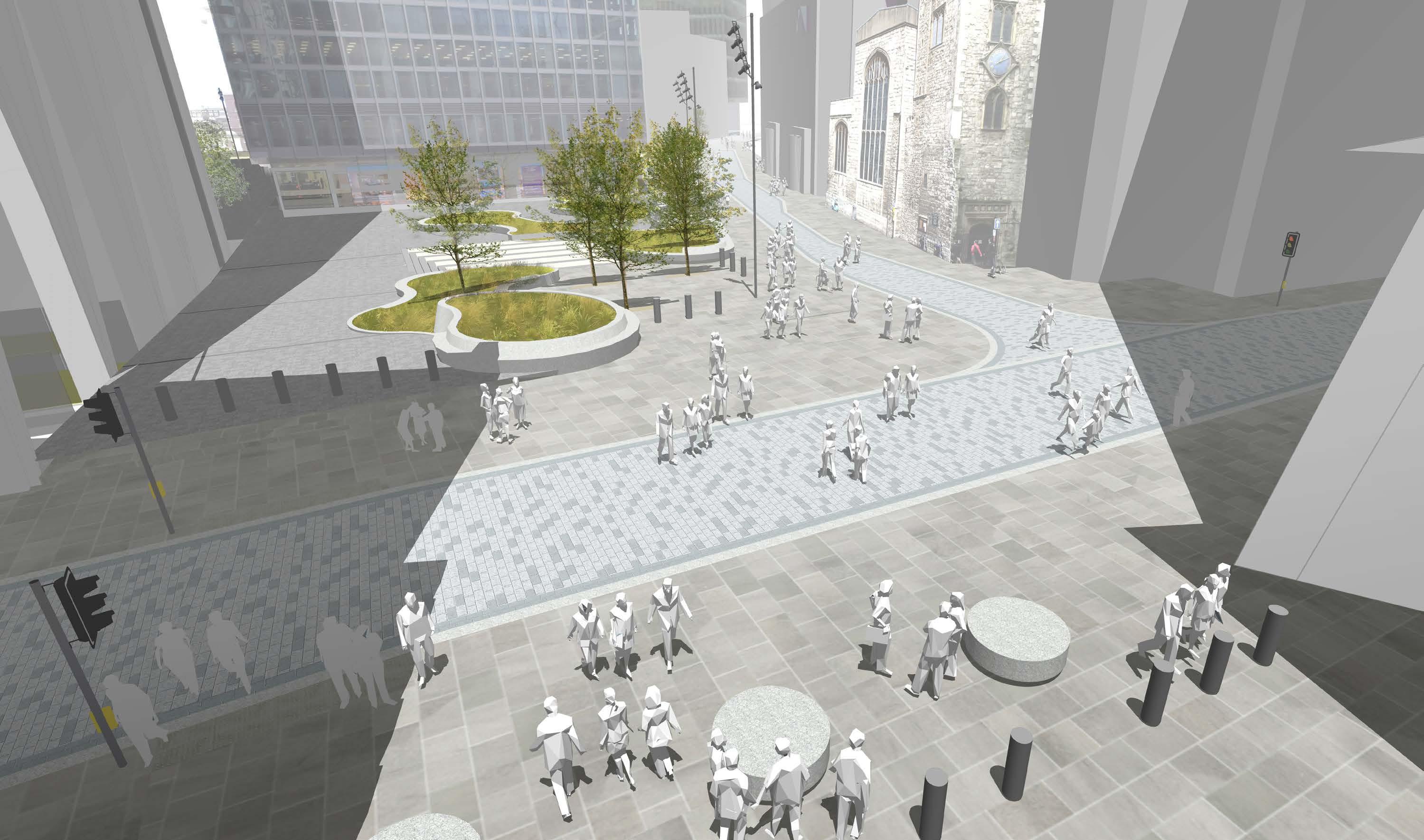
The City Cluster Vision shows the importance of St Helen’s Square to the Open Space Strategy for the Eastern Cluster:
“Spaces such as St Helen’s Square (at the foot of 122 Leadenhall Street and 1 Undershaft) and The Plaza at the foot of 30 St Mary Axe (the Gherkin) provide the canvas for active and engaging public life to flourish and are supported by a range of social and cultural activities and events.”
The City’s own policies and strategies for public realm state that:
– There is a serious deficiency of public open space in the City, and in the Eastern Cluster.
– Planning policy and strategies for the Eastern Cluster look to protect, improve, and maximise the area of public open space in the Eastern Cluster.
St Helen’s Square is the largest public open space in the Eastern Cluster, found at its heart, and in the words of the Cluster Vision, is a canvas for active and engaging public life.
– It has an internationally significant setting, the sky above St Helen’s Square is framed by the Gherkin, St Andrew Undershaft Church (Grade 1 listed), the Lloyd’s Register (Grade 1 listed), and The Leadenhall Building.
– St Helen’s Square is at the centre of the planned growth of tall buildings, an area of exceptional density, which will put increasing pressure on open spaces. This reinforces the need to protect St Helen’s Square, and in the words of the City “make it work hard” and not to reduce it in size area and character.
Table 2: Distribution of Open Space
3.3.6 Table 3 below illustrates that the majority of open spaces within the City are civic squares and other hard-surfaced areas designed for pedestrians, with churchyards and cemeteries the second largest and amenity green space third. However, when assessing actual coverage, parks and gardens are the second largest category of open spaces within the City. In terms of public access, civic spaces and churchyards and cemeteries are the most public.
–
This chapter summarises a comparative analysis of the 2023 redevelopment proposals for 1 Undershaft (Planning Application Ref. No: 23/01423/FULEIA) against the 2019 consented proposals (16/00075/FULEIA) and the existing Aviva building and St Helen’s Square. It focuses on evaluating the impact of proposals on the street scene and provision of public realm.
The analysis involves a review of relevant drawings from each application, supplemented by additional diagrams and annotations highlighting the relationship with St Helen’s Square and the wider context. Further drawings, diagrams, and a comparison of verified and non-verified views are included in Appendix A: Comparison of 1 Undershaft Proposals.
The analysis highlights contrasting outcomes, underscoring the importance of thoughtful urban planning to preserve and enrich the public realm, In accordance with London Plan Policies D8 on public realm and D9 on tall buildings, and the design and public realm policies and strategies of the City of London:
– The 2023 proposal results in fragmentation and loss of coherence, particularly affecting the connection between St Helen’s Church Bishopsgate and St Helen’s Square. In contrast, the 2019 scheme improved connectivity and integration of public spaces, with the whole of St Helen’s Square retained and a net-gain in area with its undercroft and lower ground plaza.
– The scale and massing of the 2023 proposals encroach upon St Helen’s Square and fail to adequately compensate for the loss, diminishing the quality and vitality of the public realm, whereas the 2019 scheme avoided building into or over St Helen’s Square beyond the existing footprint of the Aviva building.
– The 2023 proposals’ podium and massing limit sky visibility, sunlight, and privacy for neighbouring buildings and streets. Conversely, the 2019 scheme’s generous undercroft integrates seamlessly with adjacent buildings, connecting St. Helen’s Square with St Andrew Undershaft Church, enriching pedestrian experience in the City Cluster.
The 2023 proposals project significantly further south, obscuring the iconic profile of The Leadenhall Building, diminishing it’s character and presence in views from Leadenhall Street and St Mary Axe in the east. Comparatively, the 2019 scheme tapered inwards at higher levels to maintain The Leadenhall Building’s aspect onto St Helen’s Square and views from the square of the Gherkin, St Andrew Undershaft Church, and Lloyds Building.
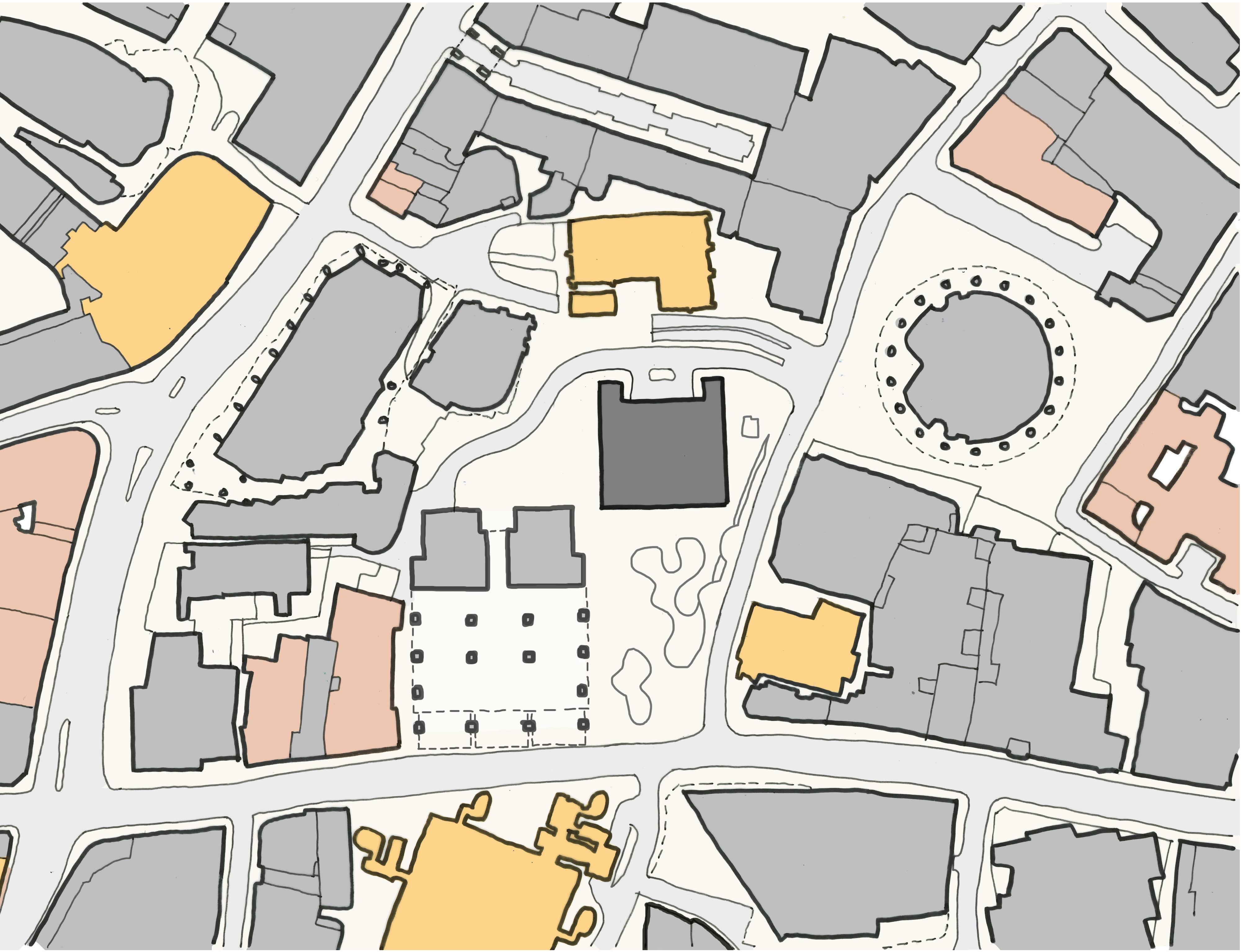
These plans demonstrate the significant loss of area, visible sky, quality, and usability of St Helen’s Square due to the encroachment of 2023 proposals into and above the street level public realm, compared to both the existing scenario and 2019 consented proposals.

– The area of St Helen’s Square is 2,433 m2 with a depth of 65.9 m.

– The area of St Helen’s Square increases to 2,438 m2, the depth increasing to 74.3 m to the nearest ground floor structure.

These plans illustrate the large increase of proposed massing overhanging and overshadowing St Helen’s Square in the 2023 application versus the 2019 consented scheme, which slightly improved the existing line of public realm to the south.

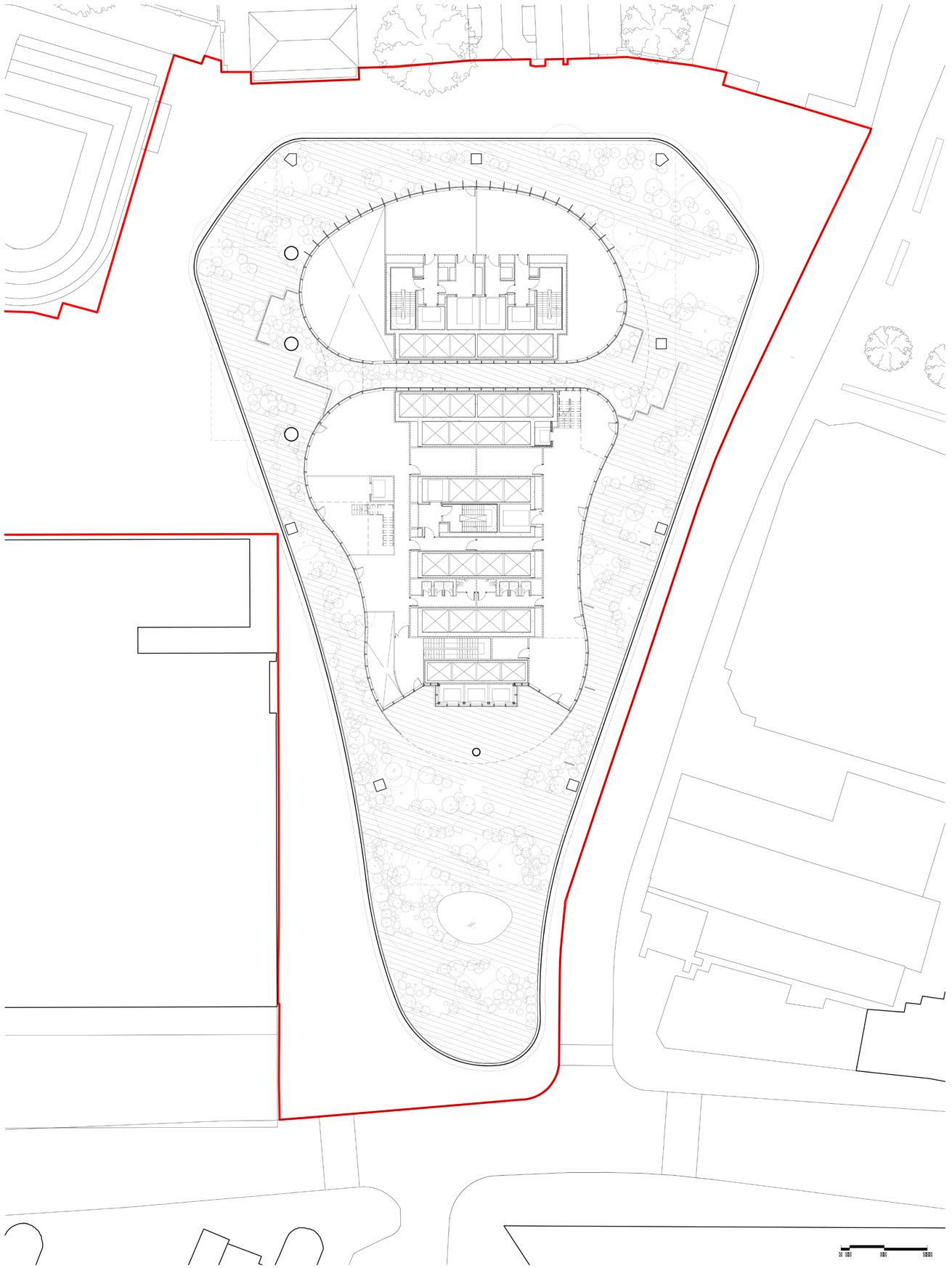
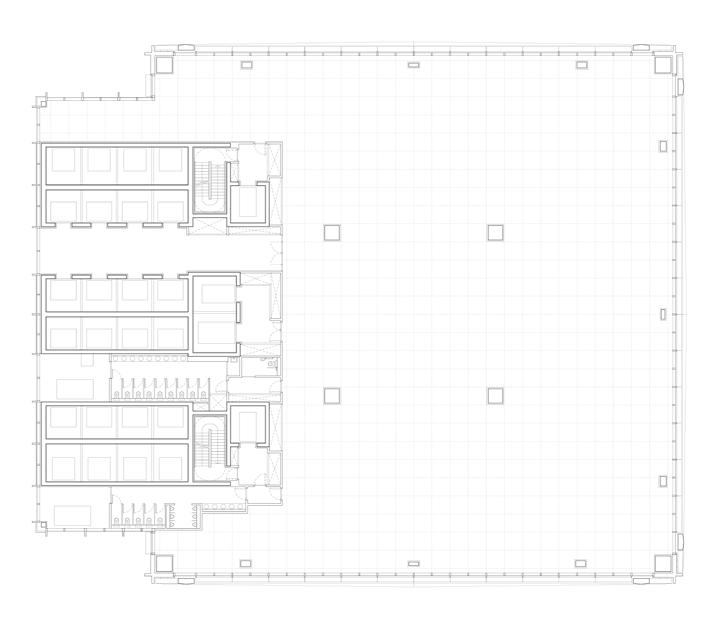



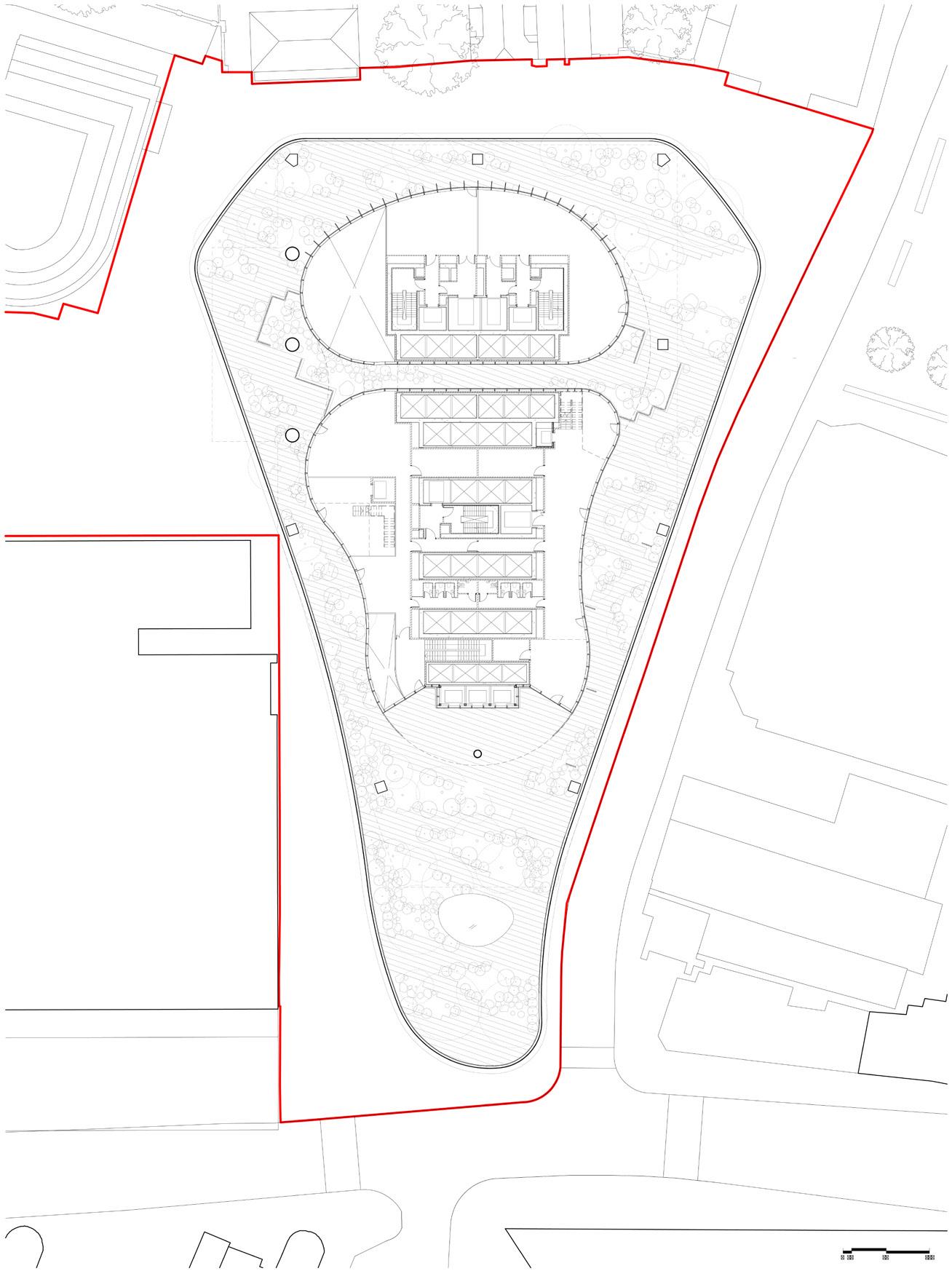
– Upper floorplate of Aviva building is entirely to the north of St Helen’s Square, causing no overshadowing or reduction of visible sky from street level.
– Increased floorplate is entirely to the north of St Helen’s Square, causing no additional overshadowing or reduction of visible sky from street level.
– Increased floorplate and projecting podium garden significantly encroaches into and overshadows St Helen’s Square, reducing areas of visible sky from street level.
– Public realm at level 11 is not a like for like replacement and doesn’t compensate for the significant loss and harm caused at street level.
These plans show how the lower–middle massing of the tower of 1 Undershaft (see 2.4.1) in the 2023 application scheme has grown, in addition to the base, and is built over the existing St Helen’s Square.
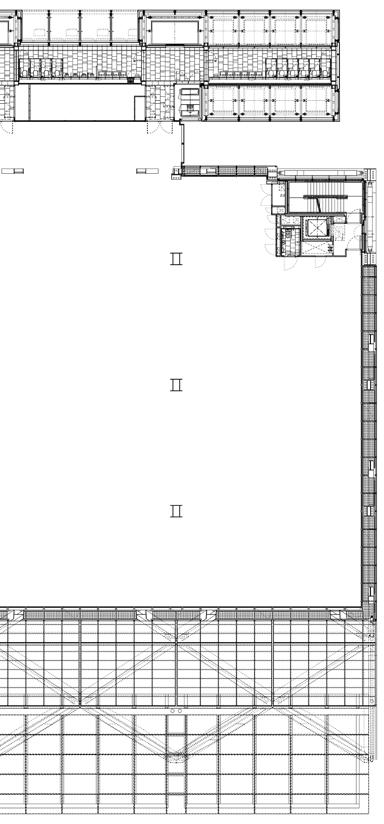
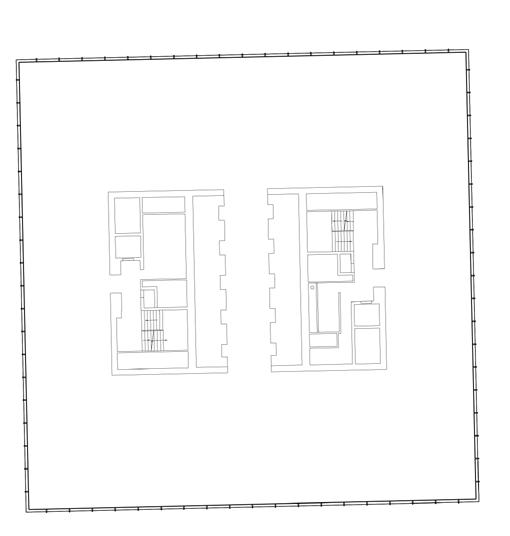

– Upper floorplate of Aviva building is entirely to the north of St Helen’s Square, causing no overshadowing or reduction of visible sky from street level.
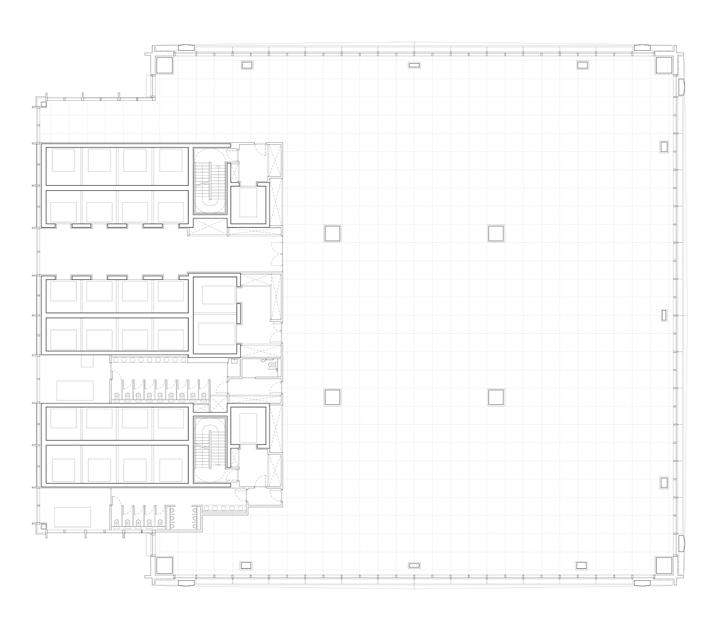


– Increased floorplate is entirely to the north of St Helen’s Square, and does not impose itself on the street level below.

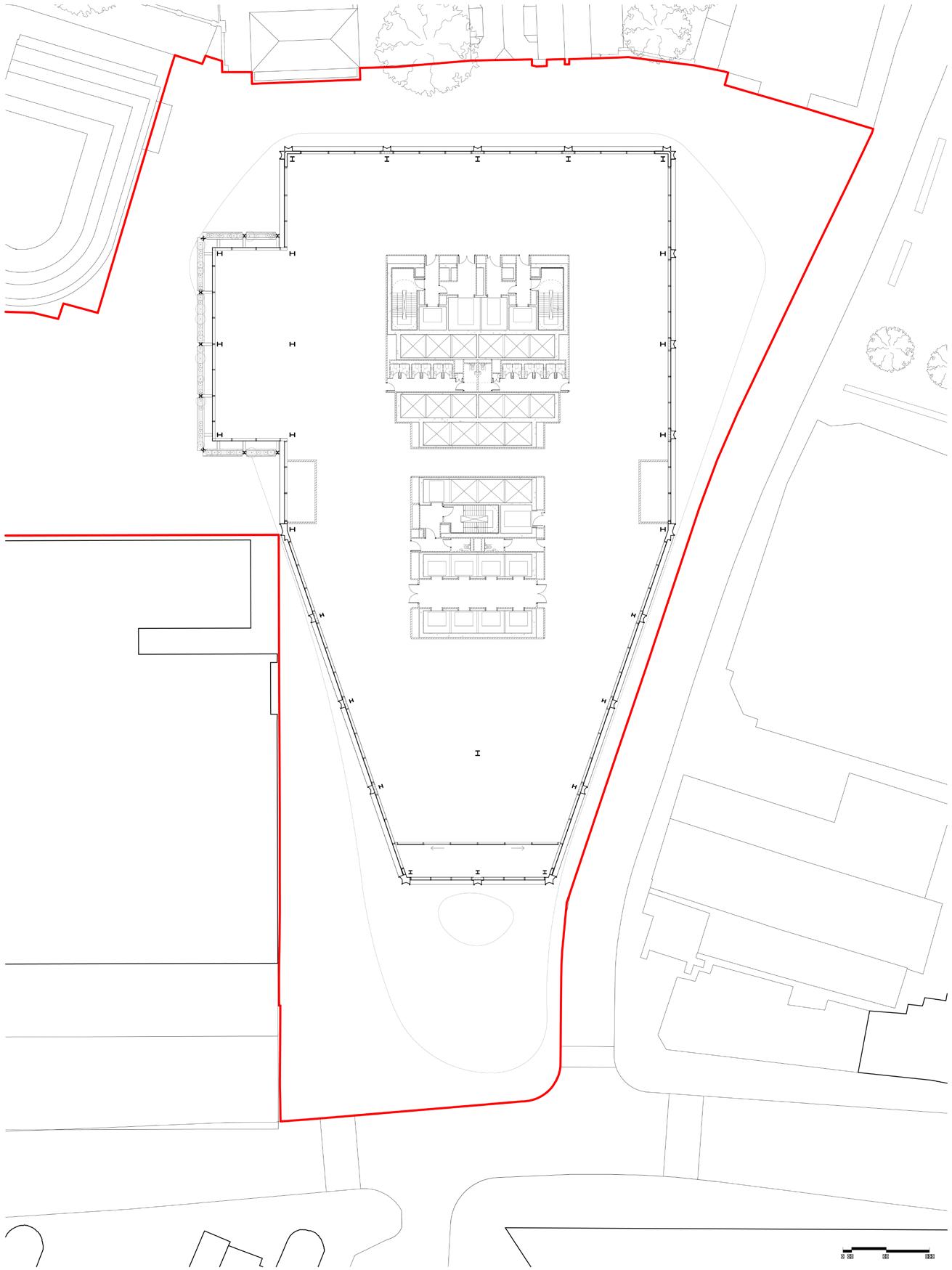
– Increased lower–middle floorplate significantly encroaches into and overshadows
These plans show how the upper–middle massing of the tower of 1 Undershaft (see 2.4.1) in the 2023 application scheme has grown, in addition to the base, and is built over the existing St Helen’s Square.
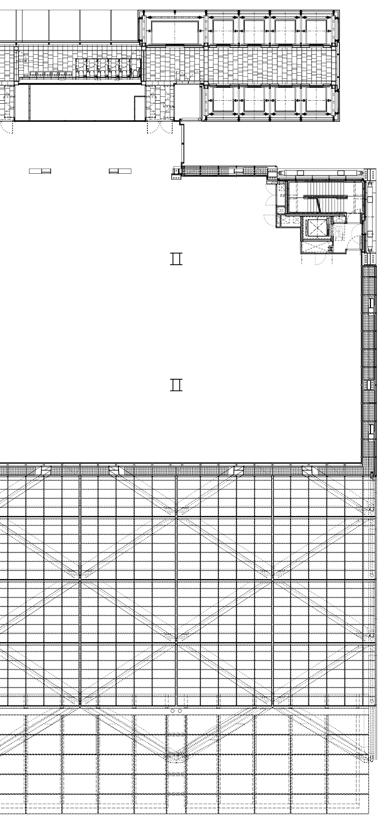
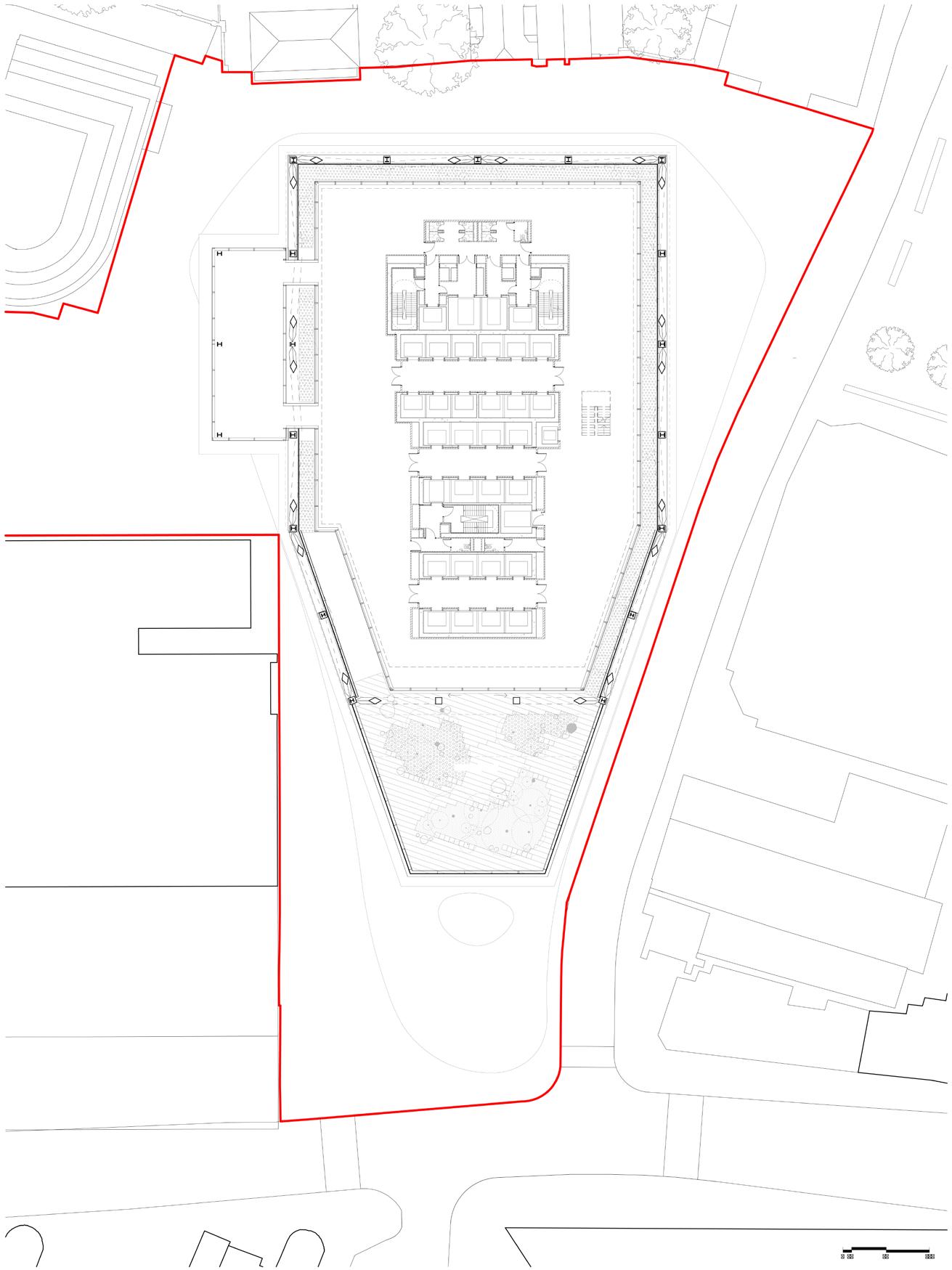
– Upper floorplate of Aviva building is entirely to the north of St Helen’s Square, causing no overshadowing or reduction of visible sky from street level.


– Increased floorplate is entirely to the north of St Helen’s Square, and does not impose itself on the street level below.


– Increased upper–middle floorplate significantly encroaches into and overshadows St Helen’s Square, reducing areas of visible sky from street level.
These elevations demonstrate how the increased massing of 1 Undershaft in the 2023 application obstructs the profile of The Leadenhall Building when viewed from Leadenhall Street and St Mary Axe to the east. In contrast, the 2019 consented scheme maintained the integrity of The Leadenhall Building in these views, showing respect and preservation of its architectural prominence.

+239.4m AOD
+133.0m AOD
– Massing of Aviva building is entirely to the north of St Helen’s Square, framing the iconic profile of The Leadenhall Building.
+304.9m AOD

– Increased massing of 1 Undershaft significantly diminishes The Leadenhall Building in views from St Mary Axe and Leadenhall Street in the east, and has an over-bearing and dominating impact on the townscape and heritage assets in St Mary Axe and Leadenhall.
Existing Extent Extent of 2023 Proposal
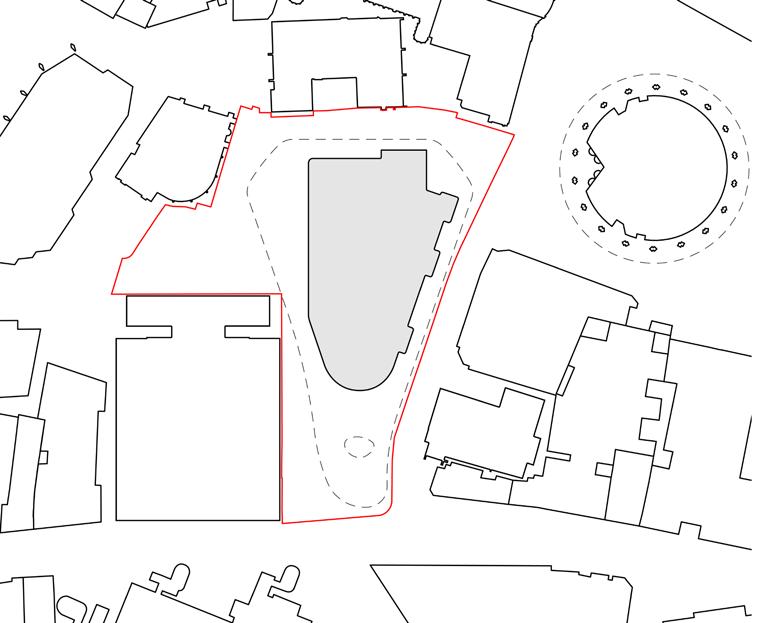
+309.6m AOD

+207.1m AOD
+136.2m AOD
+61.6m AOD
– The projecting podium, lower-middle, and upper-middle massing significantly reduce the extent of visible sky, sunlight, and privacy to surrounding buildings and streets, while overshadowing the public realm to St Helen’s Square (London Plan Policy D9, 3.9.7).
– Increased floorplate and projecting podium garden significantly overlap and obscure the iconic profile of The Leadenhall Building.
– Increased massing of 1 Undershaft significantly diminshes The Leadenhall Building in views from St Mary Axe and Leadenhall Street in the east.
These sections illustrate how the 2019 consented scheme expands the size and connectivity of street-level public open space without encroaching onto or over St Helen’s Square. In contrast, the 2023 application proposals result in a significant loss of public open space and negative impacts on existing amenities by encroaching into and projecting over St Helen’s Square, which diminishes the area’s attractiveness and appeal.
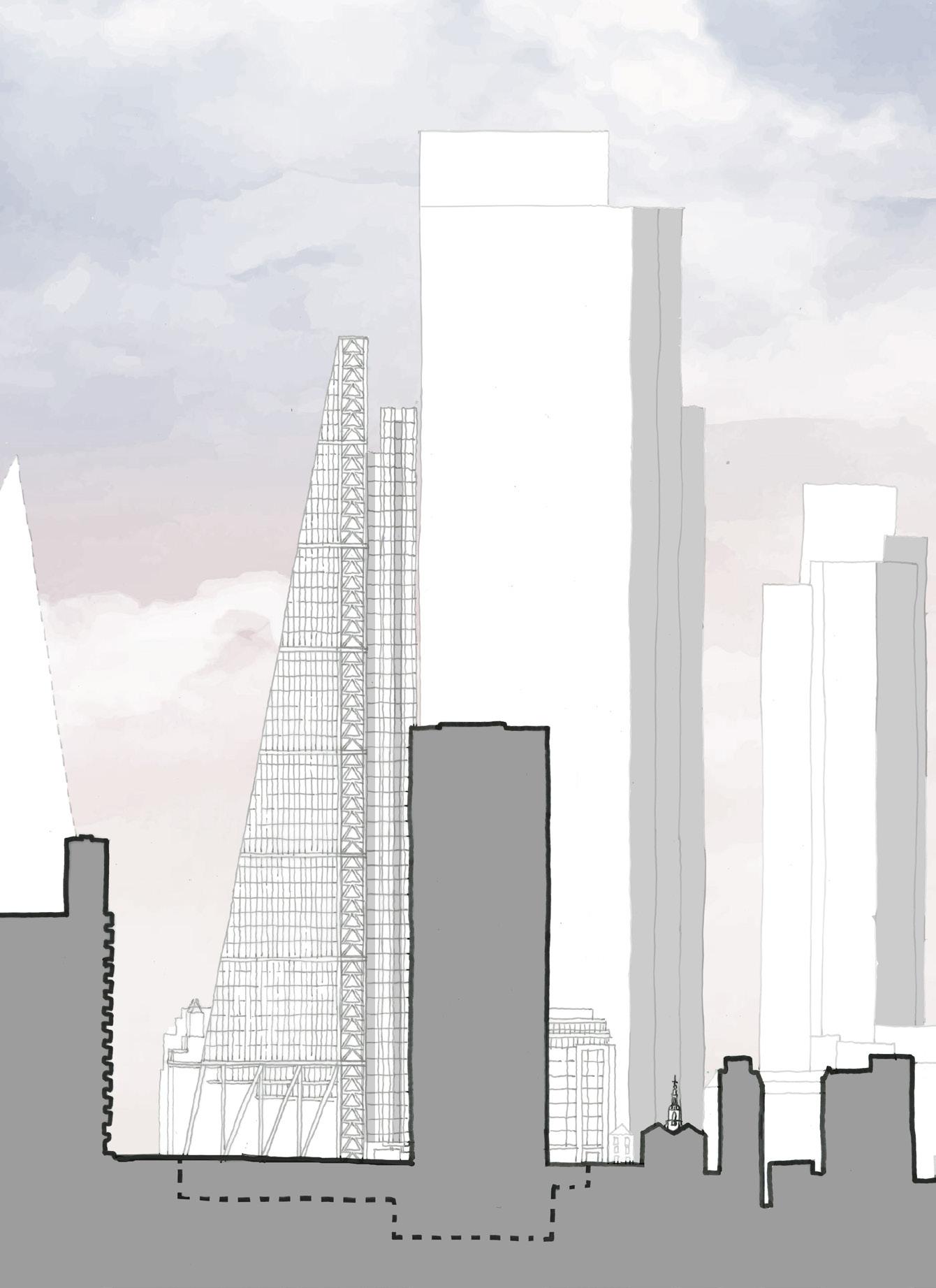
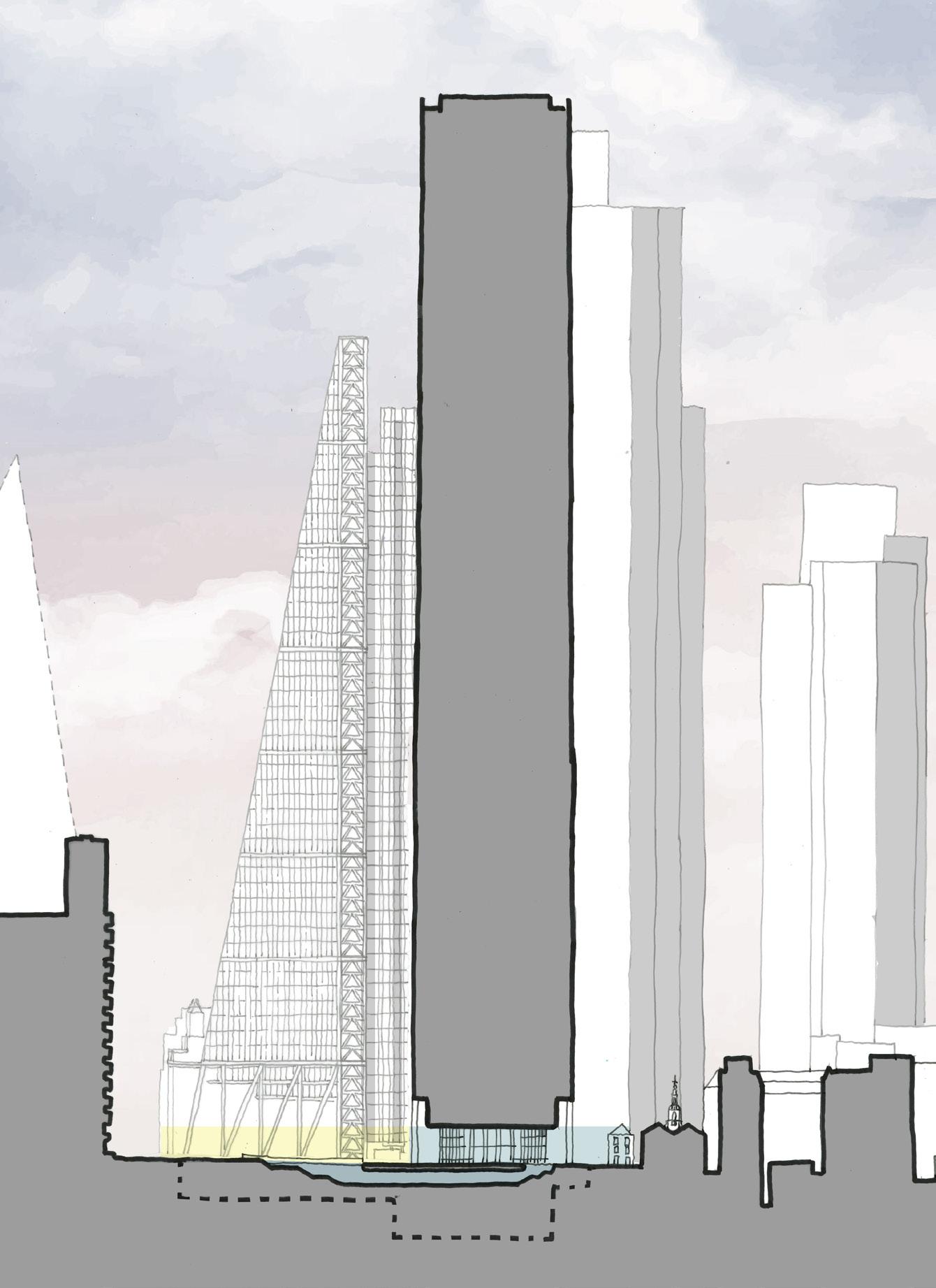
– Massing of Aviva building is entirely to the north of St Helen’s Square, causing no overshadowing or reduction of visible sky from street level.
– All of St Helen’s Square retained and open to the sky, inviting pedestrians into an enhanced civic space with improved connectivity.
– The Undercroft of the 2019 scheme provides 1,635 m2 additional public realm and improves connections between St Helen’s Square / Leadenhall Plaza and St Helen’s Church / 30 St Mary Axe.
– Lower ground plaza creates 496m2 additional public realm, activated by 1,543 m2 of restaurants and shops.

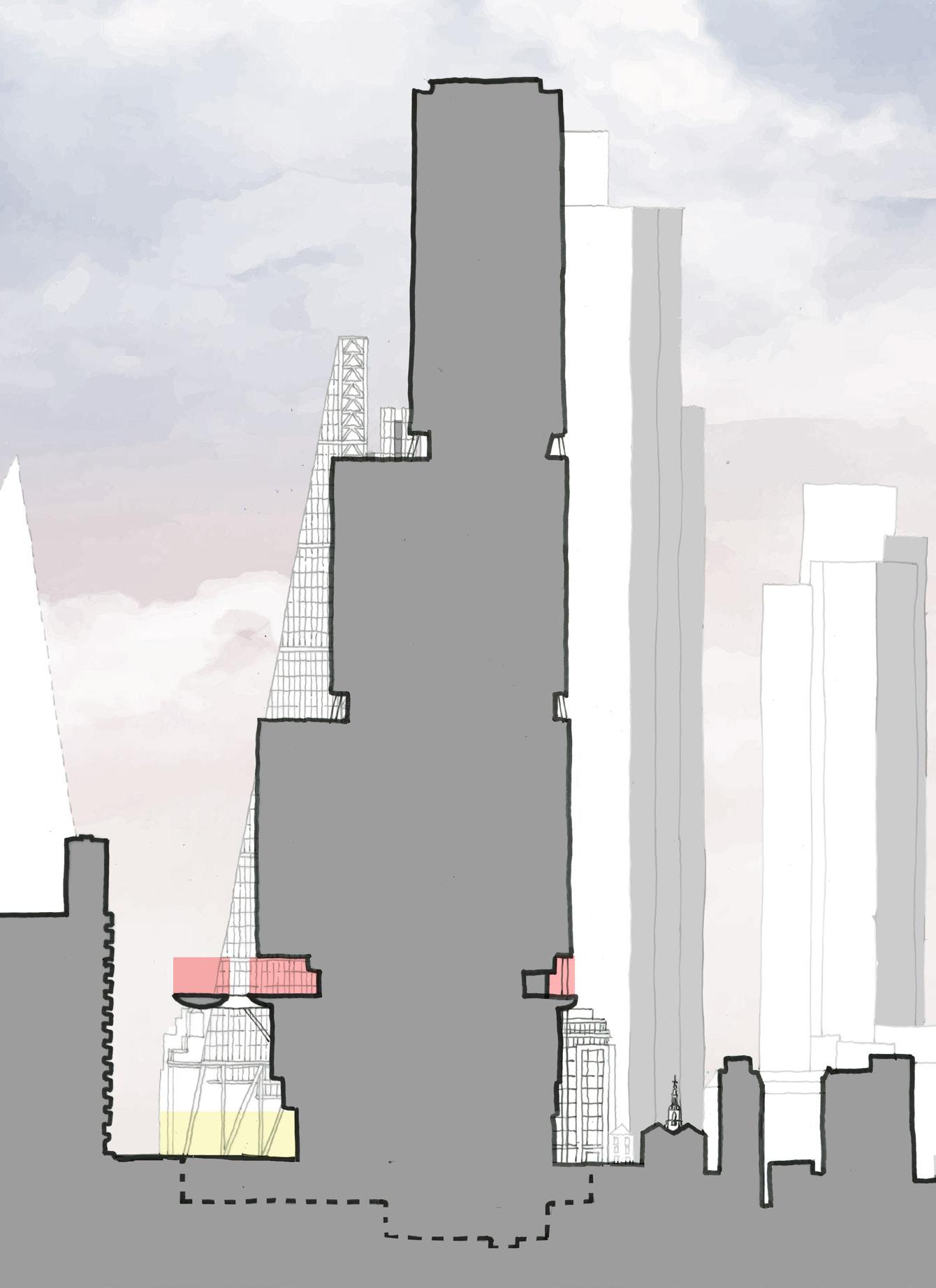
– The enlarged footprint intrudes into St Helen’s Square, resulting in the loss of 29.2% of the Square’s area (accounting for a slight realignment of the north of the square due to proposed column locations).
– Level 11 canopy covers an additional 39.5% of St Helen’s Square, demoting its significance and diverting activity away from street level, while significantly harming direct sunlight levels.
These context plans illustrate how the 2019 consented scheme helped stitch together existing public open spaces at 30 St Mary Axe and St Helen’s Square / Leadenhall Plaza by providing a new public space at street level and lower ground floor, connecting St Helen’s Church with St Helen’s Square. Comparatively, the 2023 application serves to fragment the existing public realm and block the connection between the Church and Square.
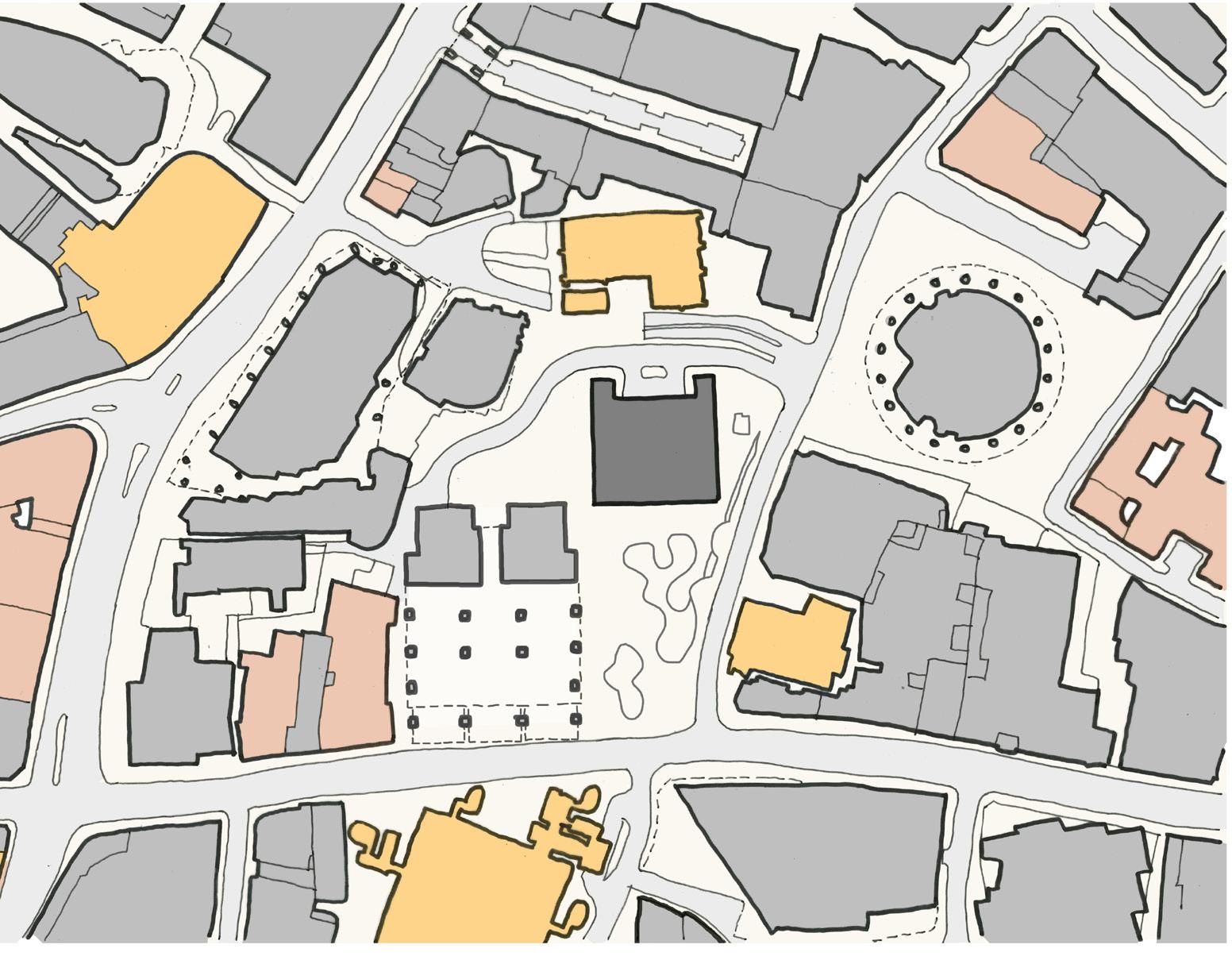
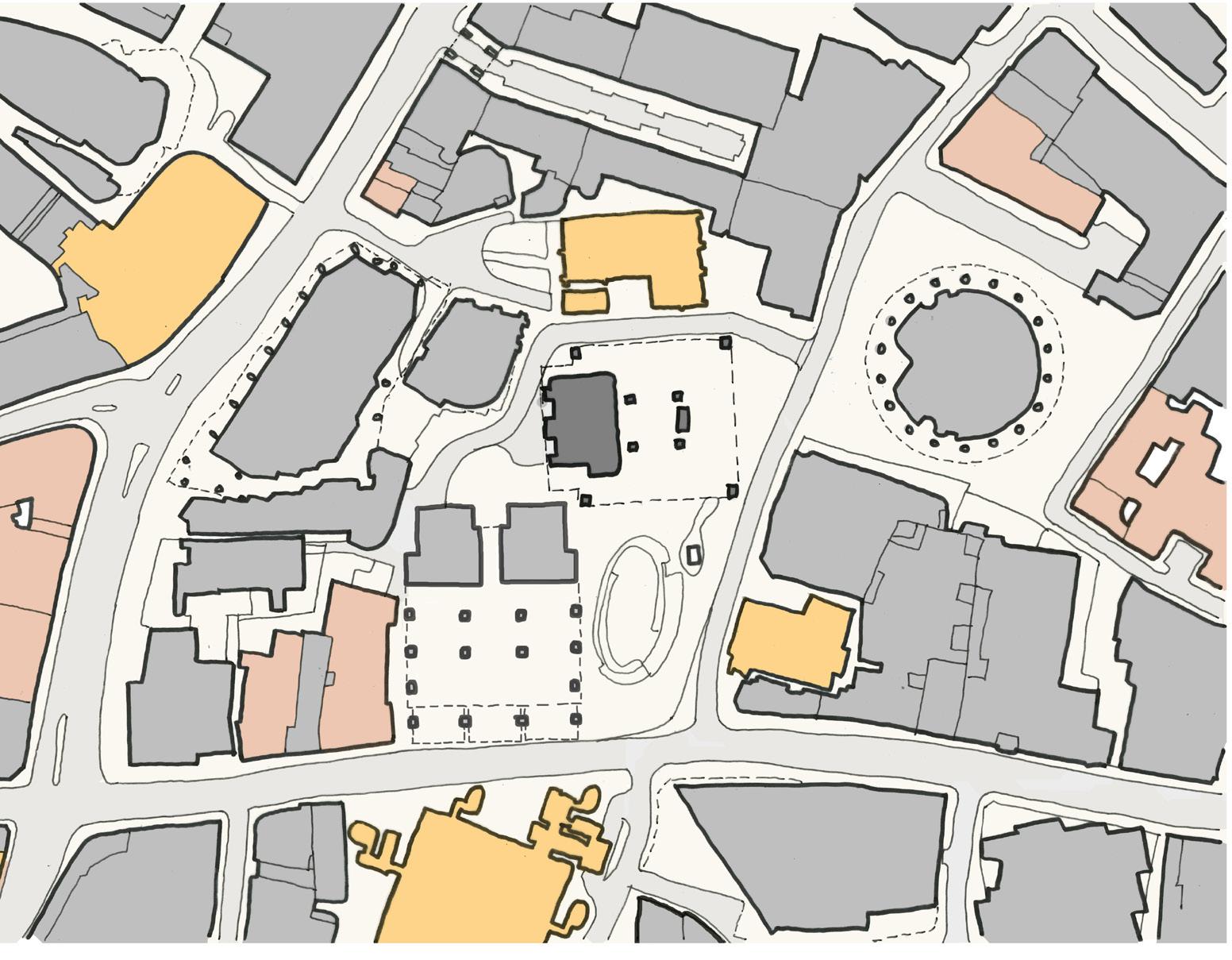
Total public realm: 4,505 m2
St Helen’s Square public realm: 2,433 m2
– St Helen’s Square is a unique and vitally important civic space in the heart of the City Cluster, framed by medieval Churches and iconic modern architecture.
– It provides 2,433 m2 of south-facing street level open space which is open to the sky and connected to the Leadenhall Plaza, encouraging a diverse array of activity and interaction.
Total public realm: 5,361 m2 (+856) (+19.0%)
St Helen’s Square public realm: 2,438 m2 (+5) (+0.2%)
– All of St Helen’s Square retained and open to the sky, inviting pedestrians into an enhanced civic space with improved connectivity.
– The Undercroft of the 2019 scheme provides 1,635 m2 additional public realm and improves connections between St Helen’s Square / Leadenhall Plaza and St Helen’s Church / 30 St Mary Axe.
– Lower ground plaza creates 496m2 additional public realm, activated by 1,543 m2 of restaurants and shops.
Context Buildings
Grade I Listed
Grade II / II* Listed
Public Open Space Roads

Total public realm: 3,770 m2 (–735) (–16.3%)
St Helen’s Square public realm: 1,723 m2 (–710) (–29.2%)
– The enlarged footprint intrudes into St Helen’s Square, resulting in the loss of 29.2% of the Square’s area (accounting for a slight realignment of the north of the square due to proposed column locations).
– Level 11 canopy covers an additional 39.5% of St Helen’s Square, demoting its significance and diverting activity away from street level, while significantly harming direct sunlight levels.
– Relocated servicing bay deteriorates relationship with 30 St Mary Axe and its associated public realm.
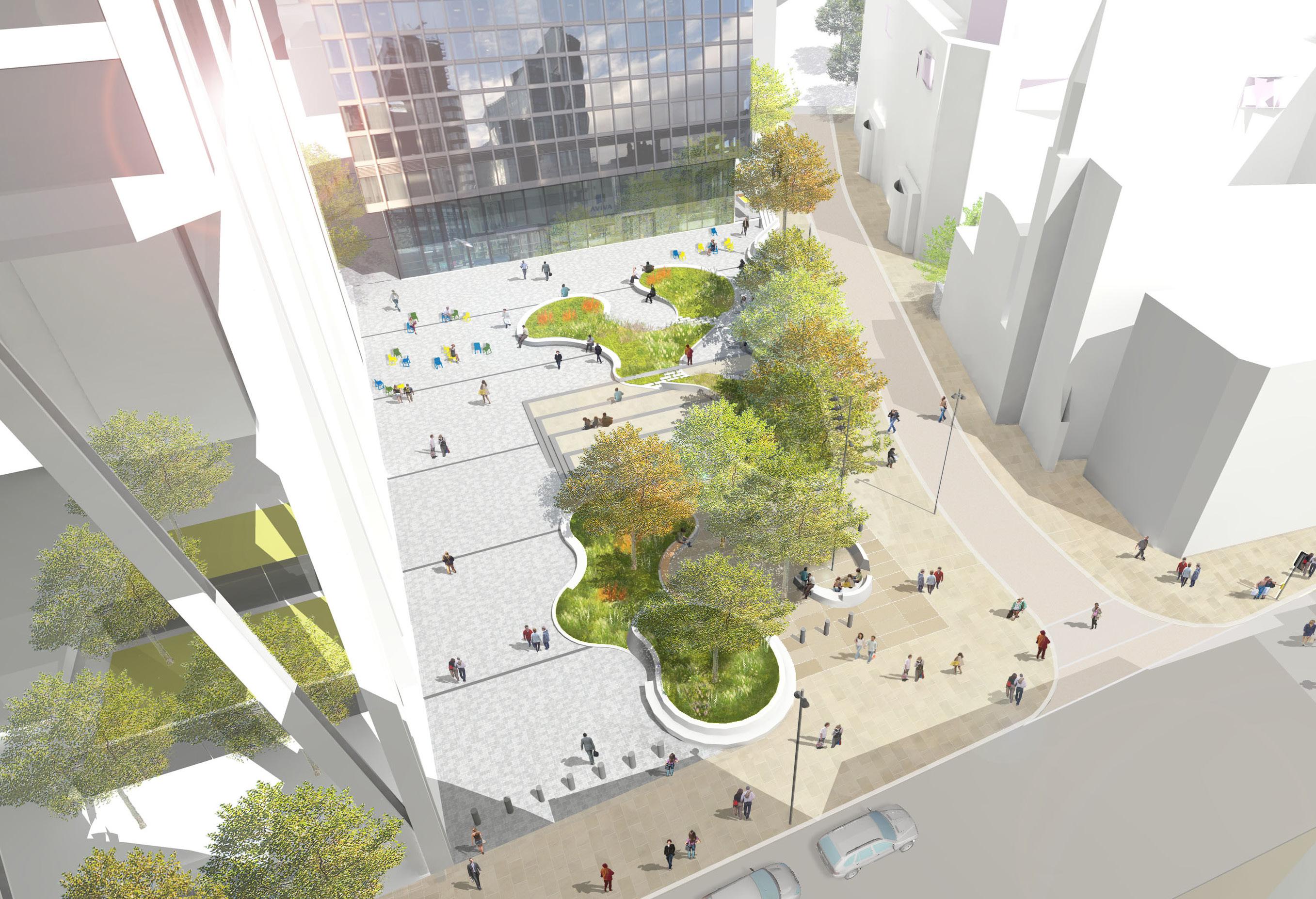
A city is defined by its public realm – the free, safe and open spaces where people can simply enjoy the sky and fresh air, regardless of age, wealth or background. They can move freely, saunter or sit, seek solitude or company, enjoy direct sun or green shade, snooze or chatter. The buildings may be magnificent, but it is the spaces between them that bring settlements alive and give inhabitants a sense of equality. The denser and taller the city, the more the public realm matters.
The City of London absolutely recognizes the significance of its open spaces and has particularly focused on the public realm at the heart of its tallest buildings – the Eastern Cluster. St Helen’s Square is pivotal. It is the largest open space, faces south and is surrounded both by medieval churches and some of the most iconic buildings of our time. You can only really appreciate and enjoy those buildings if you have the space to step back and see them. Pedestrian routes through the City radiate from the square. People cross the space constantly, it hums with lunchtime life in summer sunshine and warm evening gatherings. It keeps the City human.
Historically, open space has been very limited in this tight urban grain, so the few places where sunlight actually reaches the ground, creating a comfortable place for people to gather and enjoy the public realm, are especially important.
St Helen’s Square has been designed to encourage people to sit, eat and talk along the lively pedestrian routes through the space. The curving seating walls and movable deck chairs offer endless possibilities for sitting in pairs, groups or quietly contemplating the scene alone. People can follow the sun or seek shade, depending on the temperature. There is a sense of free and spontaneous engagement with one another and the urban scene. The open sky and sunlight with luxuriant greenery give instant relief in the dense, febrile atmosphere of the City. It is a place to escape the tensions of the office, make human contact and enjoy open air in the middle of a day often bookended by long, dark commutes.
William Whyte’s seminal studies of pedestrian movements in New York have shown not only how these simple gestures towards human comfort and interaction can transform how spaces are used. He also demonstrated how a lively sunlit public realm at street level transforms the safety, productivity and ultimately the value of the buildings that surround it.
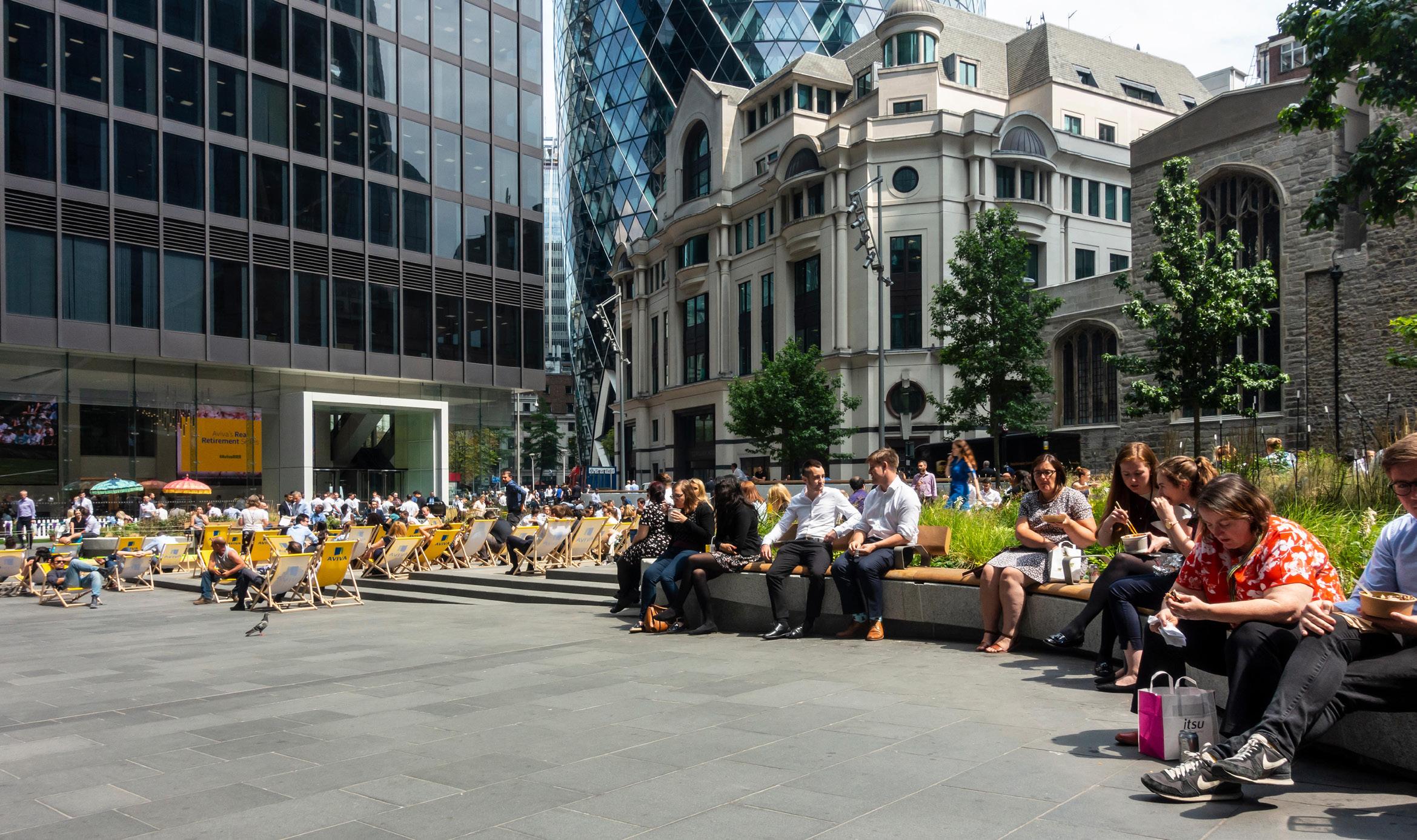
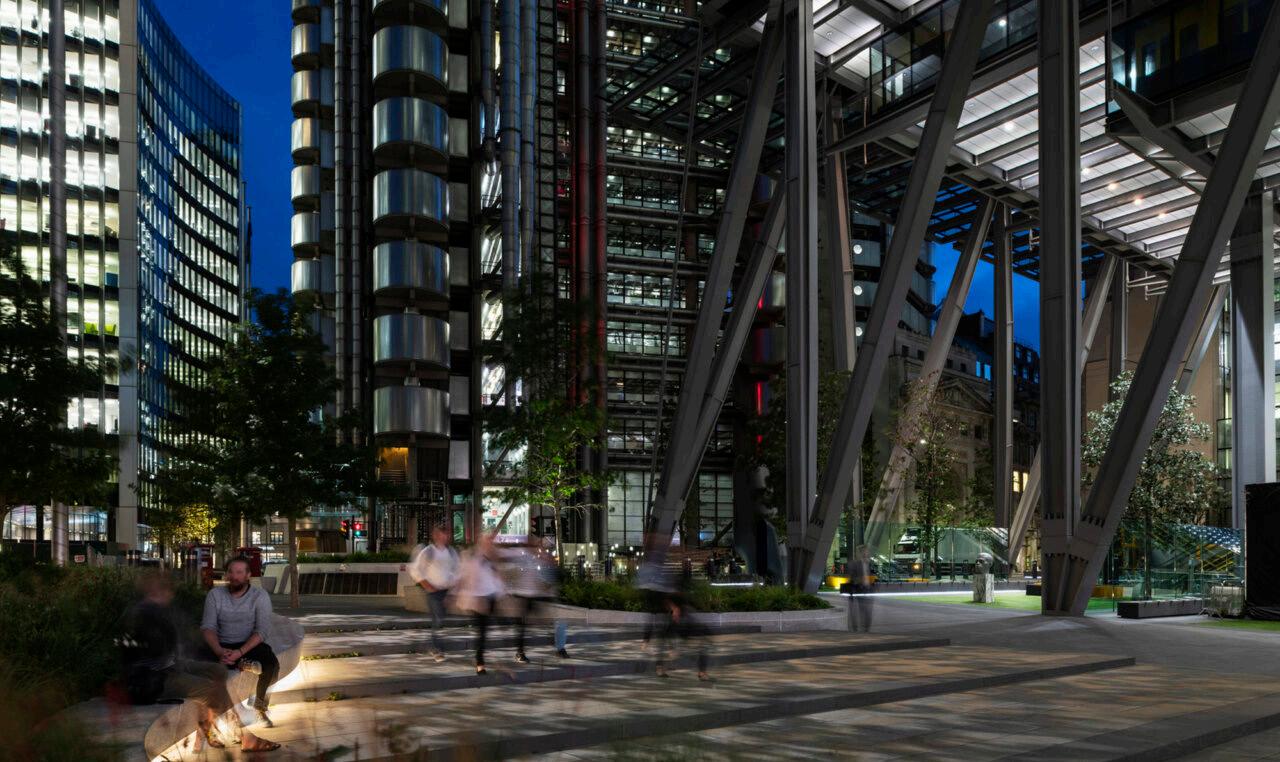
1. Images of St Helen’s Square; existing photo, & verified view from 2023 application.
2. Comparative CGI views of proposals from corner of Leadenhall Street / St Helen’s Square.
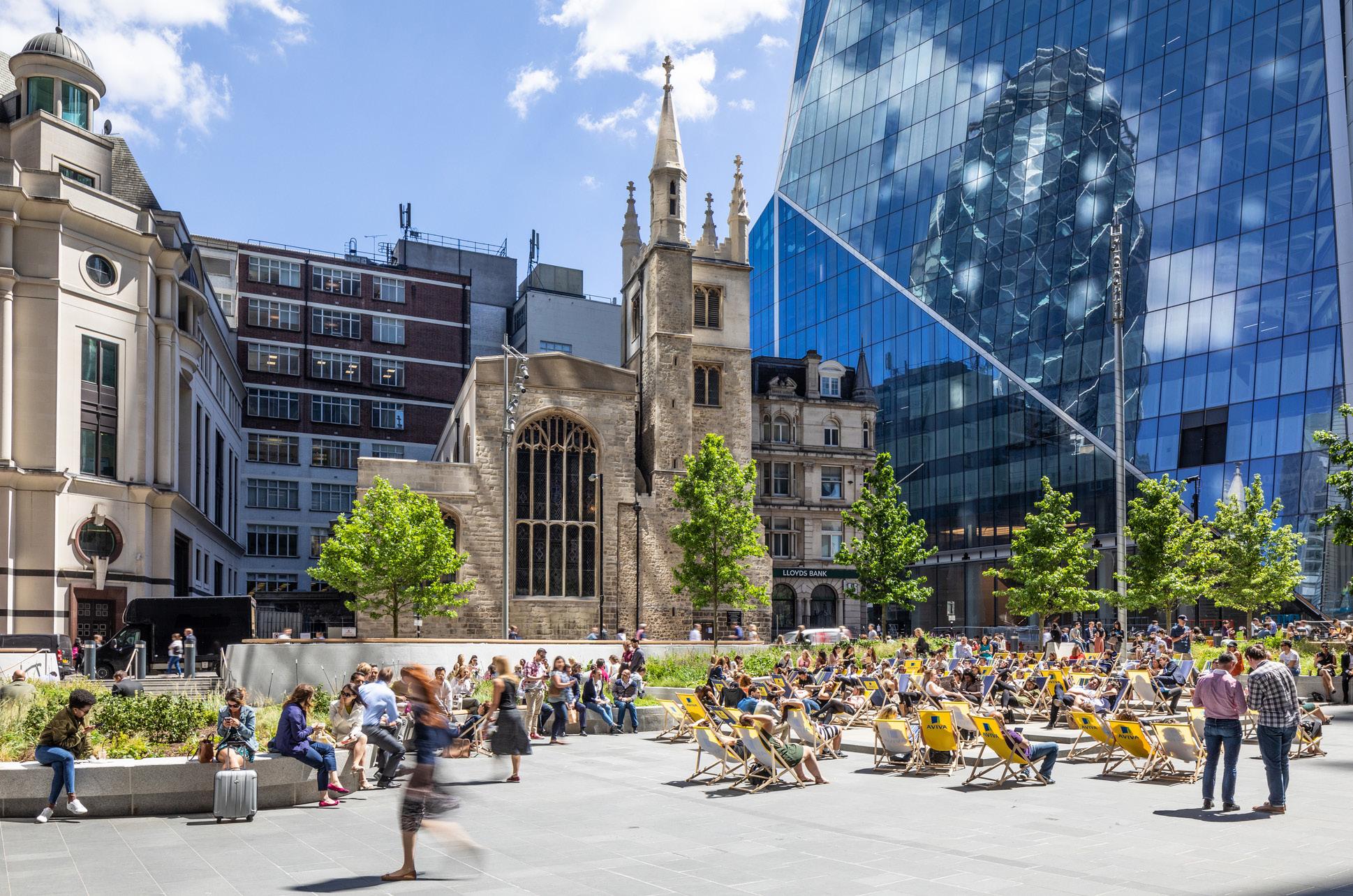
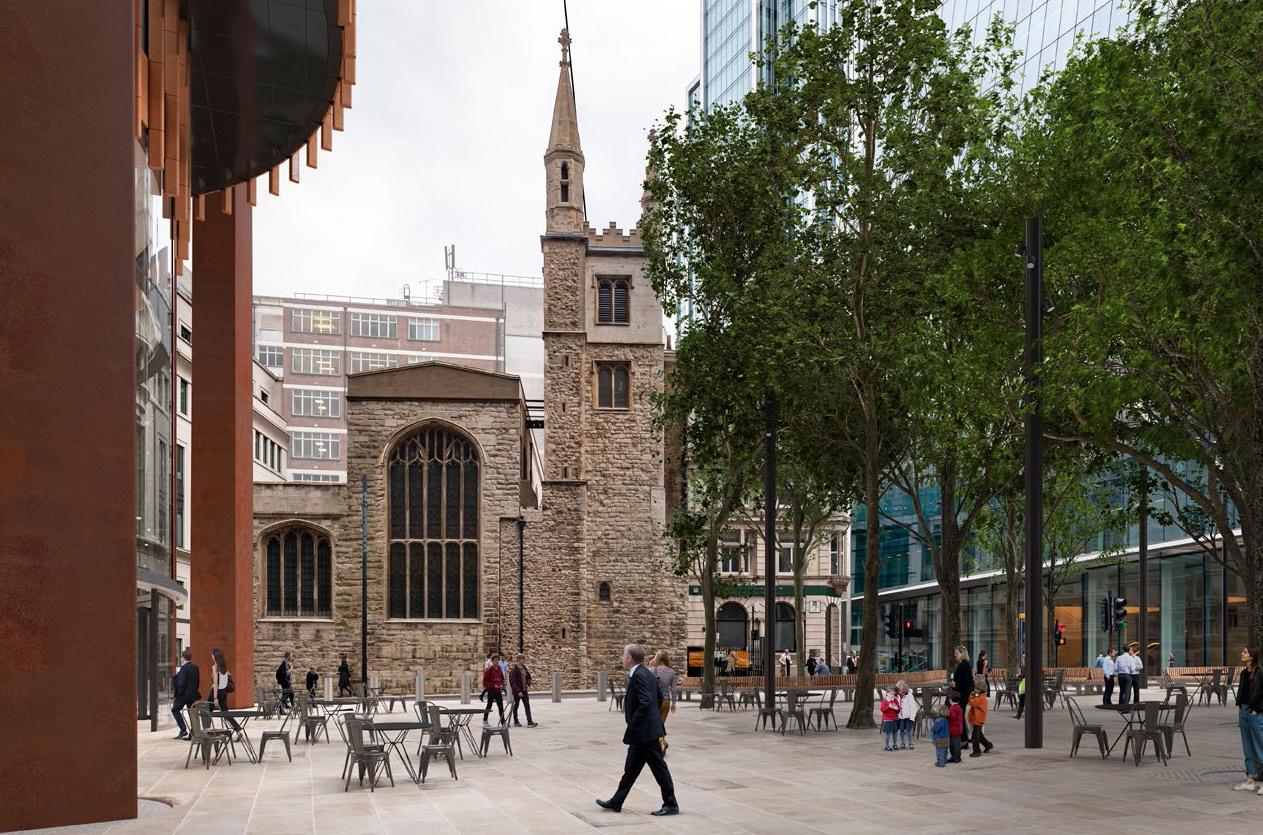
As the central pivotal space in the Eastern Cluster, St Helen’s Square connects the surrounding thoroughfares and also links to the plazas in front of St Helen’s church and the Gherkin. The easy and visible flow of these spaces and the careful framing of architecture, such as the Lloyd’s Building (Grade I listed), create a reassuring and instinctive wayfinding through the City. It allows people to wander and explore without having to rely on their phone screens.
Eric Parry’s consented scheme for 1 Undershaft would make a significant contribution to the City and to London. As the second tallest building in the capital, it is designed to complete the composition of the City Cluster. Tall, slender and carefully positioned to complement its neighbours, the design of the new tower is both elegant and beautiful. It also addresses one of the most important urban spaces at the centre of the City, St Helen’s Square. With its south-facing square and oval connection to the shops below, the consented scheme opens to the space with simple generosity. It maximizes sunlight at street level, welcomes passing pedestrians into the square, reveals the connection between St Helen’s and St Andrew Undershaft and creates a warm, pivotal civic realm at the heart of the City, framed by some of the most iconic buildings of our time.
The 2023 proposals for an amended scheme that covers or overhangs most of the public realm undermines the beauty and benefits of the consented 2019 design:
– The amended building would no longer be slender and elegant, fitting gracefully into the composition of the cluster.
– The generous civic space which opens to the south of the building is largely replaced by built form and overhang.
– Midday summer sunshine no longer reaches most of the street and square. Reflected morning and evening light is blocked from the centre of the space.
– The rare urban moment of generous open sky, framed by fine buildings from the street level is removed.
– The viewing platform at the eleventh floor as a replacement for street level public square does not compare in terms of welcome, easy access and equitable public realm.
– The ‘comfort and quality of the user experience’ at ground level (prioritized by the City Strategy) is fundamentally compromised.
– The pivotal junction of Leadenhall and Lime Streets with St Mary Axe is pinched rather than opened and the connection between St Helen’s and St Andrew Undershaft churches is blocked.
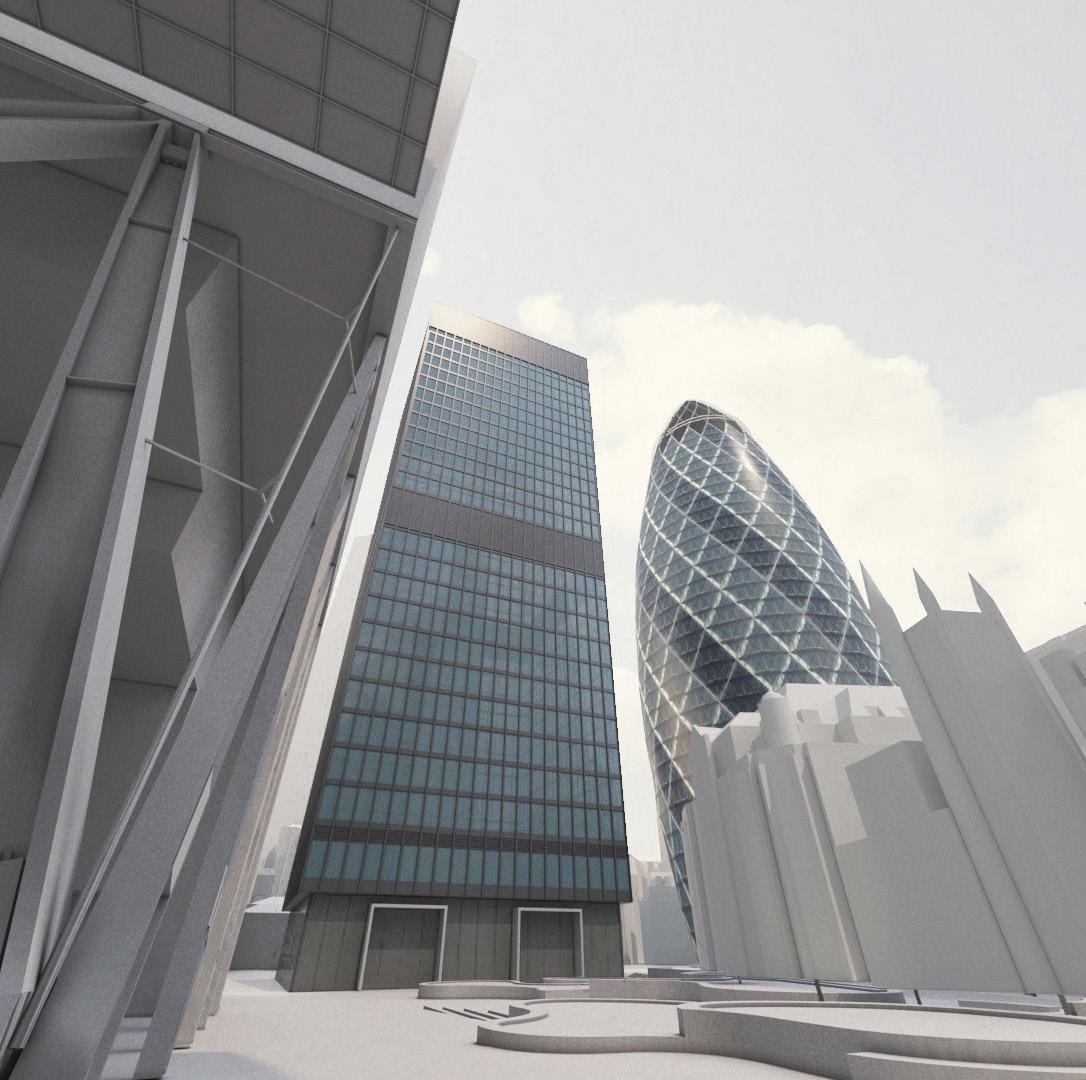
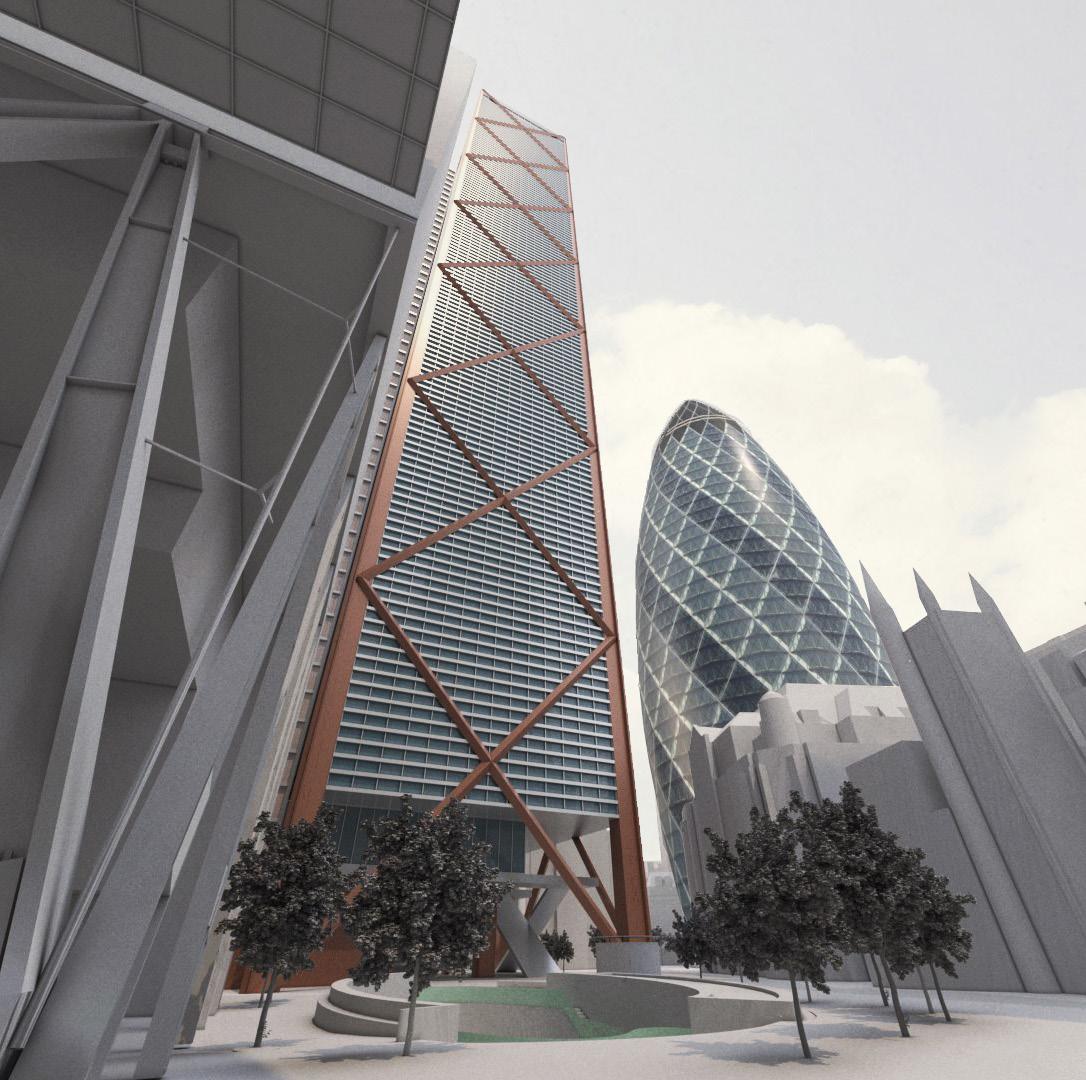

1. Verified view from Leadenhall Street / Lloyd’s Building junction, existing Aviva building & 2023 application.
2. Perspective section of 1 undershaft, adapted from EPA stakeholder presentation 27 November 2023.
3. Reflected ceiling plans comparing extent of visible sky between proposals.
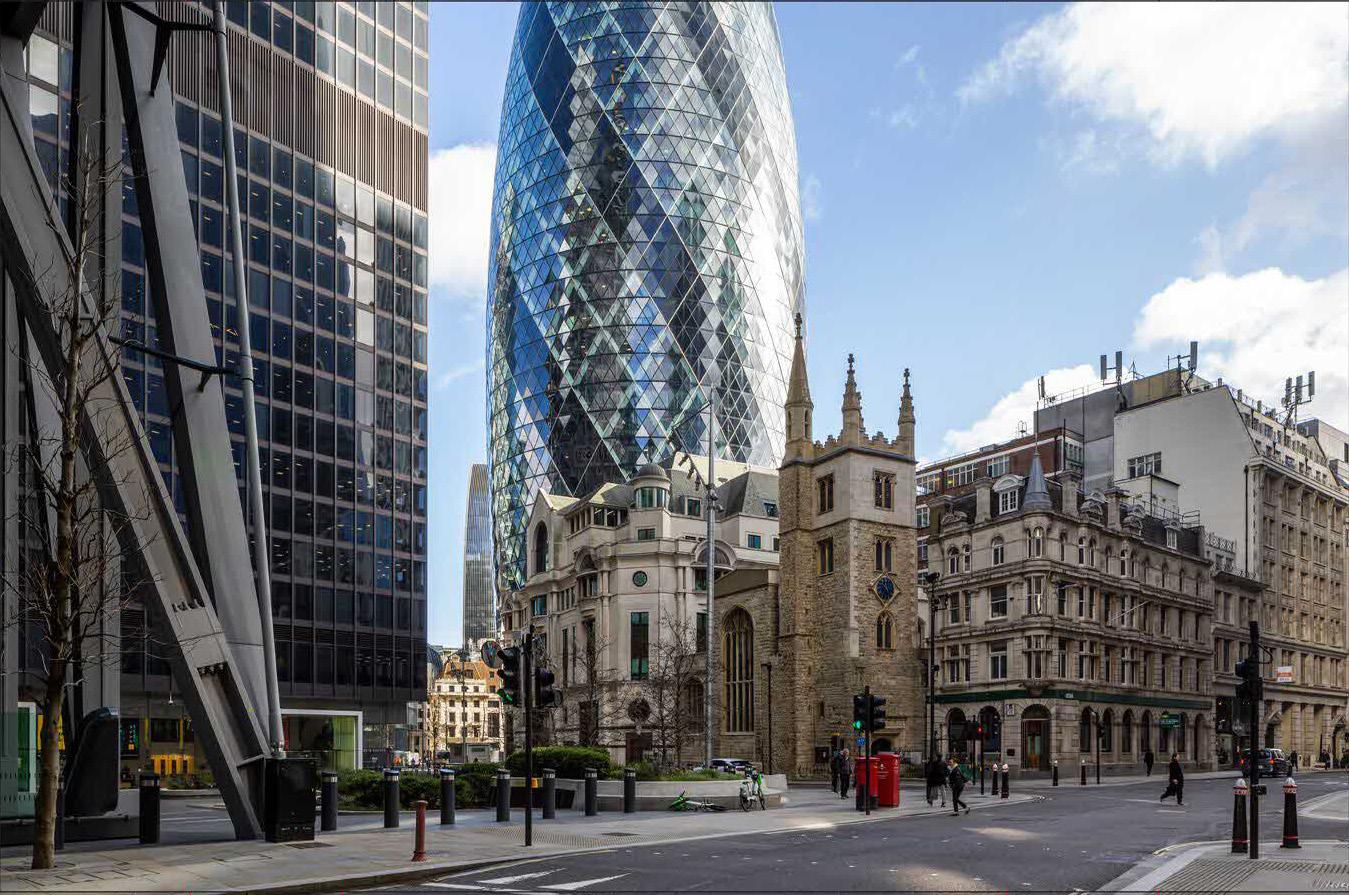
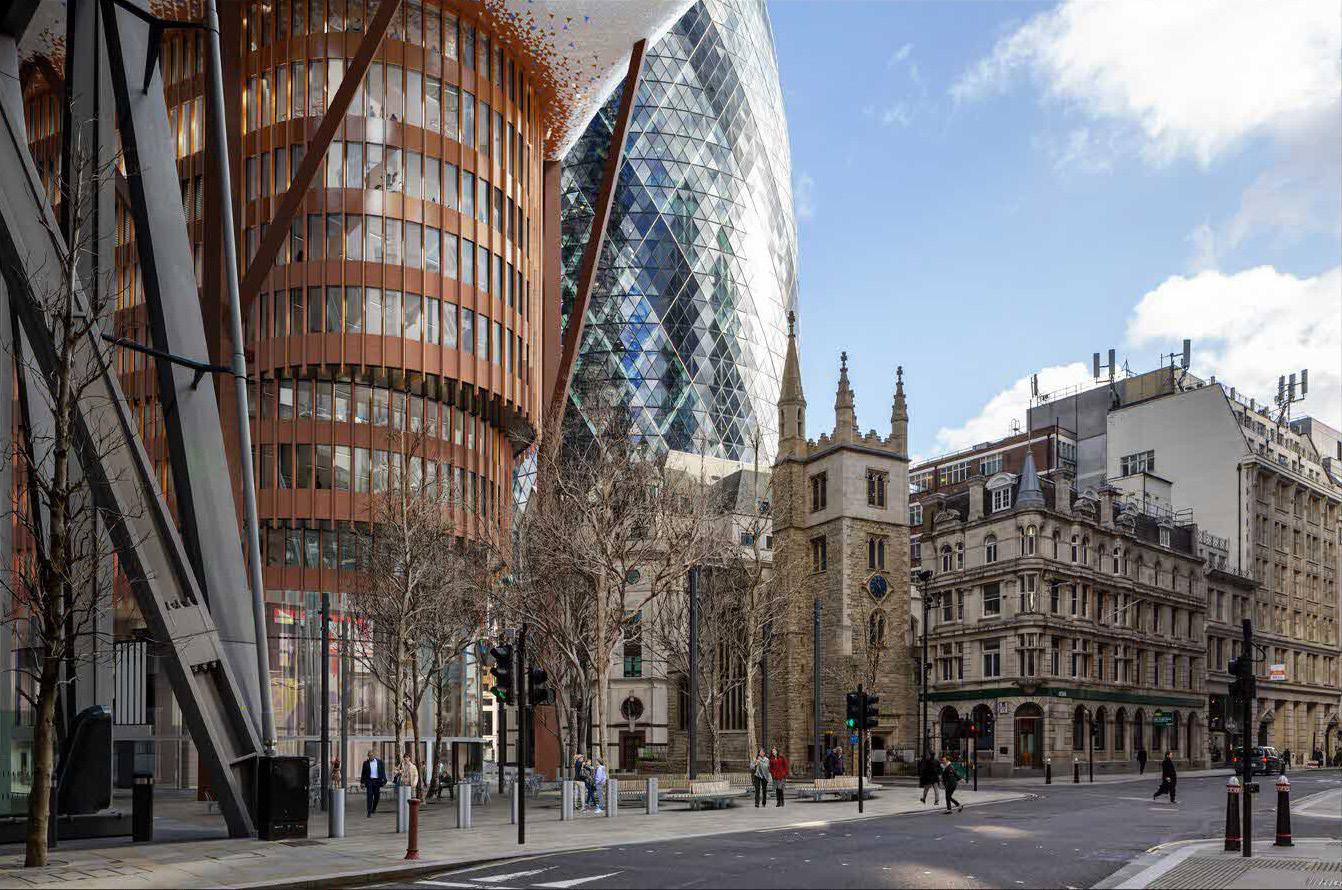
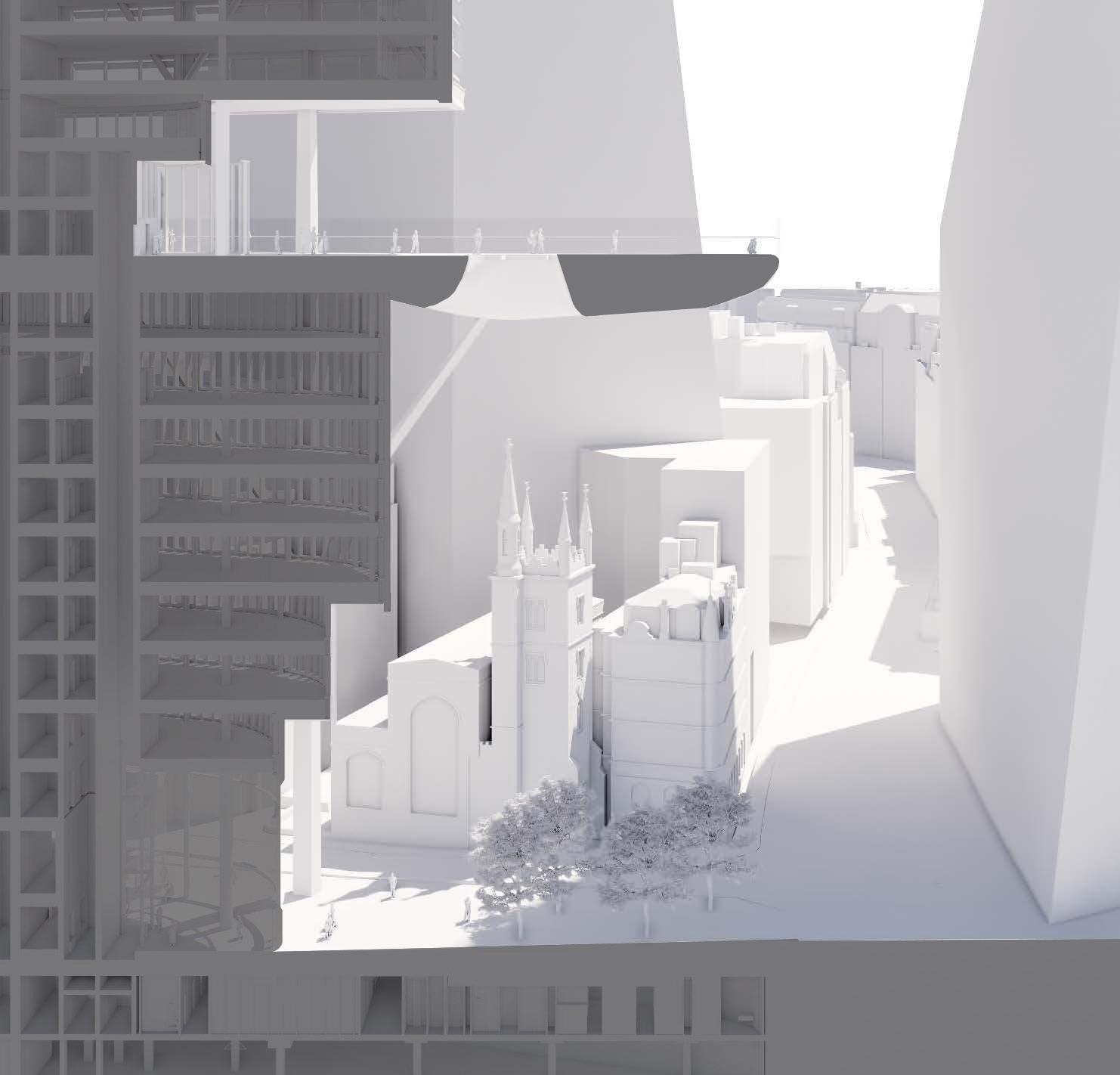
The existing area of St Helen’s Square is 2,433 m2. It is all open to the sky and elements. A substantial 29.6% (721 m2) -of that area will be lost because of the increased ground level footprint. This loss is the equivalent of approximately 7% of publicly accessible open space in the eastern cluster. The eastern cluster already has, by far, the lowest proportion of open space in The City, and there is a recognised need for more open space.
The development proposal with its over-hanging structure and protruding tongue will leave just 29.7% (723 m2) as open space open to the sky. Most of the space will be covered.



1. Existing view of sky from St Helen’s Square, with overlay of 2019 consented scheme & 2023 application proposals, highlighting significant loss of sky.
2. Section N–S through plaza to St Helen’s Square, & ground floor plan, 2019 consented scheme.



In sharp contrast, the 2019 extant planning permission kept the whole of St Helen’s Square and achieved a net-gain in area through the design of a lower ground plaza, creating a truly cathedral-like space extending through 1 Undershaft at street level.
It maximizes sunlight at street level, welcomes passing pedestrians into the space, opens the connection between St Helen’s and St Andrew Undershaft churches and creates a warm, pivotal civic realm at the heart of the City, framed by some of the most iconic buildings of our time.
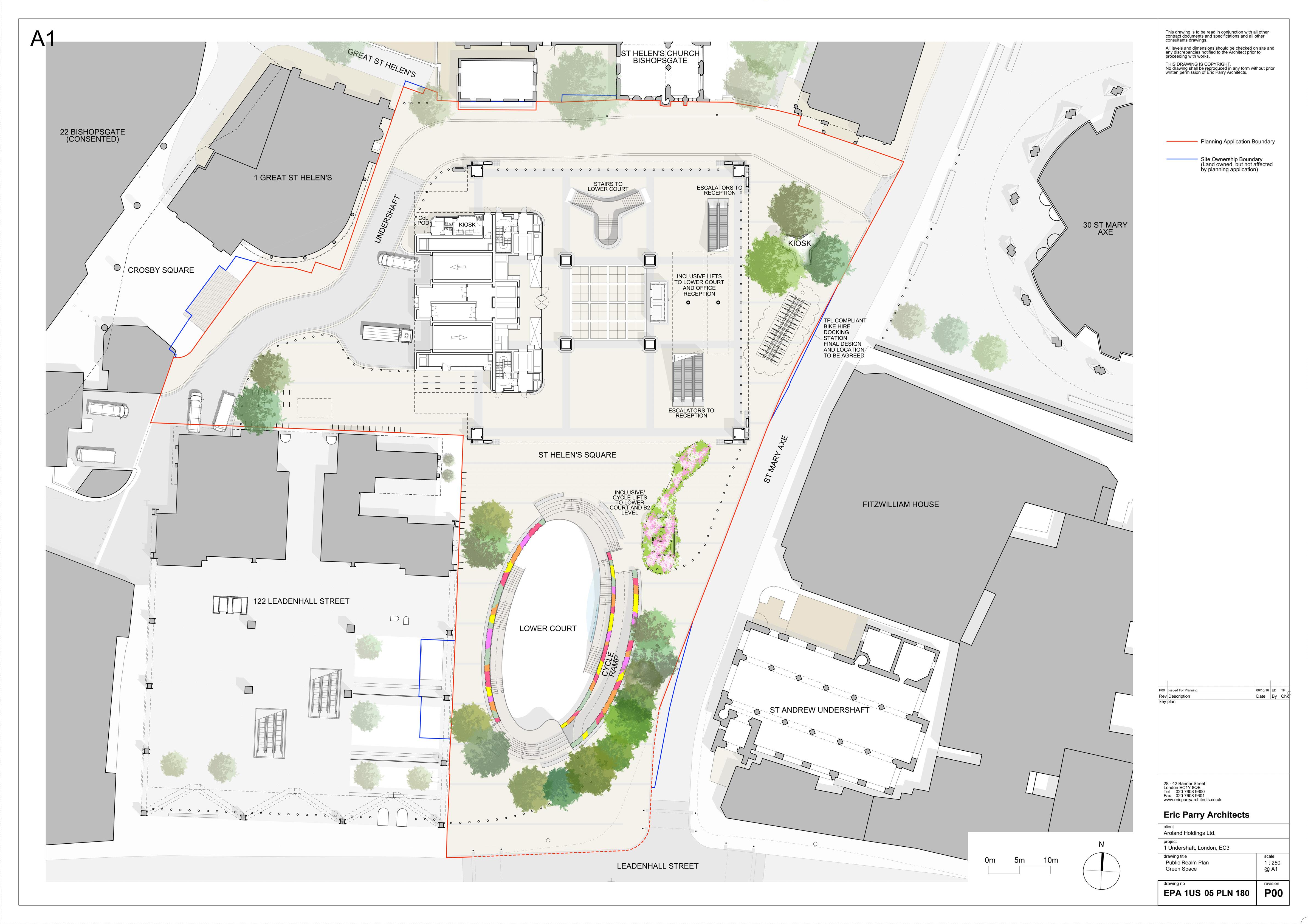

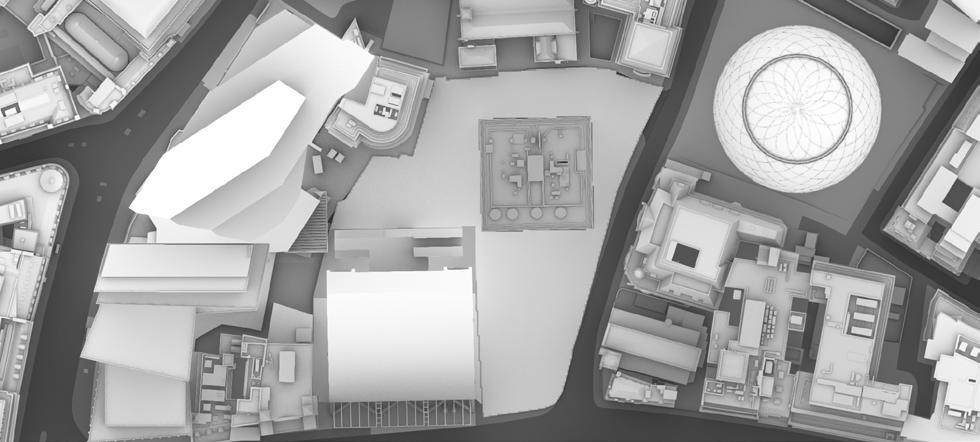

1. Comparison of total sunlight hours to public realm between 1 Undershaft proposals, combining information from 2023 application & post-submission consultation, results shown at 21st June for all three proposals.
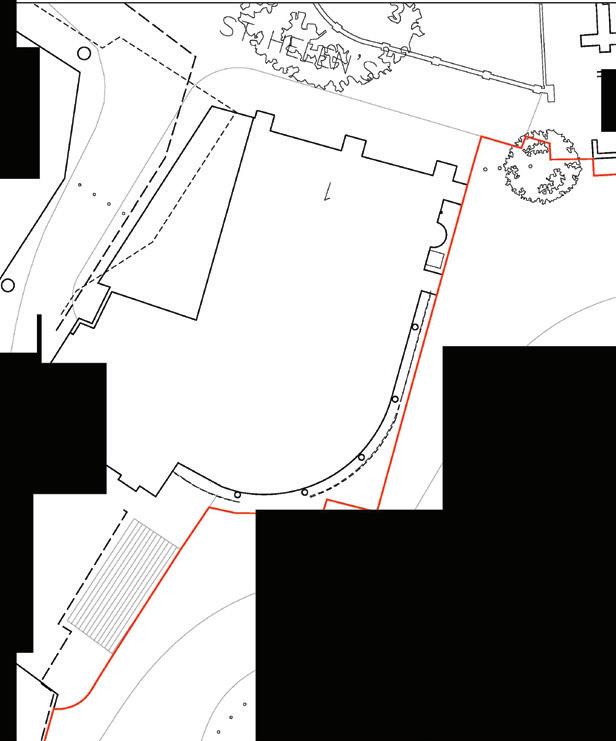
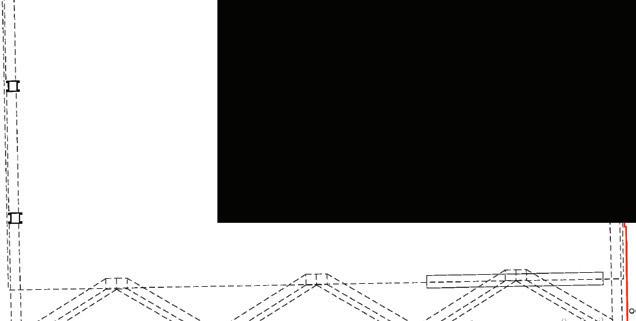
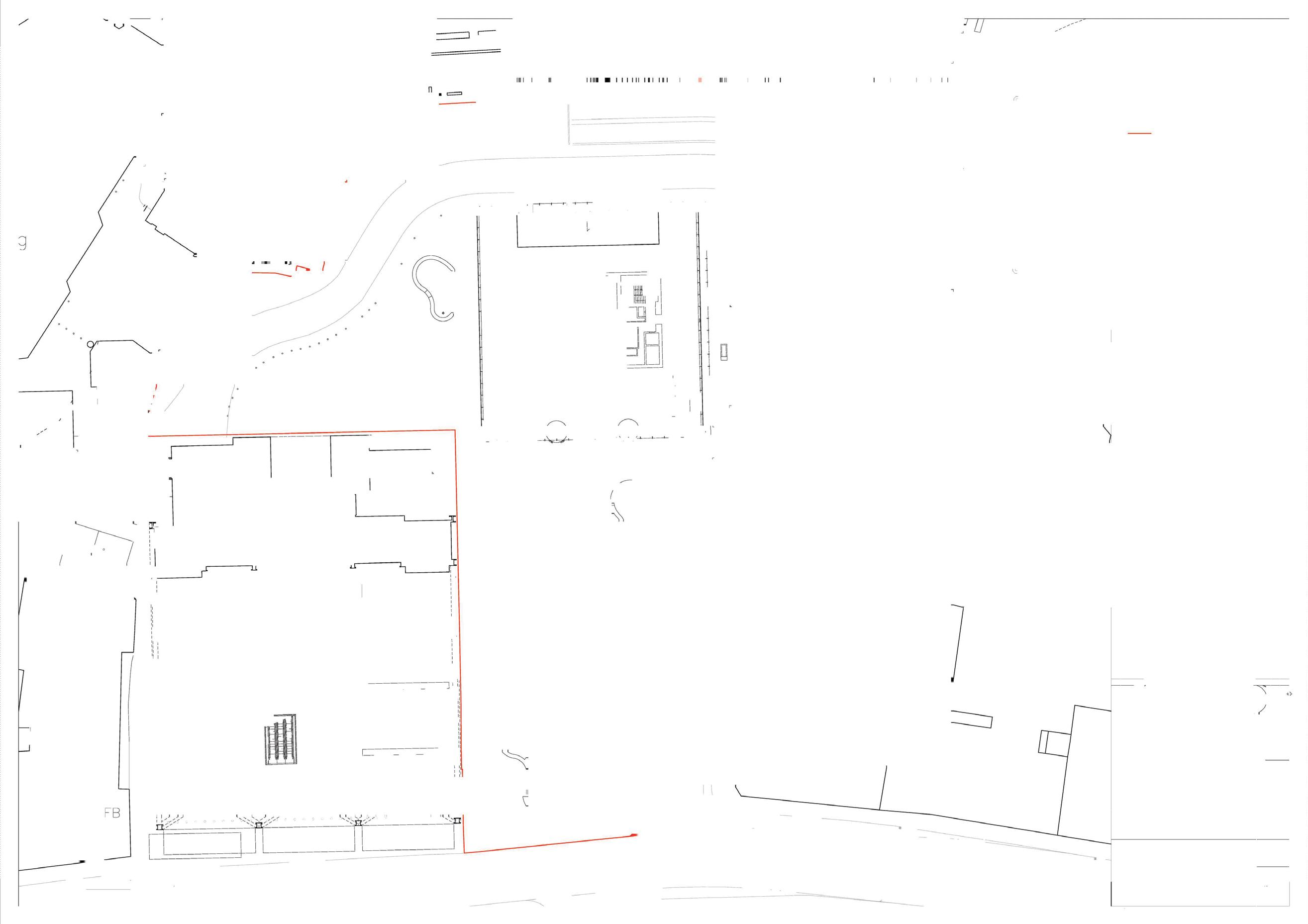
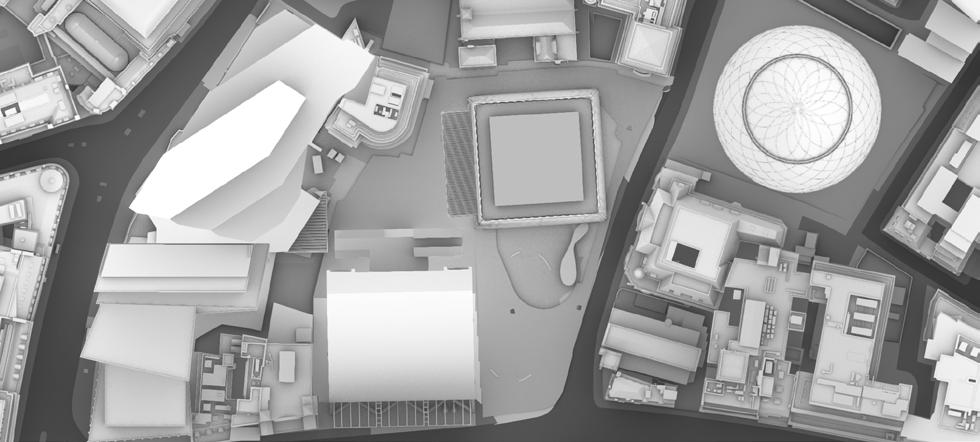
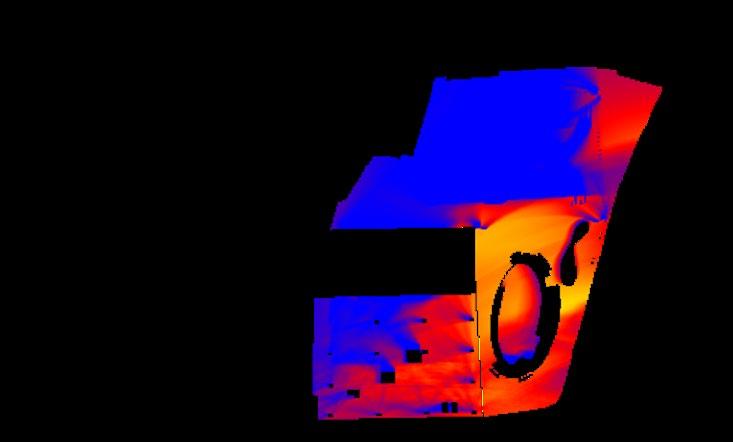

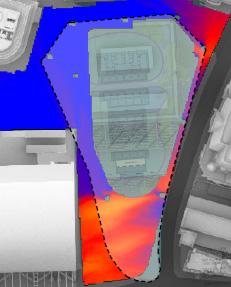
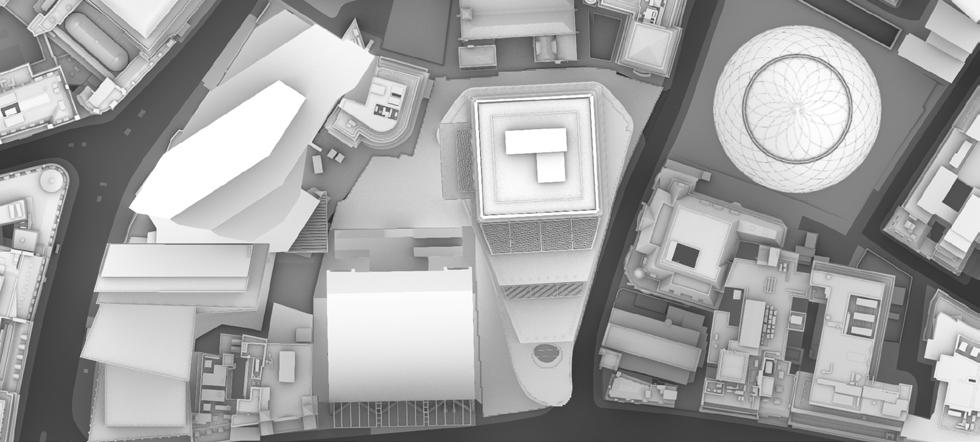
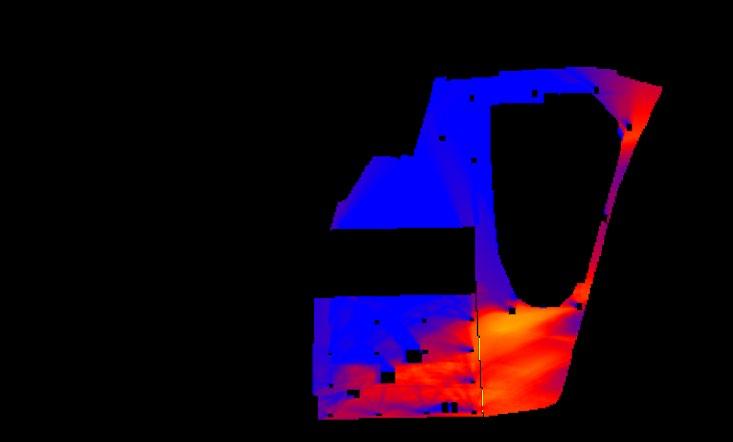
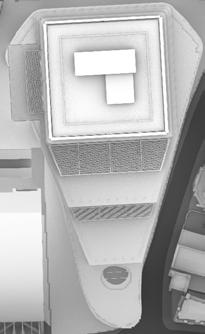
Increased massing of the lower and middle portions of 1 Undershaft, in addition to the L11 canopy, creates significant overshadowing in St
The centre of the square receives only approximately 3 hours of , with areas of the periphery dropping to less than
When compared to the existing situation, there is a clear and harmful reduction to the sunlight received, resulting in a detrimental impact to
In conclusion, the overshadowing assessments provided in both the submission documents and post-submission stakeholder report, demonstrate that there will be a noticeable and detrimental impact to the amount of direct sunlight received to St Helen’s Square as a result of the 2023 1 Undershaft proposal. St Helen’s Square will experience a significant reduction in direct sunlight received during summertime when the space is most frequently used for sitting out, resulting in what should be considered unacceptable harm to a unique external space within the eastern cluster.
It is accepted that there will be limited direct sunlight received in St Helen’s Square at Spring Equinox, March 21st, which is the BRE recommended testing time. This is due to the high density and height of surrounding buildings meaning the space will be already heavily overshadowed at this time of year, when the sun is at a mid-position in the sky dome. On this basis, the 2023 1 Undershaft proposal is unlikely to cause a noticeable reduction in direct sun.
However, at June 21st St Helen’s Square experiences excellent levels of direct sunlight in both the existing and consented situations. The 2023 1 Undershaft proposal however, results in a noticeable and substantial loss of sunlight due to the increased massing and proposed overhanging terrace. It is noted that the applicant has not provided a Permanent Overshadowing Study for 21st June, The BR Guide at paragraph 3.3.15 states. As an optional addition, plots for summertime (for example 21 June) maybe helpful as they will show the reduced shadowing then, although it should be borne in mind that 21 June represents the best case of minimum shadow, and that the shadows for the rest of the year will be longer.
St Helen’s Square will be less attractive, sitting out will be less pleasant, plant growth will be discouraged in summer, and increased moisture will be encouraged at ground level, giving rise to moss and slime. These findings are a clear departure from the BRE guidance in paragraph 3.3.1 of their handbook (Site layout planning for daylight and sunlight: a guide to good practice, BR 209 2022):
3.3.1 Good site layout planning for daylight and sunlight should not limit itself to providing good natural lighting inside buildings. Sunlight in the spaces between and around buildings has an important impact on the overall appearance and ambience of a development. It is valuable for a number of reasons, to:
– provide attractive sunlit views (all year)
– make outdoor activities like sitting out and children’s play more pleasant (mainly warmer months)
– encourage plant growth (mainly spring and summer)
– dry out the ground, reducing moss and slime (mainly in colder months)
– melt frost, ice and snow (in winter)
– dry clothes (all year).
Pedestrian link between churches Defined visual link No visual link
1. Aerial perspective sketches looking north-east across St Helen’s Square, comparing physical and visual relationships across historic public realm.
2. Historic Map Progression of historic link between St Andrew Undershaft Church and St Helen’s Church.
St Helen’s Church

St Helen’s Church
St Andrew Undershaft Church U n d e r s haft LeadenhallStreet StMaryAxe

St Andrew Undershaft Church U n d e r s haft LeadenhallStreet StMaryAxe
St Helen’s Church
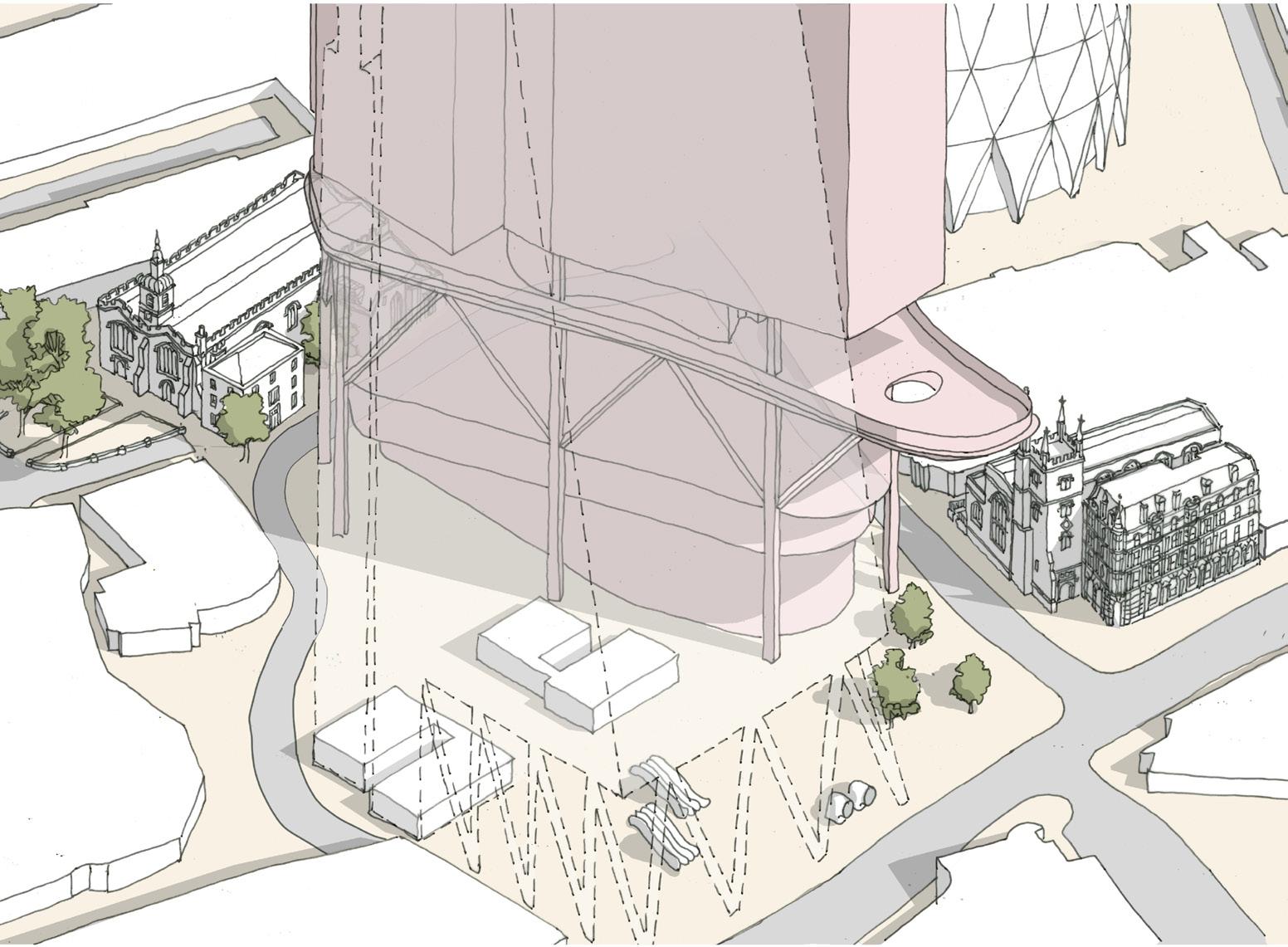
Andrew Undershaft Church
Direct pedestrian route reinstated between churches via the public open space under 1 Undershaft
Direct visual link between churches & St Helen’s Square through the public open space under 1 Undershaft
No direct pedestrian route between churches (access via the pavement to St Mary Axe & Undershaft)
No visual link between the churches
No visual link between St Helen’s Church & Square
This chapter summarises the Heritage and Townscape Appraisal of the 2023 application undertaken by Stephen Levrant Heritage Architecture, included within these Representations as Appendix C.
The creation of St Helen’s Square in the mid-20th century contributed an important new public space to the City and revealed the architectural interest of St Andrew Undershaft Church in a way that enhances the legibility of the building to the general public. The active use of this square benefits the public experience and appreciation of nearby heritage assets, including: St Andrew Undershaft Church (Grade I), St Helen’s Bishopsgate (Grade I) and the Lloyds Building (Grade I).
The significance of St Helen’s Square as a positive component in the setting of a number of highly significant listed buildings is considerably underplayed within the submitted Built Heritage and Townscape Reports (prepared by Tavernor, Dec. 23). The report suggests the proposals will result in ‘no harm’ overall (after undertaking an internal balancing exercise). Although it is very much agreed that the historic setting of St Andrew Undershaft Church and St Helen’s Church Bishopsgate has been severely eroded, this does not provide sufficient justification for further harm. The very fact that their setting has been compromised, necessitates a much more carefully considered approach for future development, ensuring cumulative impacts do not further erode the ability to appreciate the considerable significance of these of these Grade I listed buildings. Therefore, each planning application for a new development must be rigorously tested against the baseline, and alternative schemes which may reduce or indeed negate any harmful effects.
It is evident the 2023 redevelopment plans will cause harm through both physical loss of the square and through the indirect impact to the settings of nearby heritage assets of exceptional significance, including: St Andrew Undershaft Church (Grade I), St Helen’s Bishopsgate (Grade I) and the Lloyds Building (Grade I). This harm is most prevalent in views across St Helen’s Square, in which the distracting and stark materiality of the current design juxtaposes that of other contemporary forms and dominates street level views, rather than allowing St Andrew Undershaft Church to remain as the focal point.
The connective route between the two Medieval churches, as evidenced by historic mapping, was reactivated as part of the 2019 scheme. Introducing a major heritage benefit and enhancement to public realm.
When consulted on the previous, consented scheme, Historic England stressed the benefits of the improved connection between the two medieval churches, stating: “The remodelling of the ground plane around the proposed tower will introduce high quality materials, increase permeability and create sight lines between the medieval churches of St Helen and St Andrew Undershaft. All of this will have a significant positive impact on the settings of these grade I listed buildings”. This benefit is lost in the 2023 application design.
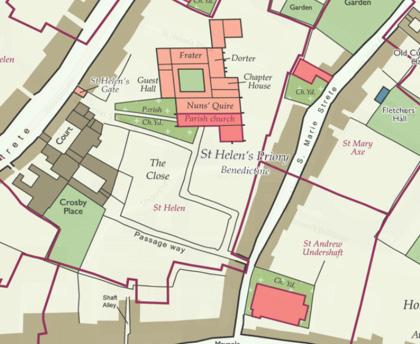

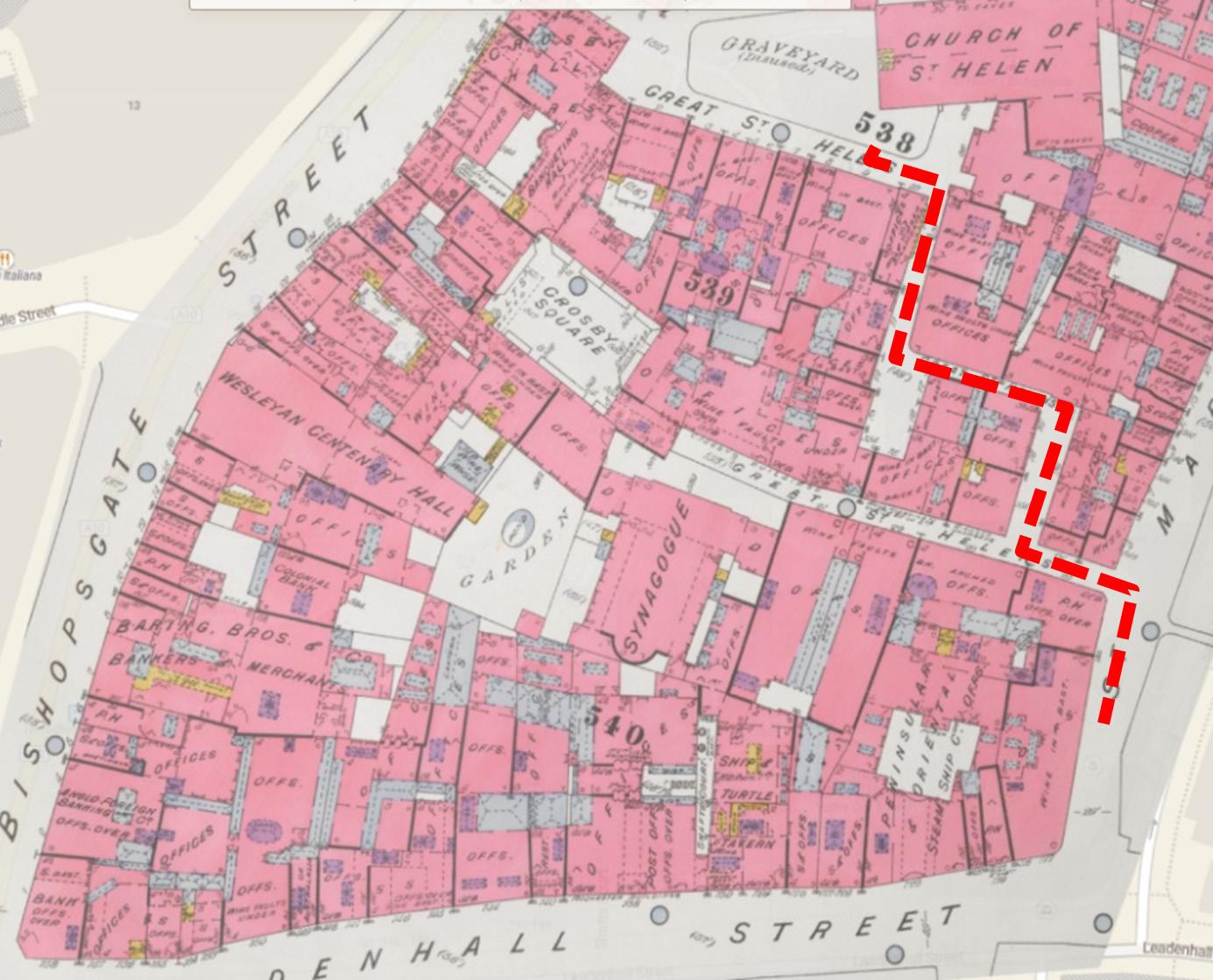
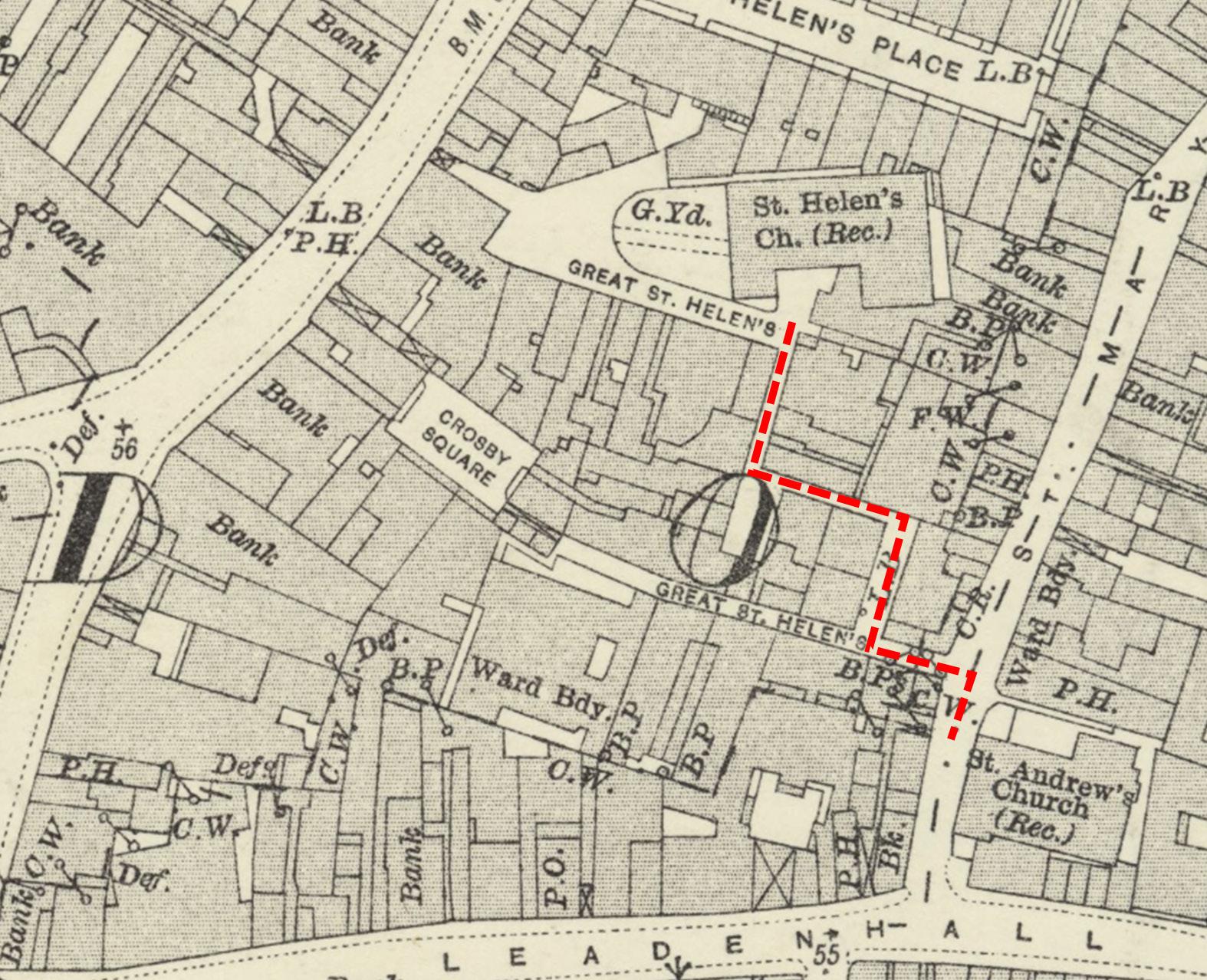
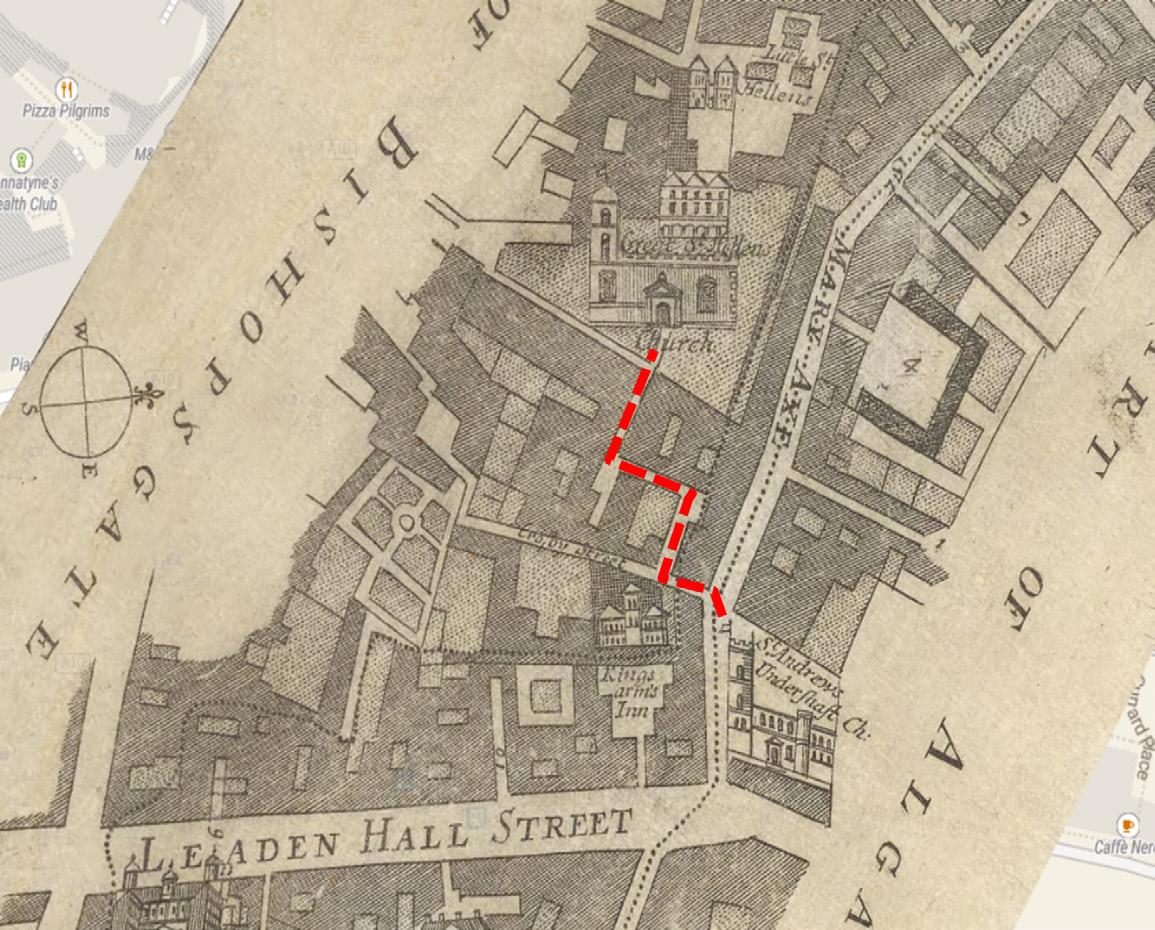


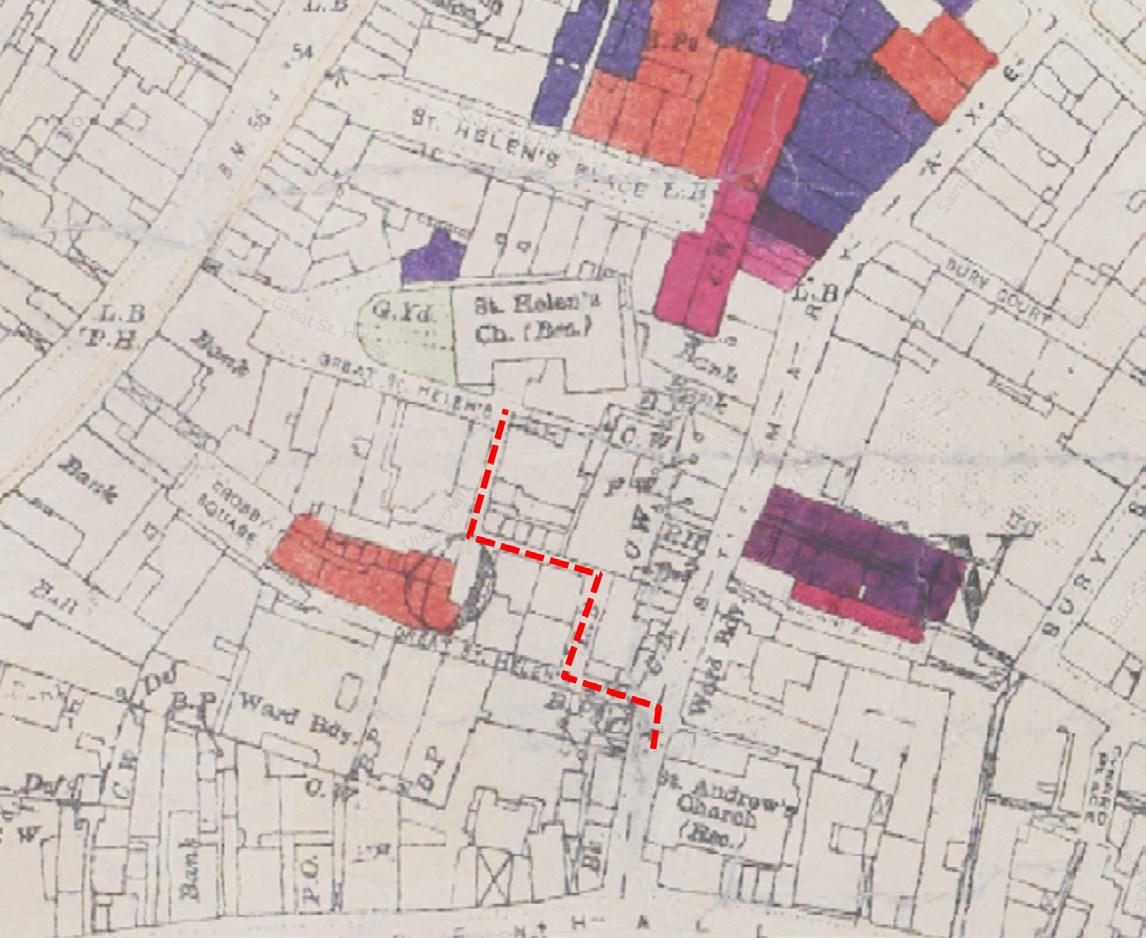
1. View from 30 St Mary Axe looking south east, 2019 consented scheme.
2. View from St Mary Axe / Bury Court looking south east, 2023 planning application.
3. Proposed north-south sections through 1 Undershaft and St Helen’s Square.
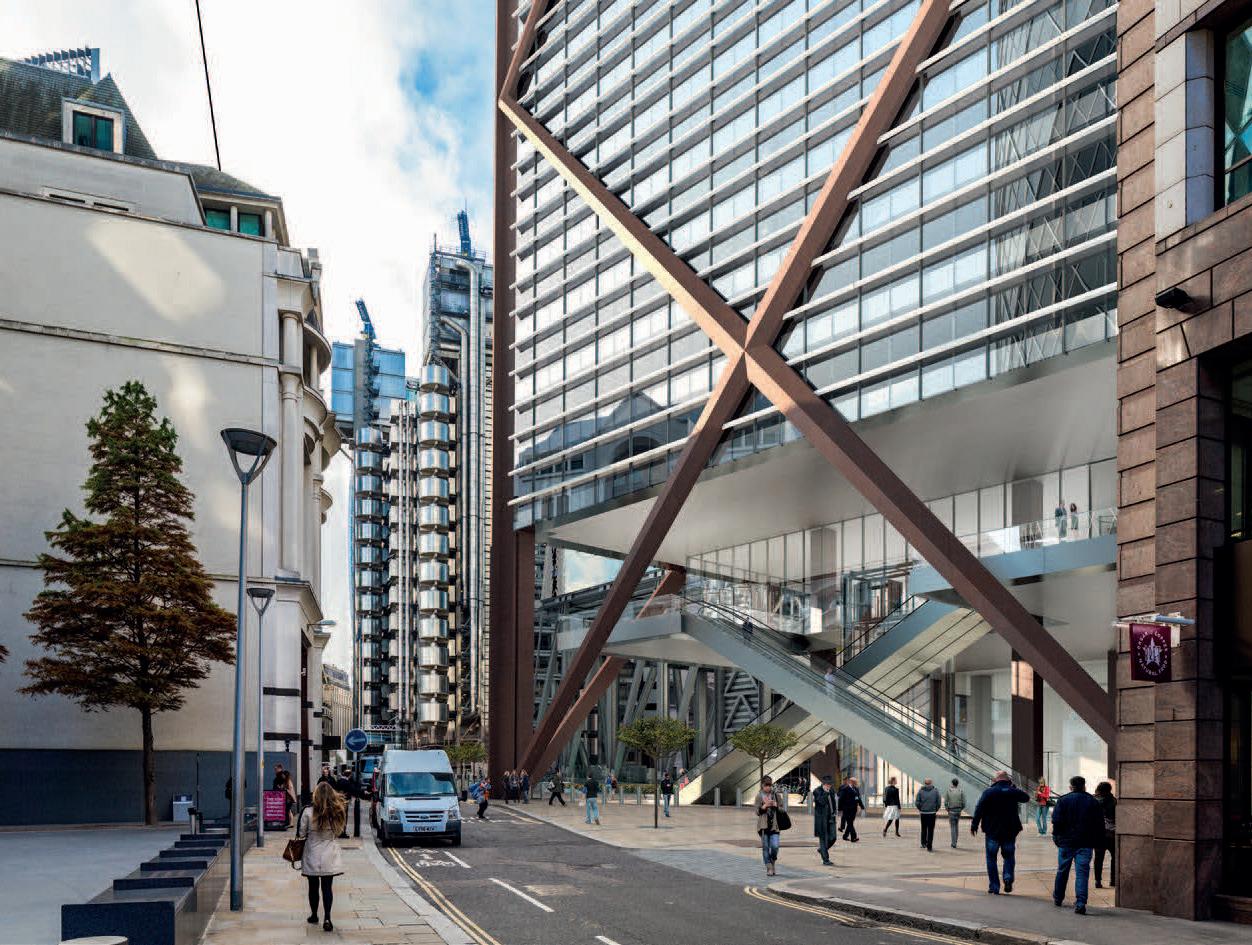
2.
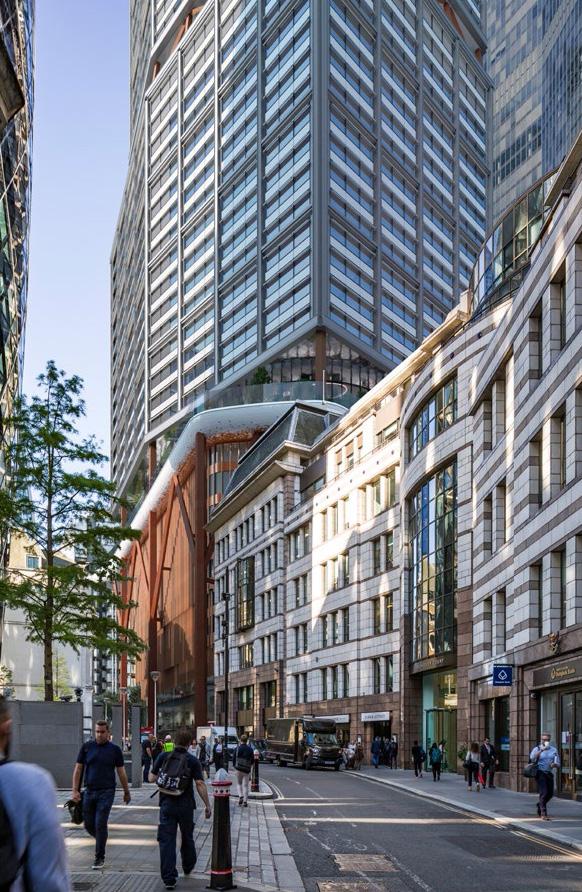
The ‘tall building’ character in the Eastern Cluster is striking and dominant. Each of these tall buildings, whilst distinctive in their own right, present a harmonious composition through use of lightweight, reflective materiality and glazing. Close range views from the surrounding streetscapes illustrate that the buildings work together harmoniously in townscape views, allowing one another to be read in isolation, with their full elevations and external form appreciable, but can also be read as a collective and striking cluster in long-distance views from the wider cityscape. The townscape interest of the Eastern Cluster is appreciated at an international level, and thus, it is necessary for new design and development to respect the existing harmony between open spaces and built form and to be of outstanding quality.
The revised 2023 design proposal for 1 Undershaft presents a jarring and alien element in its current context and its encroachment on the settings of nearby listed buildings is inappropriate and most importantly, avoidable. The protruding tongue together with the enlarged footprint, have eroded the character and ambience of the open space. Attempts to provide free, high-level public access present challenges for permeability and engagement. These high-level public spaces lack the casual or momentary engagement that is currently prevalent within the accessible, ground level space provided by St Helen’s Square. Instead, reaching these higher levels requires a deliberate investment of time and effort, placing an obligation on the participant. Even with the design rationale of the present proposal, the tongue does not flow from the elemental form but is planted in ungainly superposition on already incoherent and disparate taxis. This has not only eliminated the element of altruistic intent, also has no meaning as an essential contribution to the setting of a tall building.
The refined architectural panache and élan which had been applied to the previous, 2019 consented scheme, was undoubtedly beautiful and demonstrably more appropriate for this setting. It maintained and enhanced a sense of openness to the base of the building, which mirrors the contemporary form and welcoming character of The Leadenhall Building, with elements of the construction exposed in a light yet ‘truthful’ way. The 2023 design is the antithesis of beauty. Instead of a dignified, elegant repose, it is aggressive, forceful and un-restfully brutal.
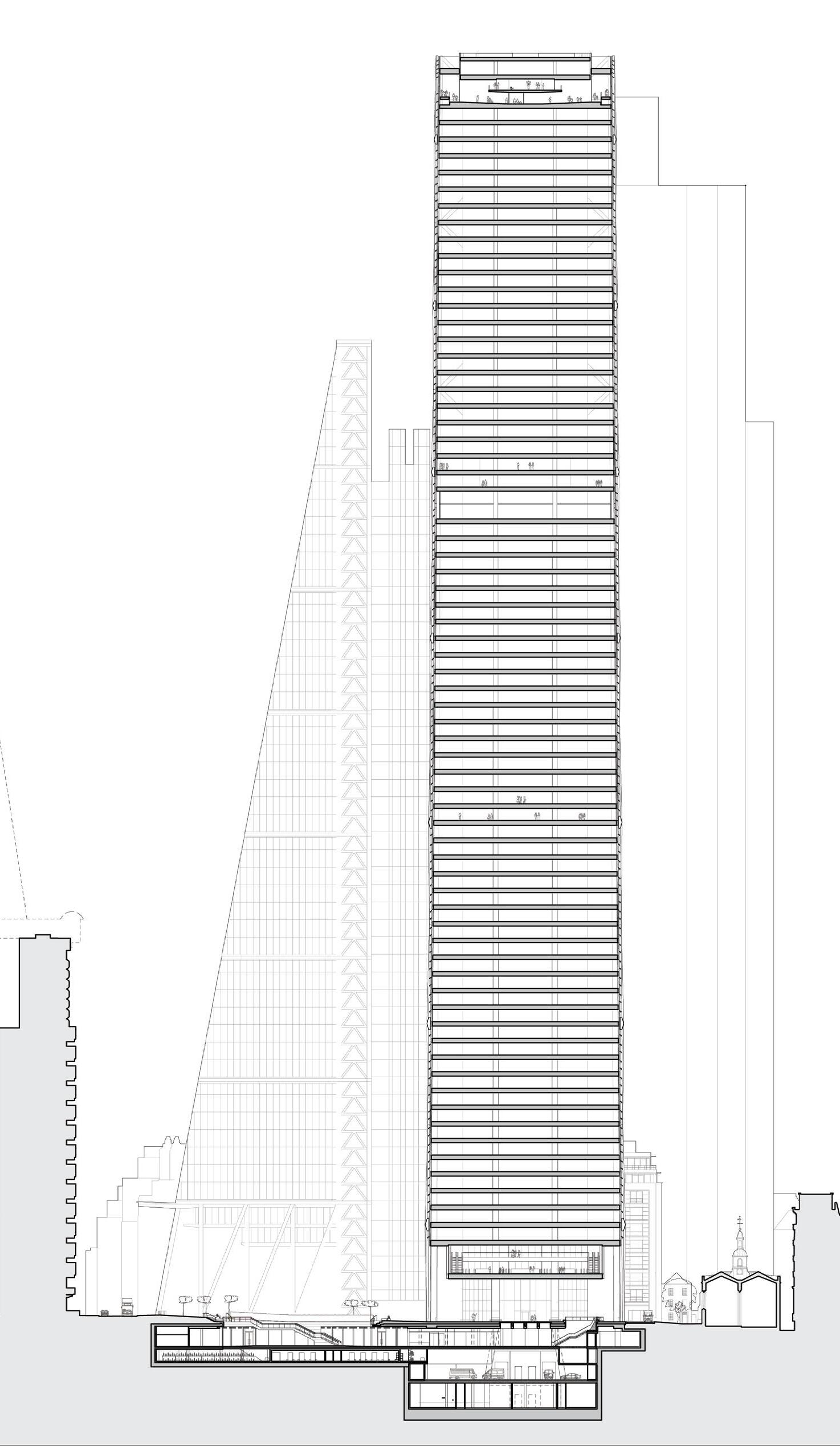
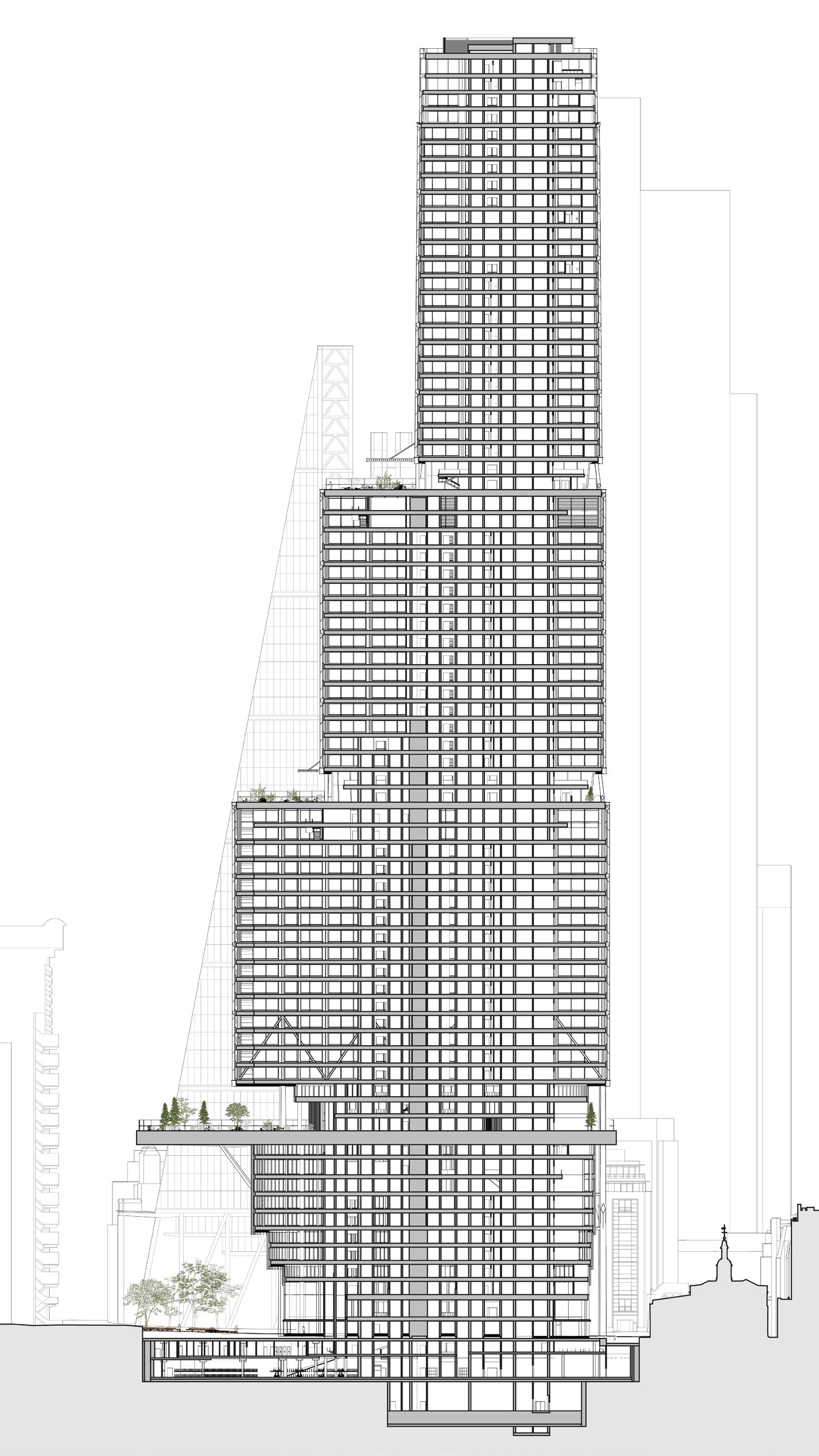
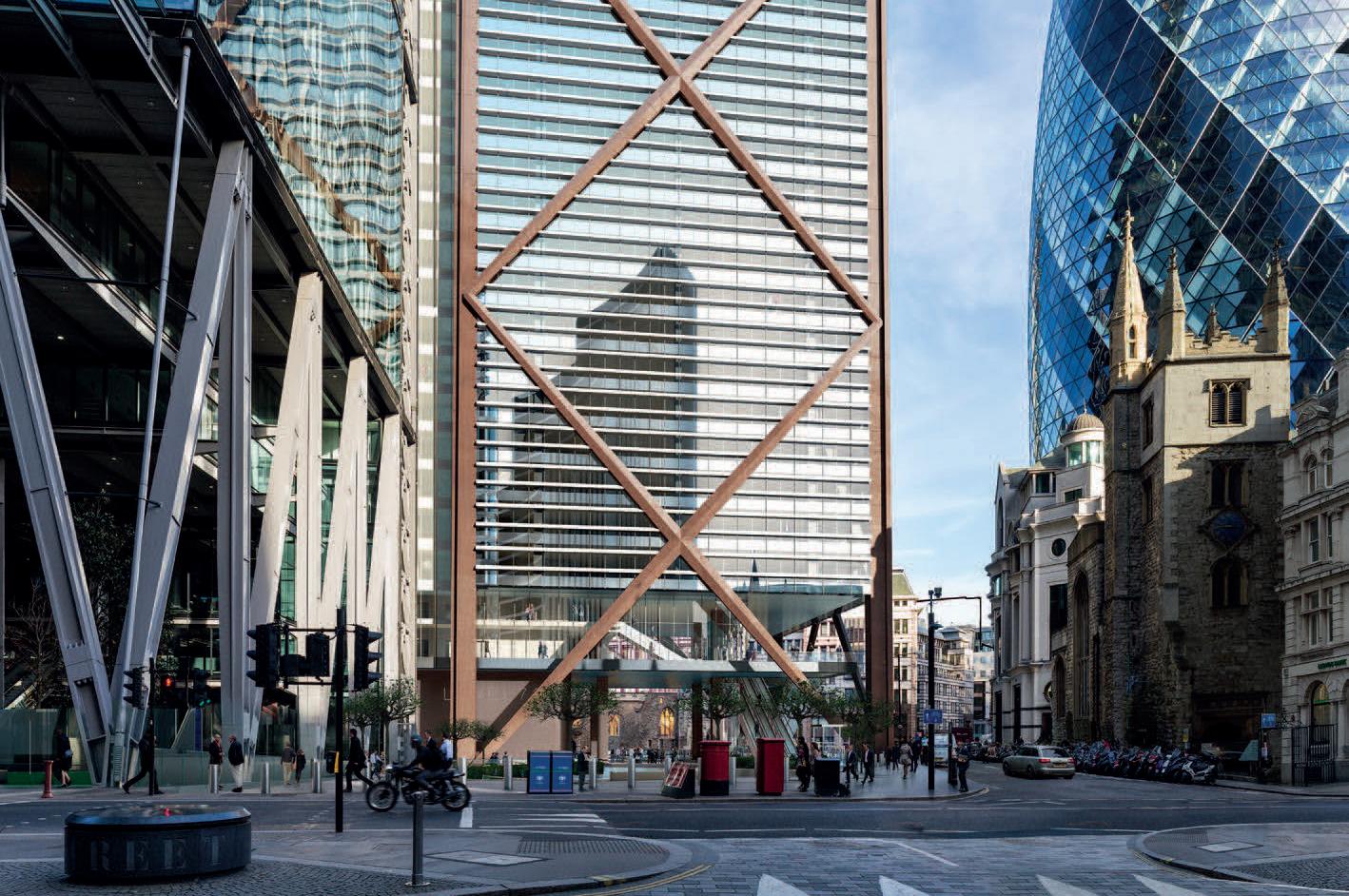
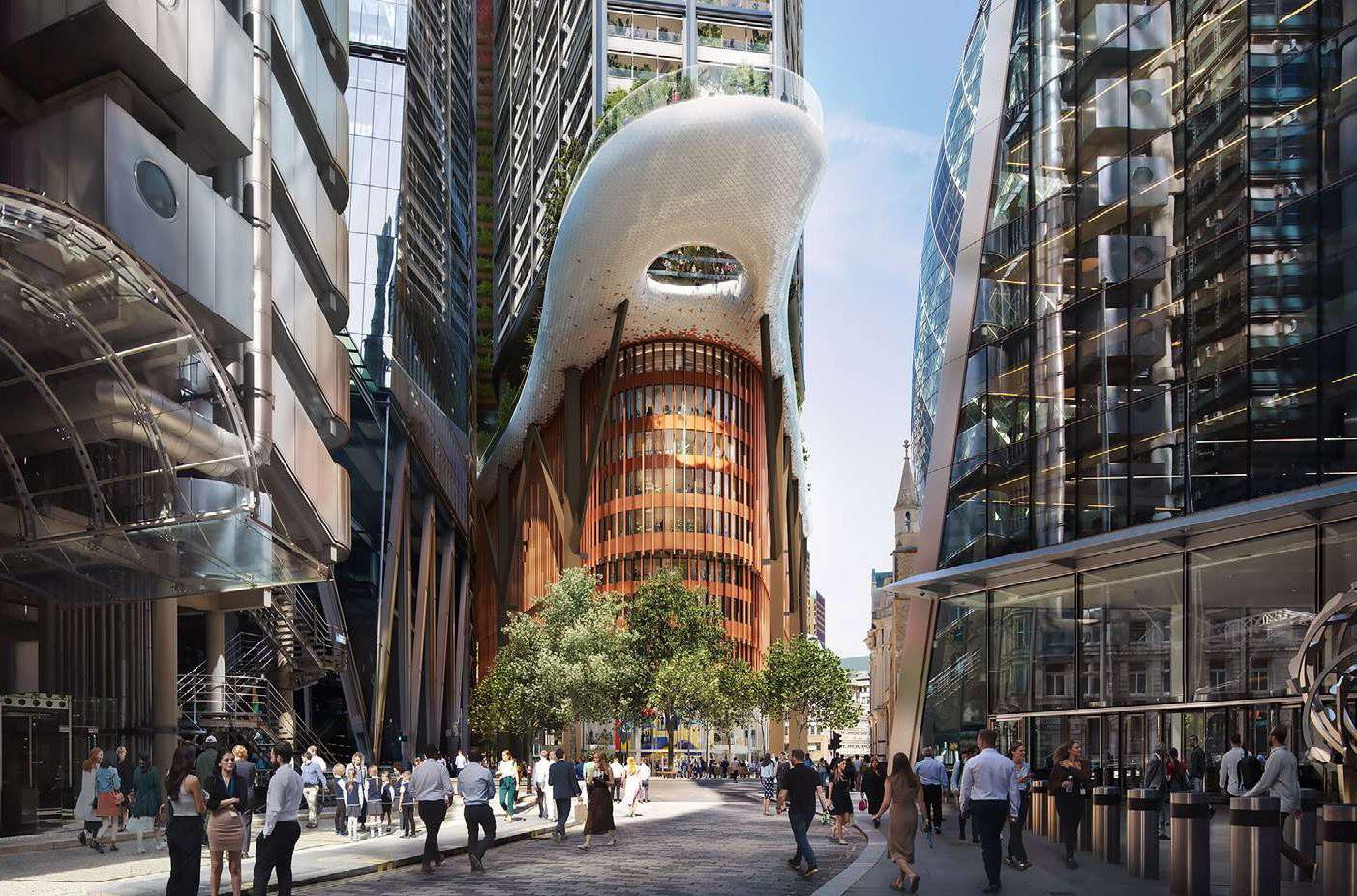
1. Aerial perspective sketches looking north across St Helen’s Square.
2. View north towards St Helen’s Square and St Helen’s Bishopsgate Church from Lime Street, 2019 consented scheme.
3. View north towards St Helen’s Square (St Helen’s Church obscured) from Lime Street, 2023 application.
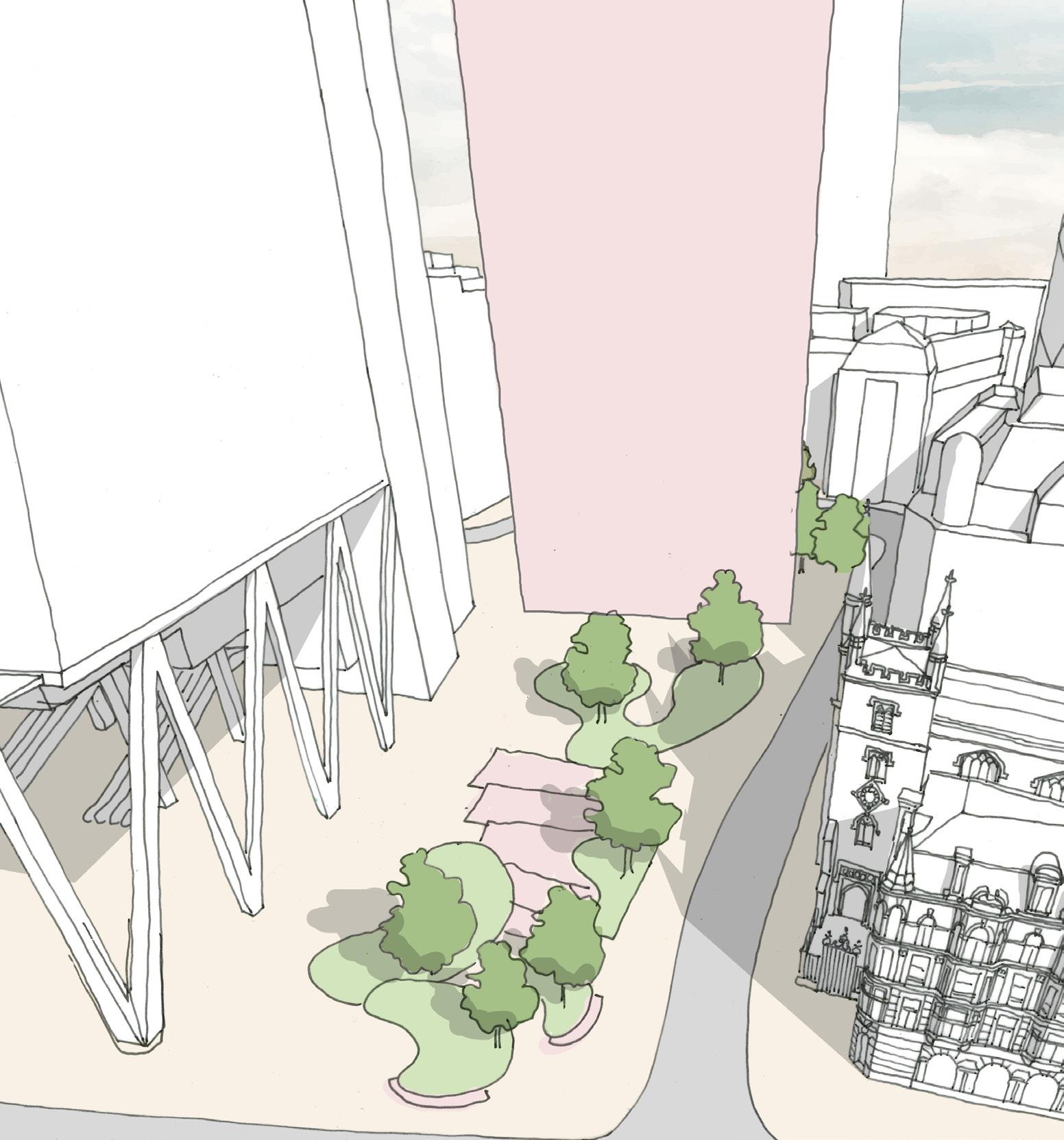
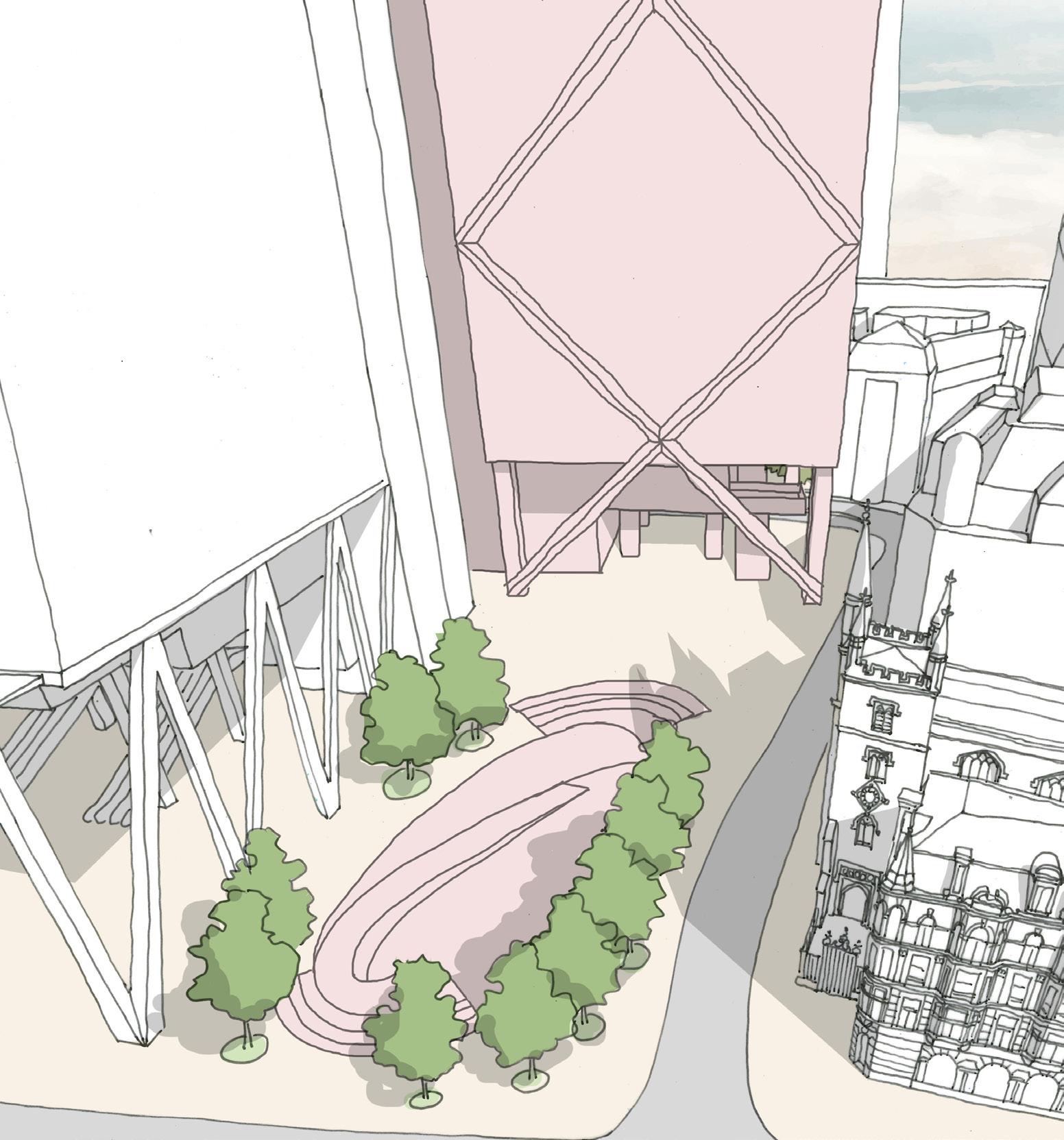
– Upper floorplate of Aviva building is entirely to the north of St Helen’s Square, causing no overshadowing or reduction of visible sky from street level.
– Increased floorplate is entirely to the north of St Helen’s Square, causing no additional overshadowing or reduction of visible sky from street level.
– By lifting upward to create a generous undercroft, the base integrates well with the street frontage of adjacent buildings and reveals the connection between St Helen’s Church / Square, and St Andrew Undershaft Church, enhancing the pedestrian experience of the public realm in the heart of the City Cluster (contrary to London Plan Policy D9, and paragraph 3.9.8 advice on the design of the base of tall buildings).
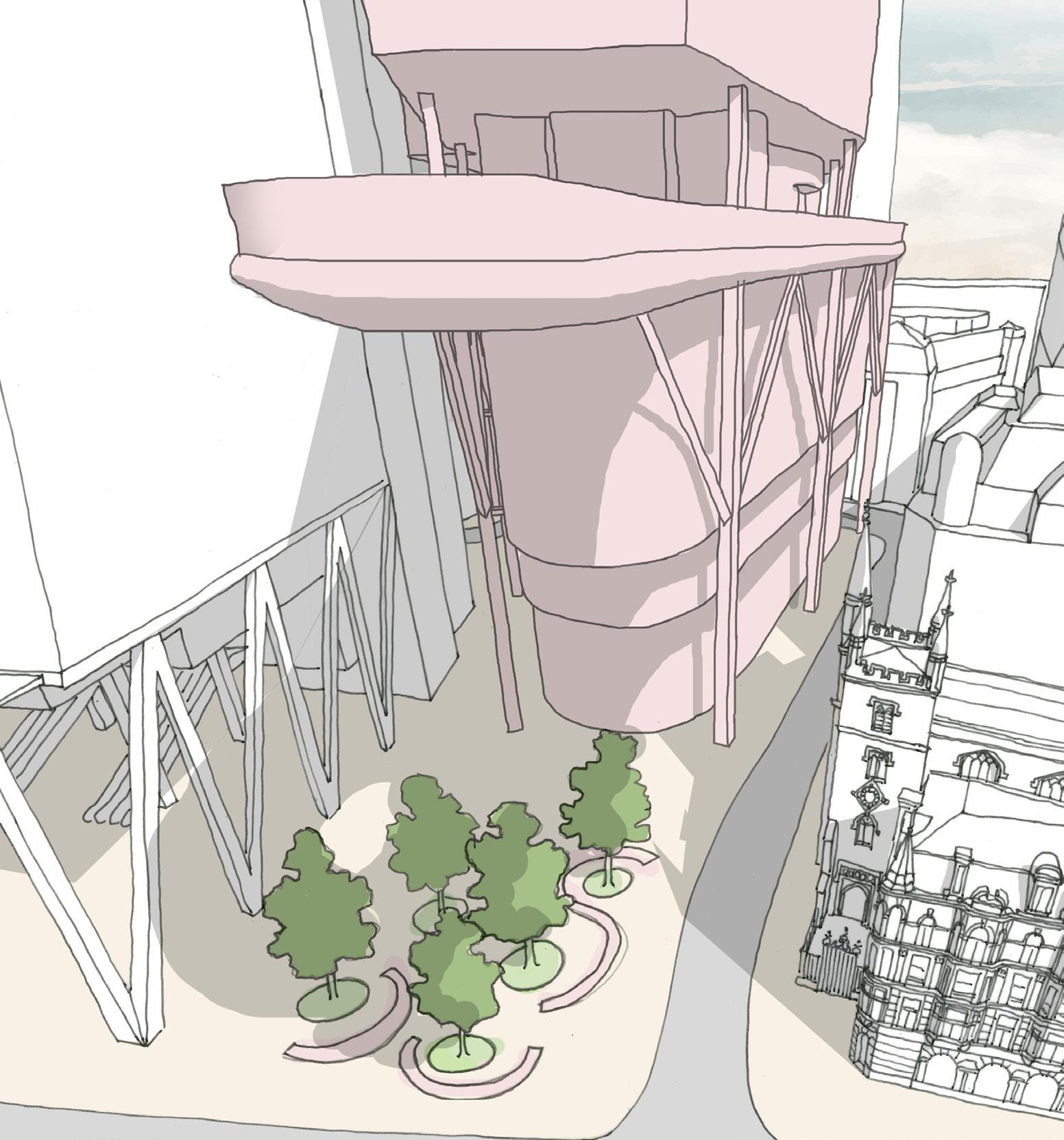
– Increased floorplate and projecting podium garden significantly encroaches into and overshadows St Helen’s Square, reducing areas of visible sky from street level.
– The base of the building fails to adequately frame the public realm and streetscape. The significant reduction in size of St Helen’s Square and overshadowing by the projecting podium and middle massing cause significant harm to the quality of public realm and pedestrian experience (contrary to London Plan Policy D9, and paragraph 3.9.8 advice on the design of the base of tall buildings).
In conclusion, the revised proposal is considered to give rise to identifiable harm through inappropriate design, bulk and alien character. It is thus in direct conflict with the policies contained within the 1990 Planning (Listed Buildings and Conservation Areas) Act, the NPPF (Dec 2023) and local planning policies, with particular reference to Policy D9, (point d) of The London Plan; and DM 12.1, as it undermines a well utilised, open public space within the settings of some of the City’s most important heritage assets.
As stated within para.206 of the NPPF (2023), ‘Any harm to, or loss of, the significance of a designated heritage asset (from its alteration or destruction, or from development within its setting), should require clear and convincing justification’. It is asserted this justification in respect of settings has not been provided within the submitted reports.
It is therefore strongly recommended that the proposals are reconsidered in order to avoid harm to built historic environment.
Whilst it is recognised the 2023 proposals for 1 Undershaft will bring about a number of public benefits, it is clear these benefits could be achieved with an alternative scheme which could avoid any harm to heritage assets. The 2019 consented proposals were considered appropriate in this regard.
The 2023 design heavily reduces the sense of openness and will introduce an alien character in the immediate setting of the Grade I listed St Andrew Undershaft Church, contributing to a sense of visual clutter and distraction. This presents a direct conflict with the policies contained within the City of London Local Plan (2015), with particular reference to Policy CS 10 – Design, which requires that new development promote an attractive environment by: ‘Ensuring that the bulk, height, scale, massing, quality of materials and detailed design of buildings are appropriate to the character of the City and the setting and amenities of surrounding buildings and spaces’.
Policy DM 12.1 Managing change affecting all heritage assets and spaces also stresses that: ‘ The loss of routes and spaces that contribute to the character and historic interest of the City will be resisted’. The 2023 design has lost the substantial heritage benefit of reactivating the historic route between the two Grade I listed Church buildings. This should be considered in the planning balance for the current application.

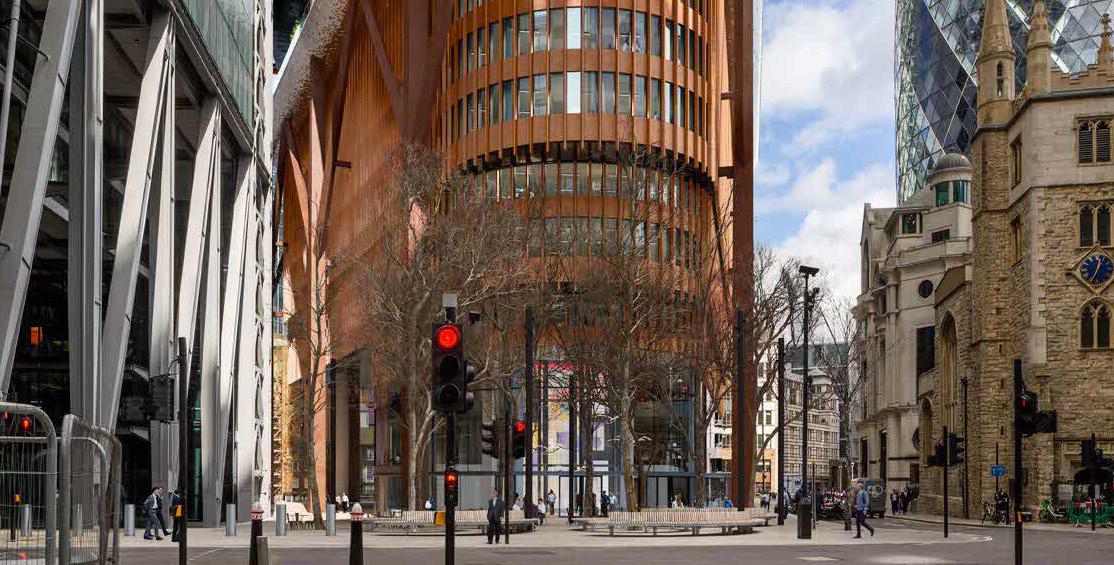
Appendix B contains an assessment of the 2023 application for 1 Undershaft against the Development Plan policies relating to design, heritage and public realm.
City of London Local Plan 2015
– Core Strategic Policy
CS7 Eastern Cluster
– Core Strategic Policy CS10 Design
– Policy DM10.1 New Development
– Policy DM10.7. Daylight and Sunlight
– Policy DM12.1 Managing Change Affecting all Heritage assets and Spaces
– Core Strategic Policy CS14 Tall Buildings
– Policy CS19 Open Spaces and Recreation
– Policy DM19.1 Additional Open Space
Testing the 2023 application against these policies which require all development to protect, enhance and, where necessary, such as in the eastern cluster, increase public space and respect the townscape and heritage assets:
– The scale, bulk and massing of the base and middle of the building is not appropriate to the character of St Helen’s Square, St Mary Axe and Leadenhall Street. The design jars with, dominates and harms the setting of the buildings in St Mary Axe, including St Andrews Church (Grade I listed), the Lloyds Register (Grade I listed), and diminishes the amenities and character of St Helen’s Square.
– The design does not have an appropriate street level presence and relates poorly to the surrounding context.
– The impact on the skyline as experienced by pedestrians in the streets of Leadenhall and St Mary Axe, and St Helen’s Square, would be seriously compromised by the scale and massing of the lower section of 1 Undershaft, which would project out across St Helen’s Square.
– The proposals do not respect the relationship with existing tall buildingsThe scale and mass of the proposed building would merge with the scale of the Leadenhall Building at the lower levels, creating a dominant mass of building, completely changing the character and amenity of St Helen’s Square, the public open space beneath the Leadenhall Building, and the setting of St Andrew’s Church and the Lloyd’s Register.
– The eastern cluster already has, by far, the lowest proportion of open space in The City, and there is a recognised need for more open space.
– St Helen’s Square is the primary civic space in the Eastern Cluster but despite this, the proposals reduce its area by 29% (from 2,433 sq. to 1,723 sq.). This loss is the equivalent of ~7% of publicly accessible open space in the eastern cluster.
– The projecting floorspace and terrace gardens will overhang most of the remaining area, having a significant impact on the levels of sunlight and daylight enjoyed by pedestrians in the Square. The daylight and sunlight in St Helen’s Square would be dramatically reduced, changing completely the character of this important public open space. It could no longer be described (as set out in the 2019 Cluster Vision) as “the Principal Space serving the Eastern Cluster”. It would become a darker, secondary space, primarily providing pedestrian routes to and from the 1 Undershaft building.
–
– Due to the approximate floorspace increase of 31,000 sqm (20%) compared to the 2019 extant permission, as well as an increase in scale and massing, there will inevitably be a significant increase in pedestrian movement to and from the building (the effect is clearly shown in the forecast pedestrian movement scenarios at pages 38 – 49 of the Space Syntax Assessment, December 2023). Therefore, not only will there be a considerable number of additional pedestrians using St Helens Square, but it will also itself have a much-reduced area. It will therefore not be possible to provide the full range of open space activities that the Square currently provides.
– The opportunities for socialising, events and quiet relaxation will be diminished, preventing St Helens Square from performing its current role as “the canvas for active and engaging public life to flourish” (as described in the City Cluster Vision).
– St Andrews Church has an important relationship to St Helens Square, which is large enough to be a place for quiet reflection in the sun, alongside plants and trees, as well a place for socialising and events. That relationship will be harmed.
– St Helen’s Square is accessible for all, at all times of the day and evening. It is seamlessly connected to the streets and alleyways of the City, and to Leadenhall Plaza. The City Open Space Strategy states at paragraph 4.2.2:
“The first priority is to maintain and make the most of existing open space in the City, which is such a scarce and valuable resource.”
– The publicly accessible open space that is proposed at level 11 and close to the top of 1 Undershaft, requires lift access, is likely to require security checks like many of the roof terraces in the City.
– The proposals reduce the area for pedestrian routes through and around the new development because of the 29% reduction in St Helen’s Square.
– They do not provide an alternative public pedestrian route of at least an equivalent standard across the area of St Helen’s Square which will be lost to the development, and an important historic route between the two Grade I listed churches is also lost. Space that may be gained to the north, adjoining Undershaft Street, would be in shade throughout the day and would not be an equivalent replacement of area lost in St Helen’s Square.
– These terraces, however well designed and managed, are not an alternative to protecting and improving public open space at street level.
– The extant 2019 planning permission protected St Helen’s Square and extended the public open space by creating a lower ground plaza that is open to the sky and connected directly to the main square. It also creates a new public open space through the base of the building in an uninterrupted space 3 to 4 storeys in height.
This space also restored the historic visual and functional connection between the two medieval Churches flanking the open space, which is lost in the 2023 application.
Overall, the application conflicts with the key adopted policies relating to design, tall buildings, heritage and public realm in the City of London Local Plan 2015.
The London Plan 2021
– Policy D8 Public Realm
– Policy D9 Tall Buildings
The application conflicts with key criteria of Policy D8:
– Create new engaging new public realm for all.
Nearly one third of the primary civic space of St Helen’s Square is lost. The proposal for a viewing platform at the eleventh floor as a replacement for street level public square does not compare in terms of welcome, easy access and equitable public realm. It is not a replacement for the loss of space and harm to the character of St Helen’s Square.
Demonstrate an understanding of how the public realm functions and contributes to a sense of place.
The application does not show an understanding of how the existing public realm is used and its contribution to sense of place. The proposals would diminish St Helen’s Square in terms of its size and function, and its significant contribution to the sense of place in this part of the Eastern Cluster would be lost.
– Ensure the design of buildings contributes to a vibrant public realm.
The scale, bulk and massing of the base and middle of the building would not be appropriate to the character of St Helen’s Square, St Mary Axe and Leadenhall Street. The design jars with, dominates and harms the setting of the buildings in St Mary Axe, including St Andrews Church (Grade I listed), the Lloyds Register (Grade I listed), and diminishes the amenities and character of St Helen’s Square.
– Ensure that appropriate shade, shelter, seating and, where possible, areas of direct sunlight are provided.
Midday summer sunshine would no longer reach most of the square. Reflected morning and evening light would be blocked from the centre of the space. The rare urban moment of generous open sky, framed by fine buildings from the street level, would be removed.
The 2023 application is in direct conflict with the policies contained within the 1990 Planning (Listed Buildings and Conservation Areas) Act, the NPPF (2023) and Policy D9 (d) of the London Plan – Tall Buildings - which states:
“Proposals should take account of, and avoid harm to, the significance of London’s heritage assets and their settings. Proposals resulting in harm will require clear and convincing justification, demonstrating that alternatives have been explored and that there are clear public benefits that outweigh that harm. The buildings should positively contribute to the character of the area”.
The proposal for 1 Undershaft presents a jarring and alien element in its current context and its encroachment on the settings of nearby listed buildings is inappropriate and most importantly, avoidable. The protruding tongue together with the enlarged footprint, have eroded the character and ambience of the open space.
City Plan 2040 – Revised Proposed Submission Draft
– Draft Policy S12 Tall Buildings
– Draft Policy S21 City Cluster
– Draft Policy S14 Open Spaces and Green Infrastructure
– Draft Policy OS1 Protection and Provision of Open Space
The draft policies of the new draft City Plan 2040 apply an even higher test for the loss of existing open space than the existing Policy CS19 of the 2015 adopted plan.
Any loss of existing open space should be “wholly exceptional”, and it “must be replaced” on redevelopment by open space of equal or improved quantity and quality on or near the site.
The loss of historic open spaces will be resisted.The supporting text to Policy 13.2 emphasises the importance of ground level open space. It states that:
“As the City changes, there is a need for open spaces to play an increased role in supporting the life of the City. Open spaces provide a unique setting for people to spend time in free and accessible spaces, where they can pursue a variety of activities or simply enjoy being outdoors. Some parts of the City would benefit substantially from increased and improved open space provision….”
In the City Cluster there is a shortage of public open space and high-density development, will need to ensure that existing ground level open space works hard and is of an exemplary standard of design.
New spaces at ground level should be created where possible and supplemented through the addition of publicly accessible roof gardens and other spaces. This requirement should be applied with full force to the 2023 application. Public space in the sky, accessed by lifts, is not an alternative to protecting and improving public space at street level.
In addition, the 2023 proposals conflict the National Planning Policy Framework, 2023. The application must be determined in accordance with the development plan and national development management policies unless material considerations strongly indicate otherwise.
There is serious harm arising from the loss of part of St Helens Square, and impact on the remaining area of the Square and to the and townscape of St Mary Axe and Leadenhall. The proposals would result in clear and avoidable harm to the setting of two Grade I listed buildings.
This harm was not identified in the accompanying Planning or Heritage reports and thus the proposals were not adequately assessed against paragraph 208 of the National Planning Policy Framework (‘the NPPF’ or ‘the Framework’).
In its current form the application conflicts with the Development Plan. It should not be approved unless material considerations strongly indicate otherwise. There are no material considerations that indicate otherwise taking into account both the harm and benefits of the proposal.
The fact that there is an alternative scheme in the form of the 2019 consent, and, there are likely to be other options, which would deliver similar benefits, and not cause any material ‘harm’ to the setting of designated heritage assets, and enhance the streetscape and public realm, is a very important material consideration.
In conclusion, it is recommended that the 2023 application is re-designed. If it is not redesigned, particularly at the base of the building, it should be rejected to avoid unnecessary harm to the built historic environment, and to protect and enhance the public realm of St Helen’s Square, and the townscape of St Mary Axe and Leadenhall.
1. Comparative CGI views of proposals from
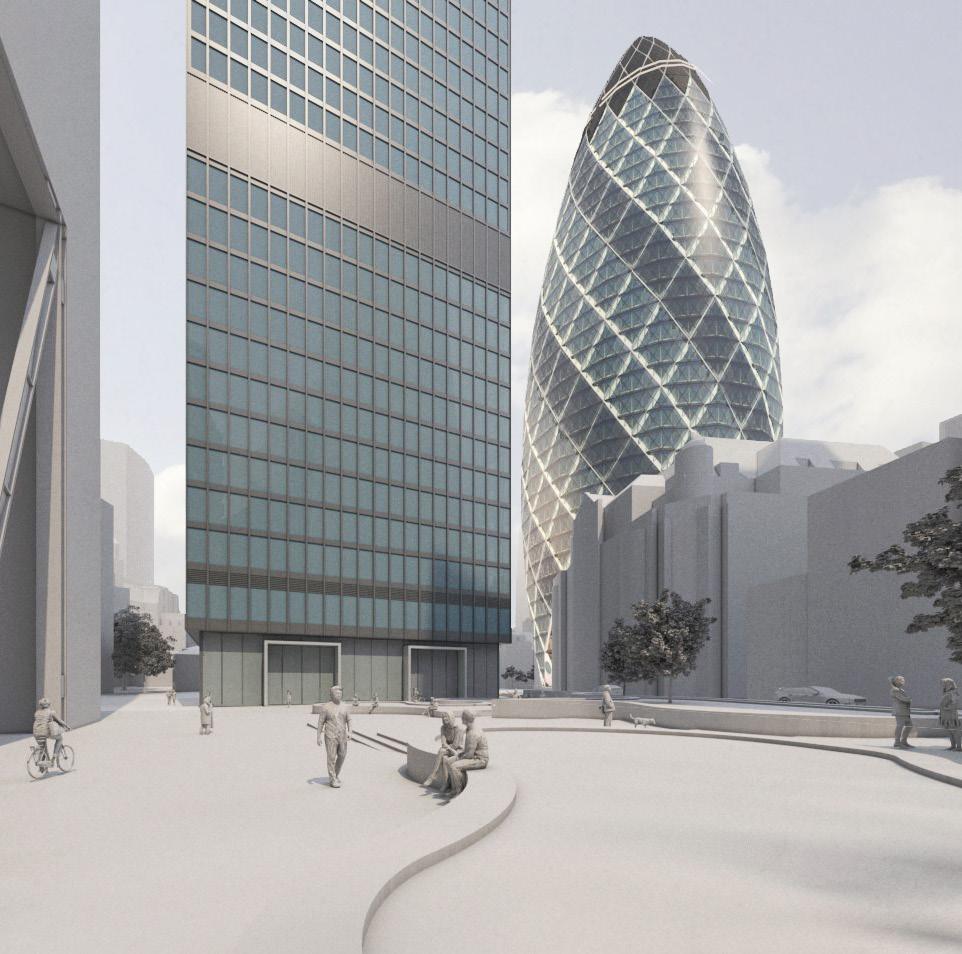
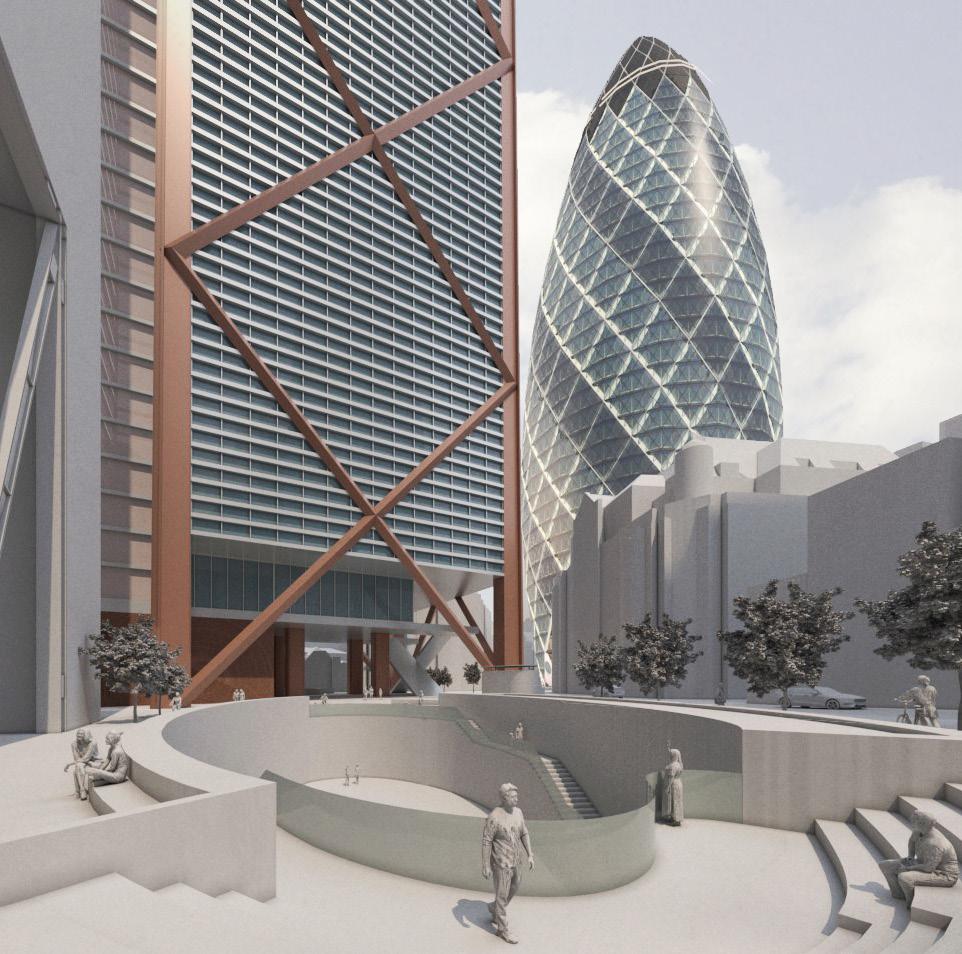
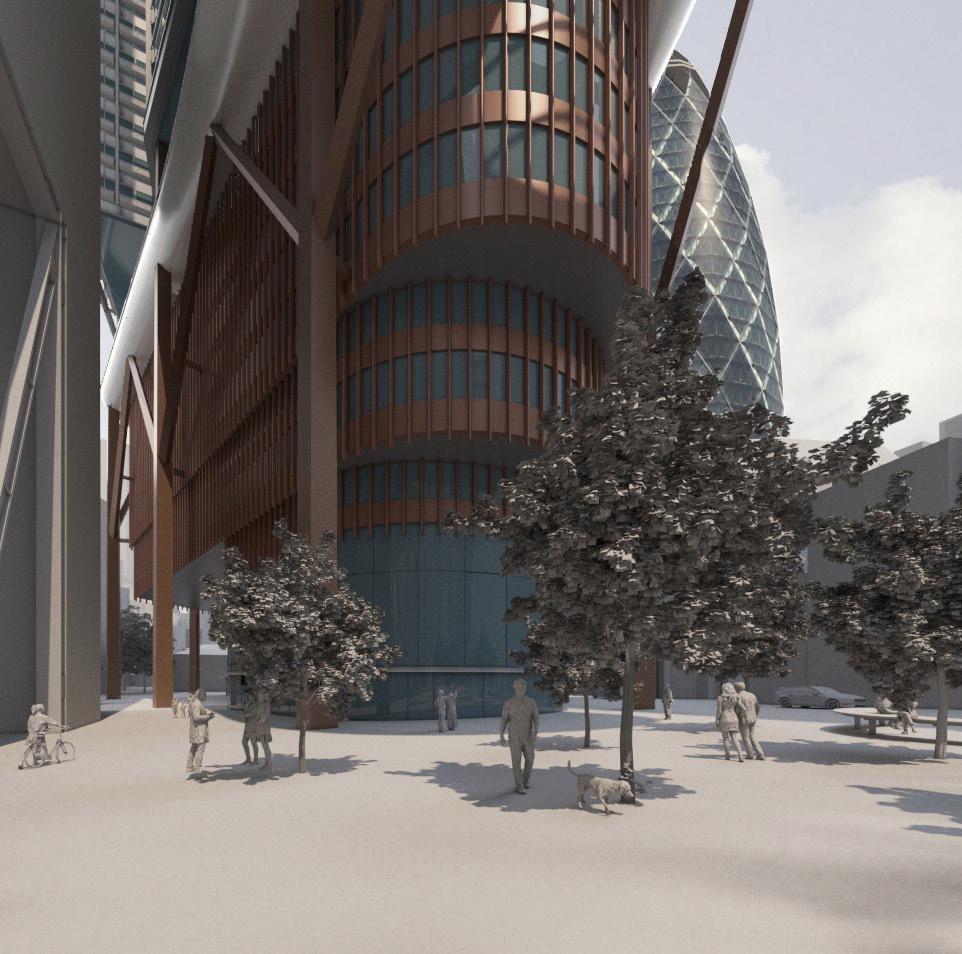
As a stakeholder in the City of London, C C Land object to the 2023 redevelopment plans for 1 Undershaft on the following grounds:
– The proposals would result in the loss of a significant area of St Helen’s Square, because of the enlarged footprint.
– The remaining area of St Helen’s Square would be seriously harmed by the protruding tongue, and the overhang of office structure.
– The area for pedestrian movement would be reduced, even though there will be a significant increase in pedestrian flows.
– The area for recreation, sitting, quiet enjoyment, play and reflection, and hosting events, would be seriously reduced because of the loss of street level public open space.
– The quality of the remaining area of public open space would be dramatically reduced, it would be almost entirely covered, with the experience of the sky and being open to the elements lost by the overhanging structures which would extend almost as far as Leadenhall Street itself.
– The spatial qualities and robust character of St Helen’s Square would be lost.
– The unique experience of the skyline framed by outstanding examples of 16th, 20th and 21st Century architecture would be lost.
– The sunlight enjoyed from spring to the autumn, and the setting of two Grade I Listed buildings seriously harmed by the projecting and overhanging office structure and white tongue of the terraced gardens.
– The proposals do not deliver a beautiful building in an area of architectural excellence.
The 2023 redevelopment plans for 1 Undershaft do not comprise the optimum solution for this critical site in the City Cluster.
If the proposals remain unchanged, we believe Officers should not support the 2023 redevelopment plans and the Planning Applications Sub Committee should refuse the application until the material issues outlined in this document are satisfactorily resolved.
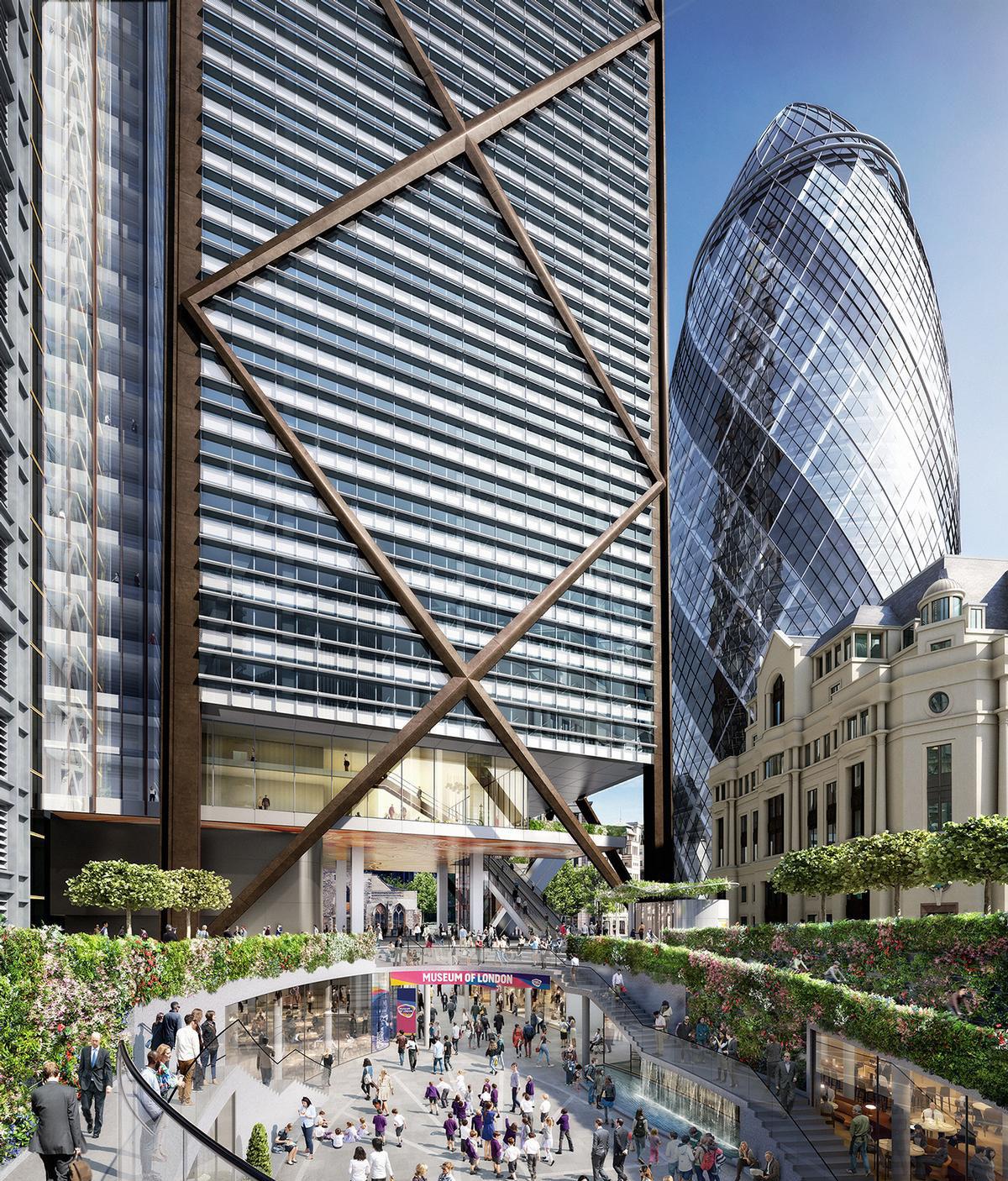
–
C C Land believe there are two alternative approaches for the redevelopment of 1 Undershaft which would overcome the concerns identified in this report, and achieve the aims of all parties, and the City of London, in the interests of the wider community.
The first is the 2019 planning consent, which is extant and is an exemplary building, slender and brilliantly designed from street level up. This building delivered an enhancement to the quality and area of St Helen’s Square by two major interventions:
The refurbishment of St Helen’s Square, including the creation of a lower ground level plaza; and
– An extension of the public square under the new building in a full height space that would have connected the Grade I Listed churches visually, a significant indirect benefit of the proposals.
The second alternative approach is to reduce the massing of the protruding blocks and lower sections of the proposed redevelopment, and to pull the footprint back to reduce, if not avoid the loss of any public open space at street level and remove the projecting tongue which overhangs the open space.
The unique qualities of St Helen’s Square would be protected and enhanced. A building of outstanding architectural quality, and considerable stature, providing a variety of depth of floor plates, and a range of working and leisure experiences, would be created, following the vision for the Eastern Cluster.
We request that revisions are implemented to the 2023 redevelopment plans for 1 Undershaft which deliver:
– No loss of street level public open space from the existing situation
– Preserve and enhance St Helen’s Square as a vitally important civic space and focus for placemaking in the City Cluster for workers, residents and visitors
– No harmful townscape or heritage impact
– Architectural excellence within the City Cluster
C C Land look forward to having a constructive discussion with the City of London, the Applicant, and other stakeholders about the design of the 1 Undershaft proposals, and their relationship to St Helen’s Square and the surrounding streets.
If the proposals remain unchanged, we believe Officers should not support the 2023 redevelopment plans and the Planning Applications Sub Committee should refuse the application until the material issues outlined in this document are satisfactorily resolved.
Planning Application Ref. No: 23/01423/FULEIA
Neighbour Consultation
Representations on behalf of C C Land – 23 April 2024
End of Main Report
